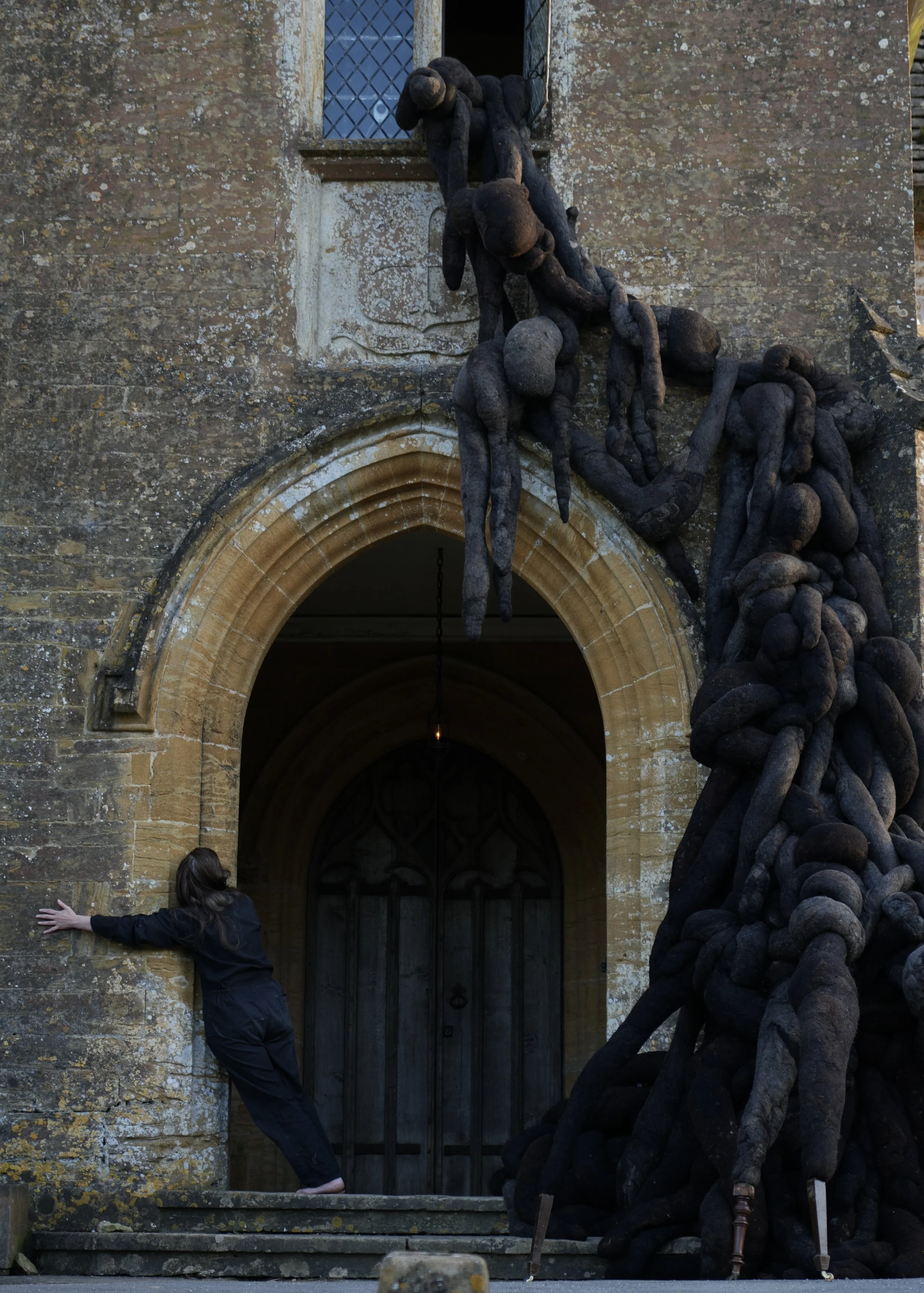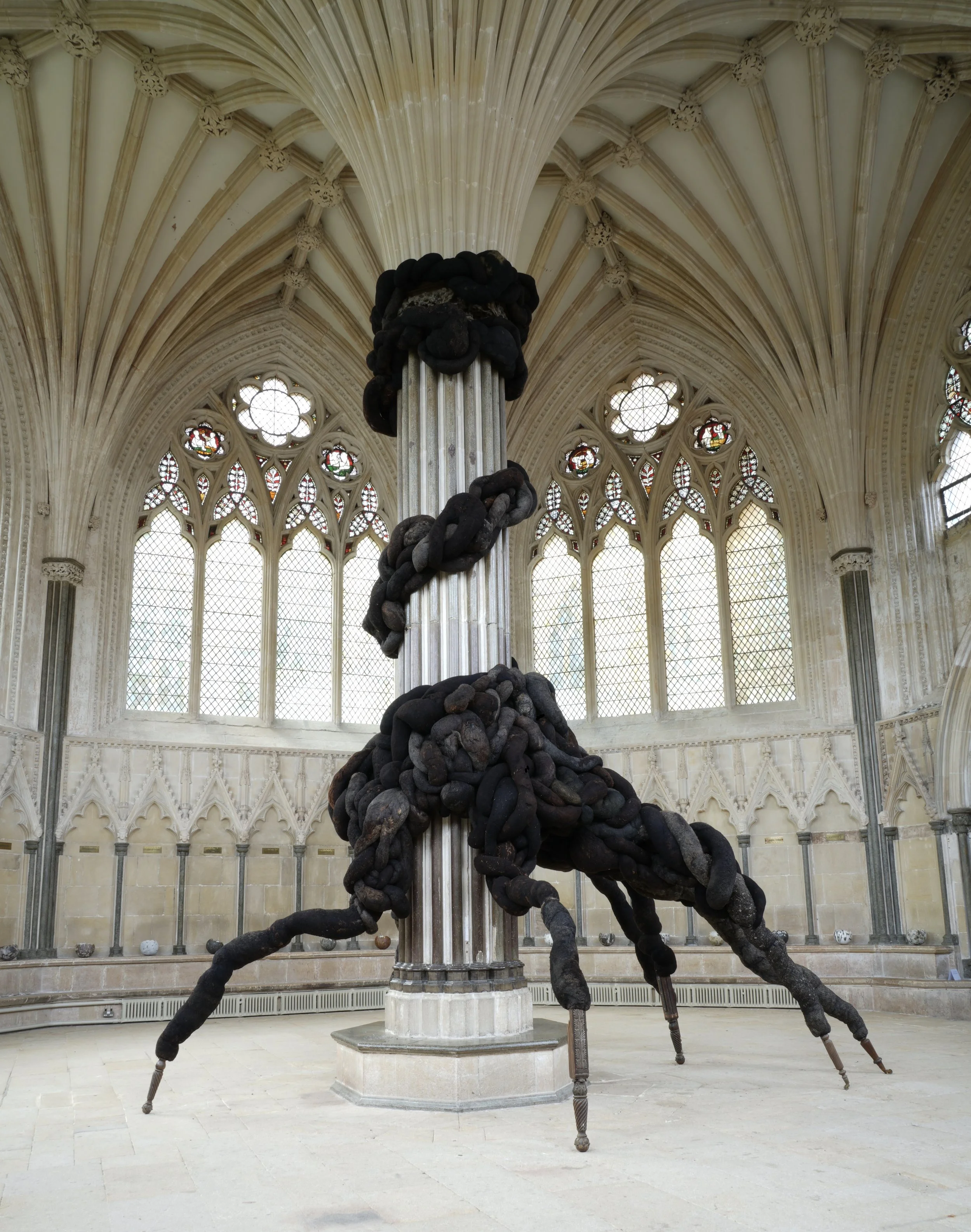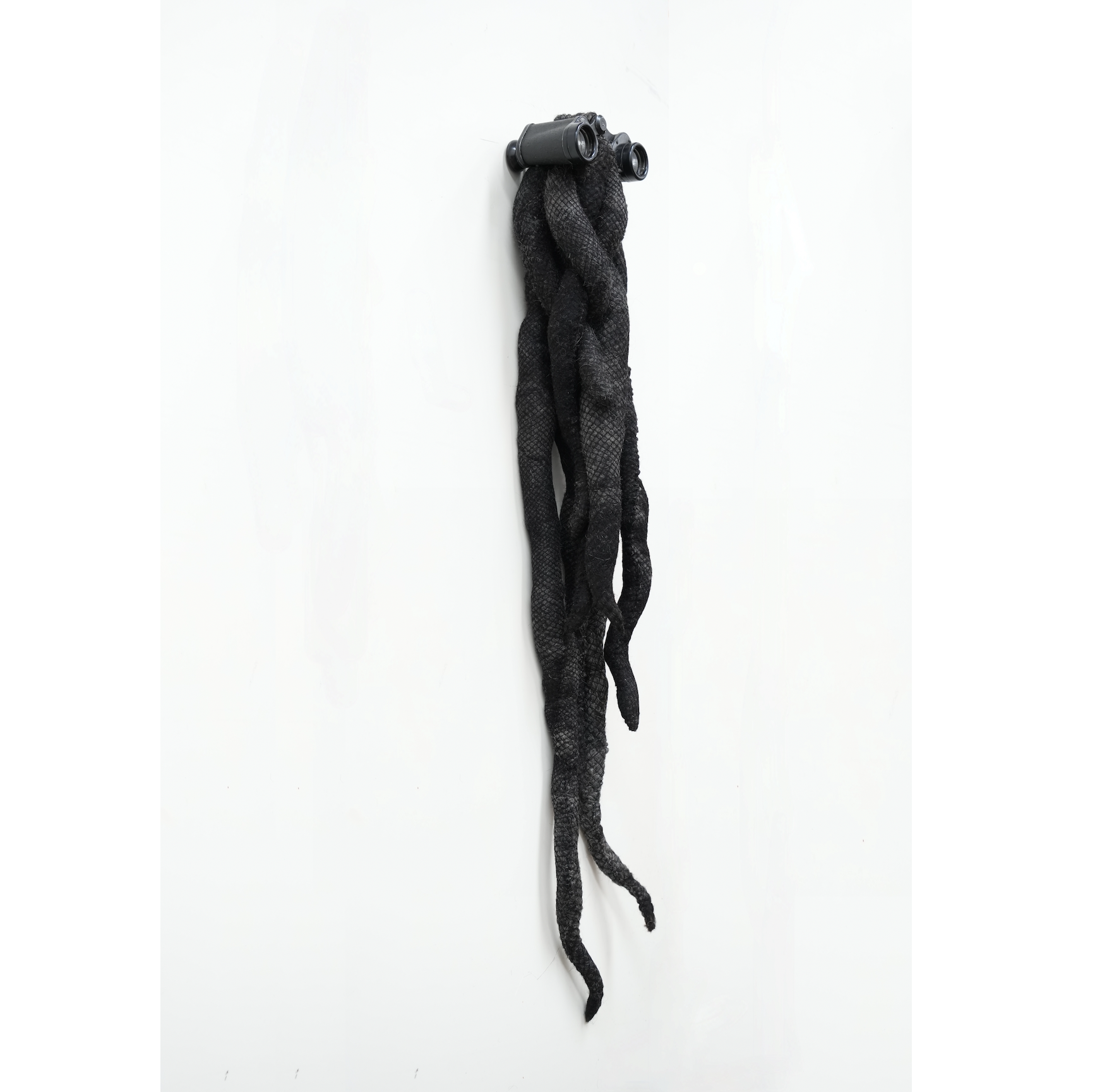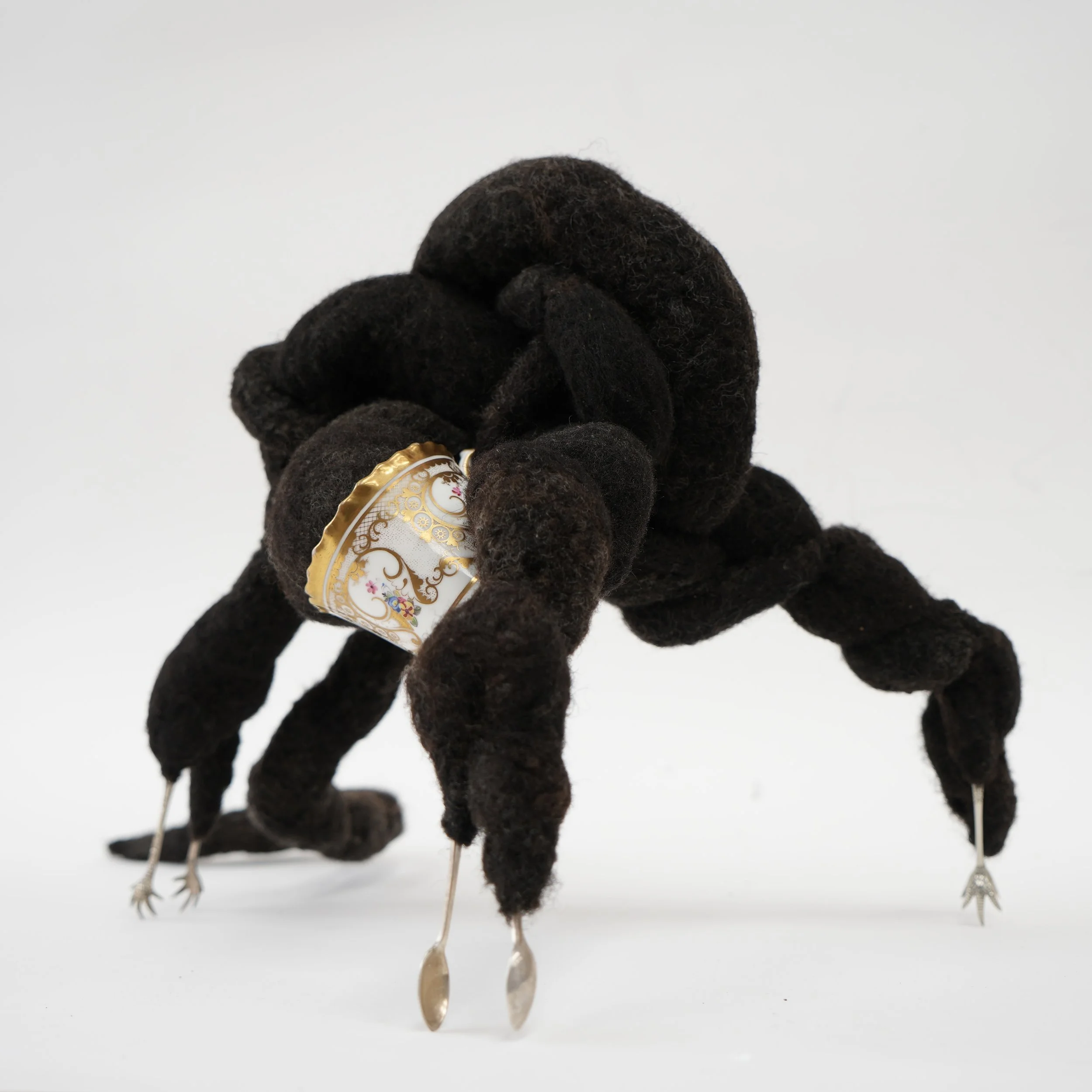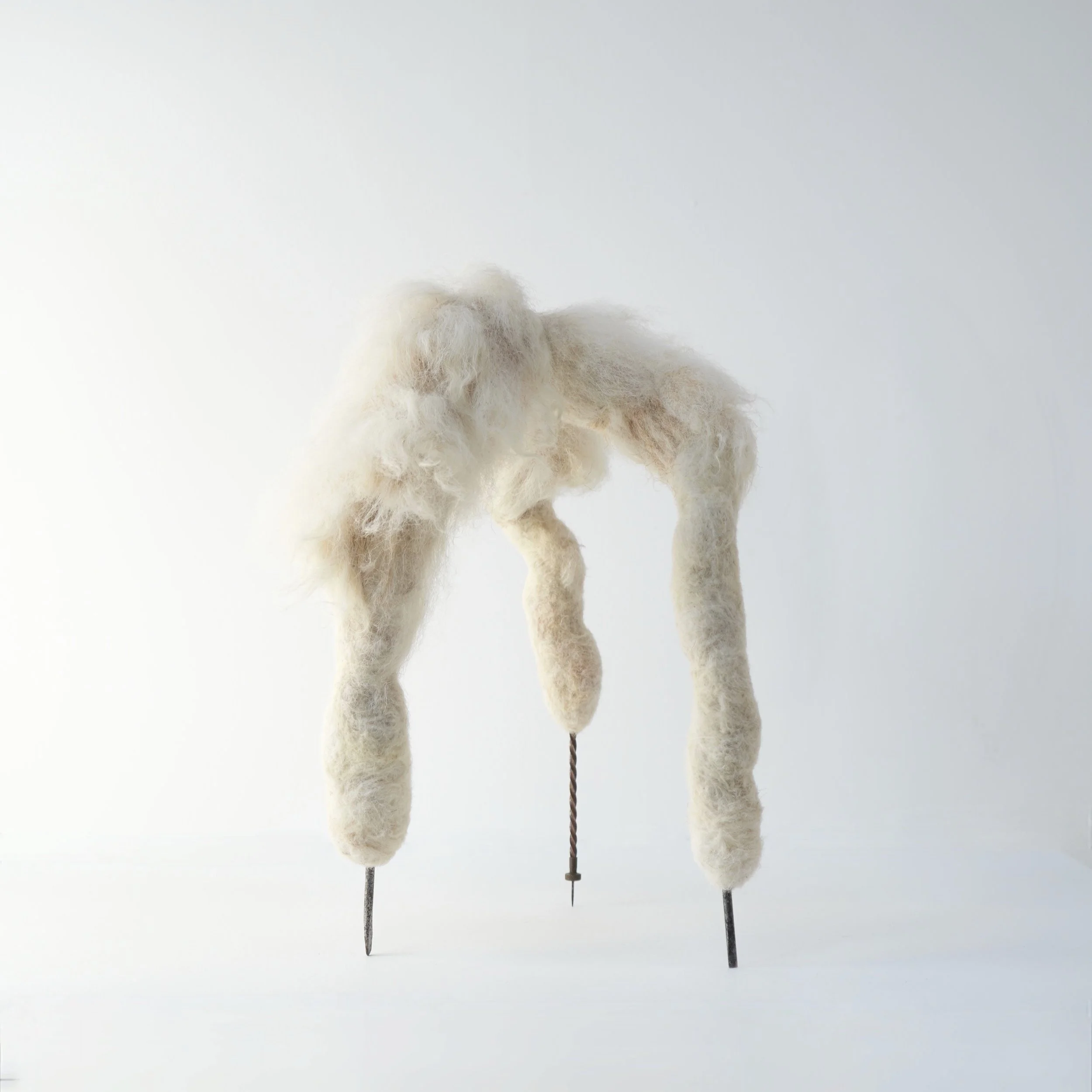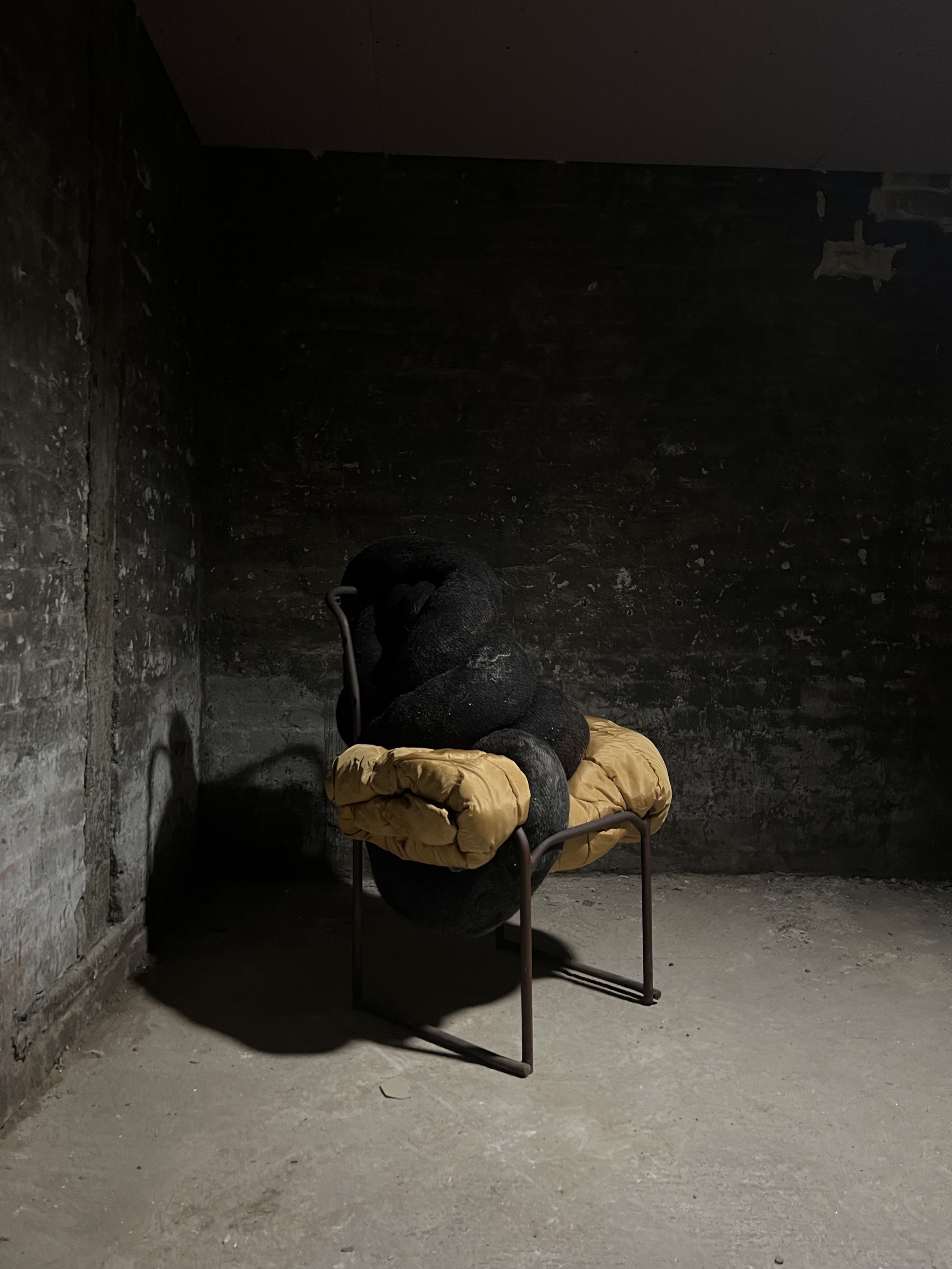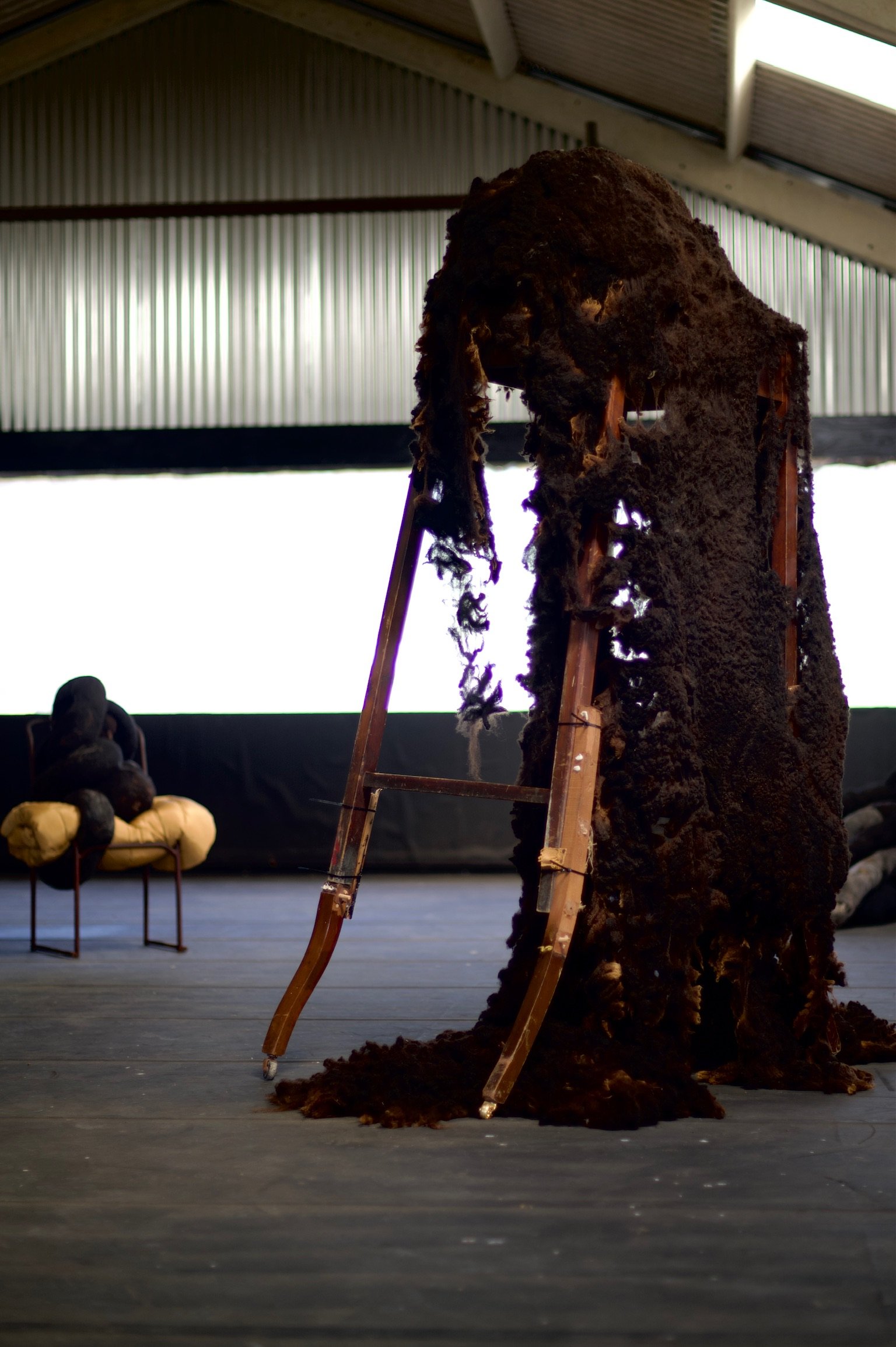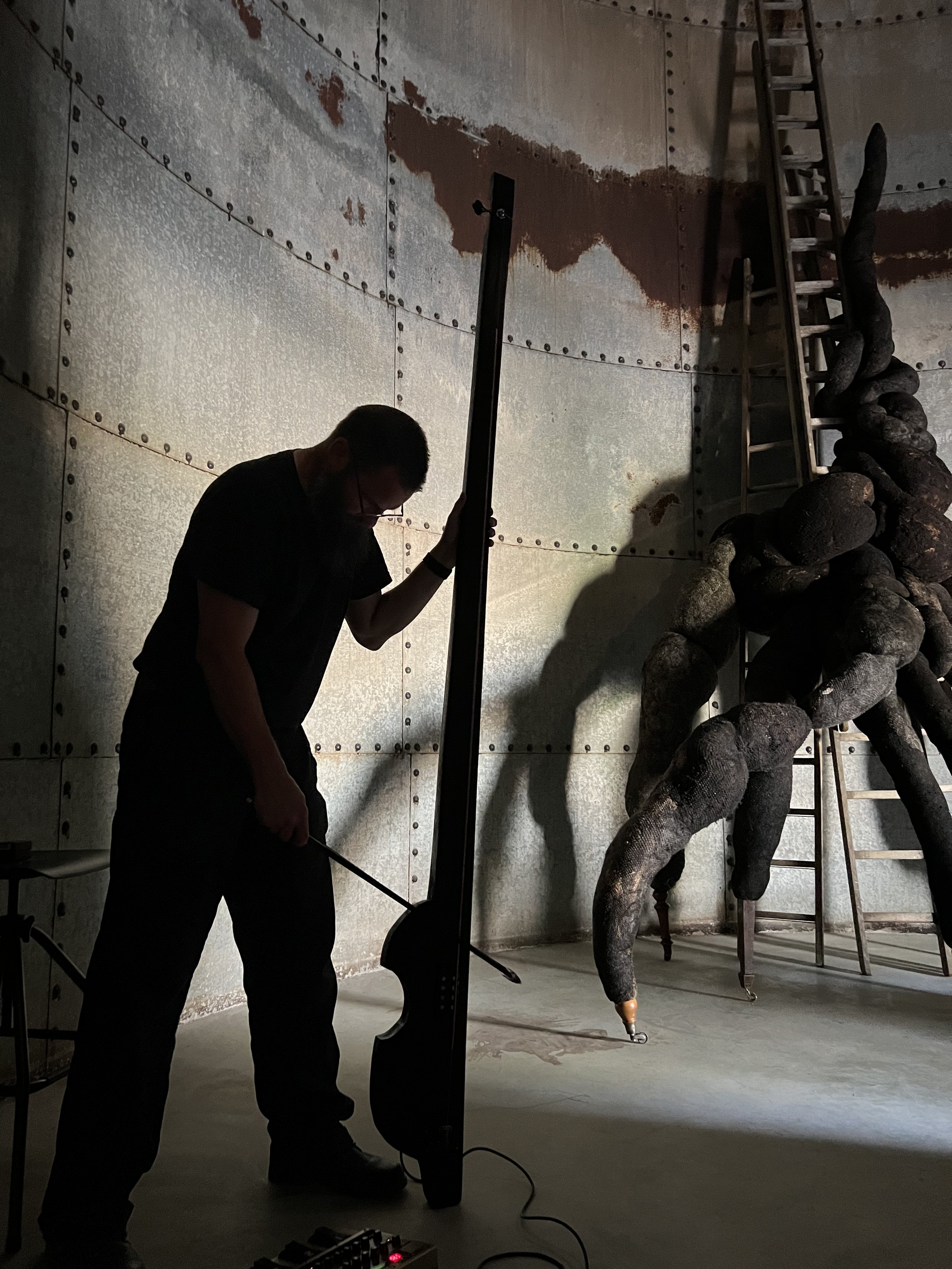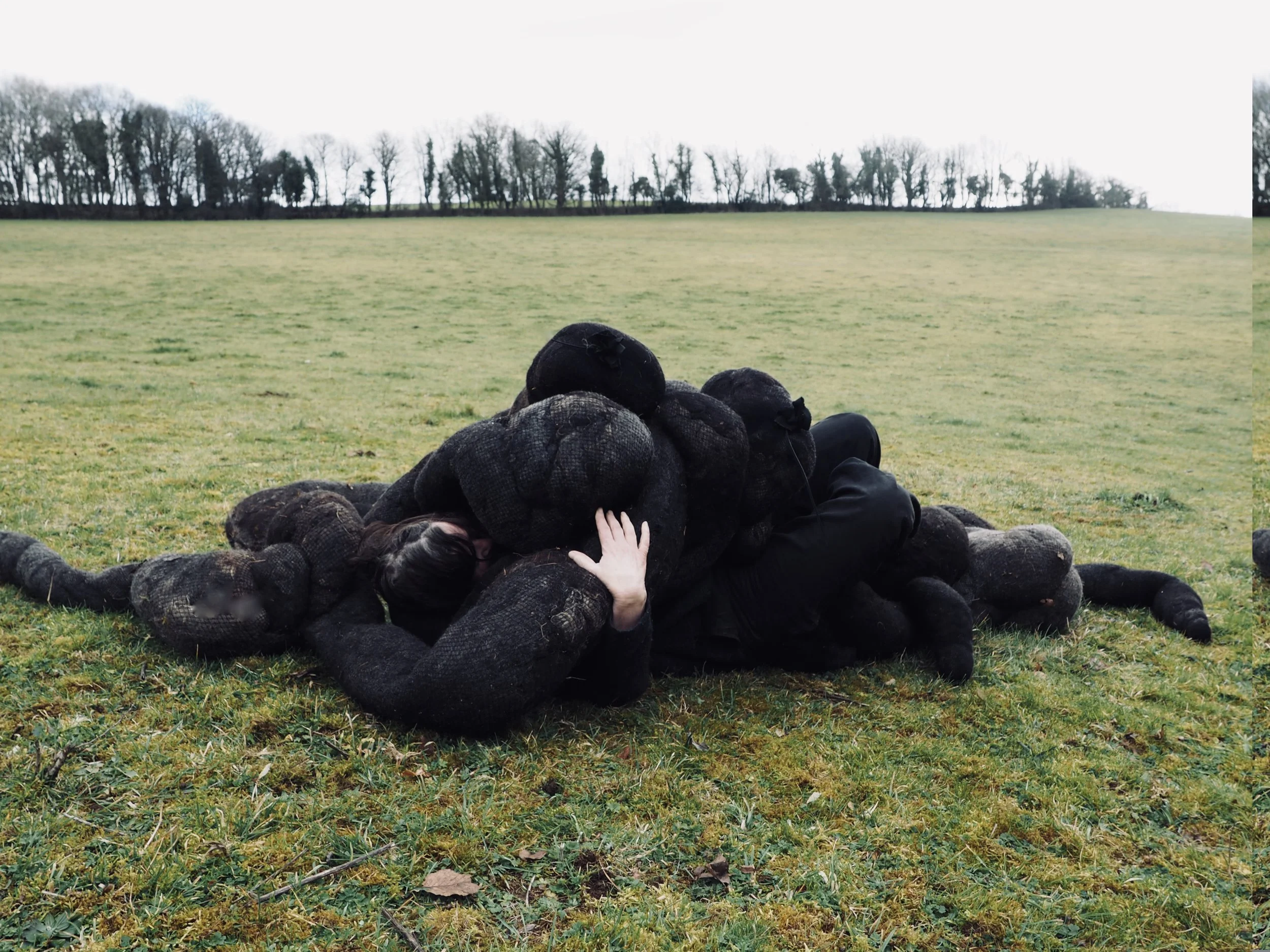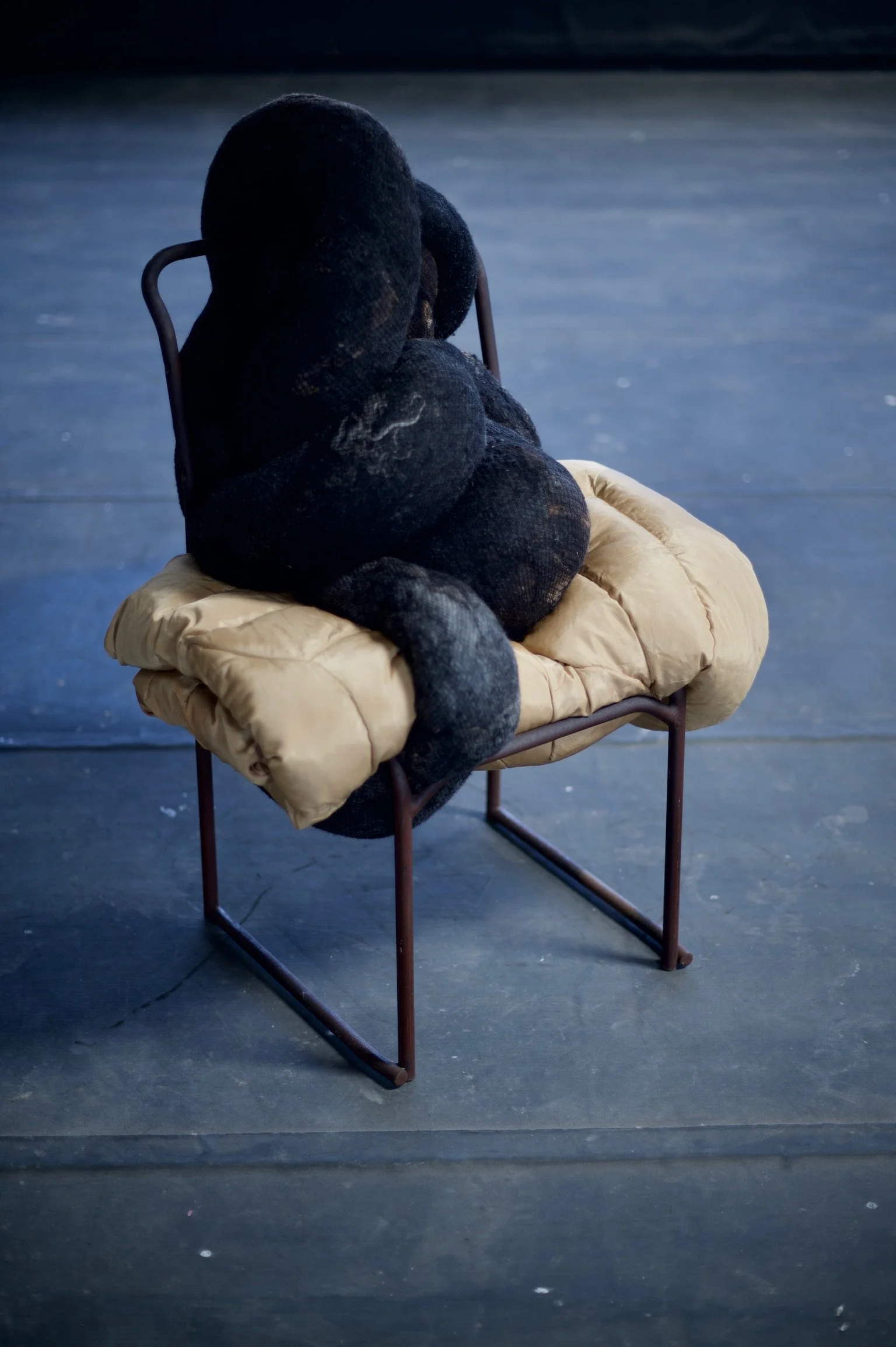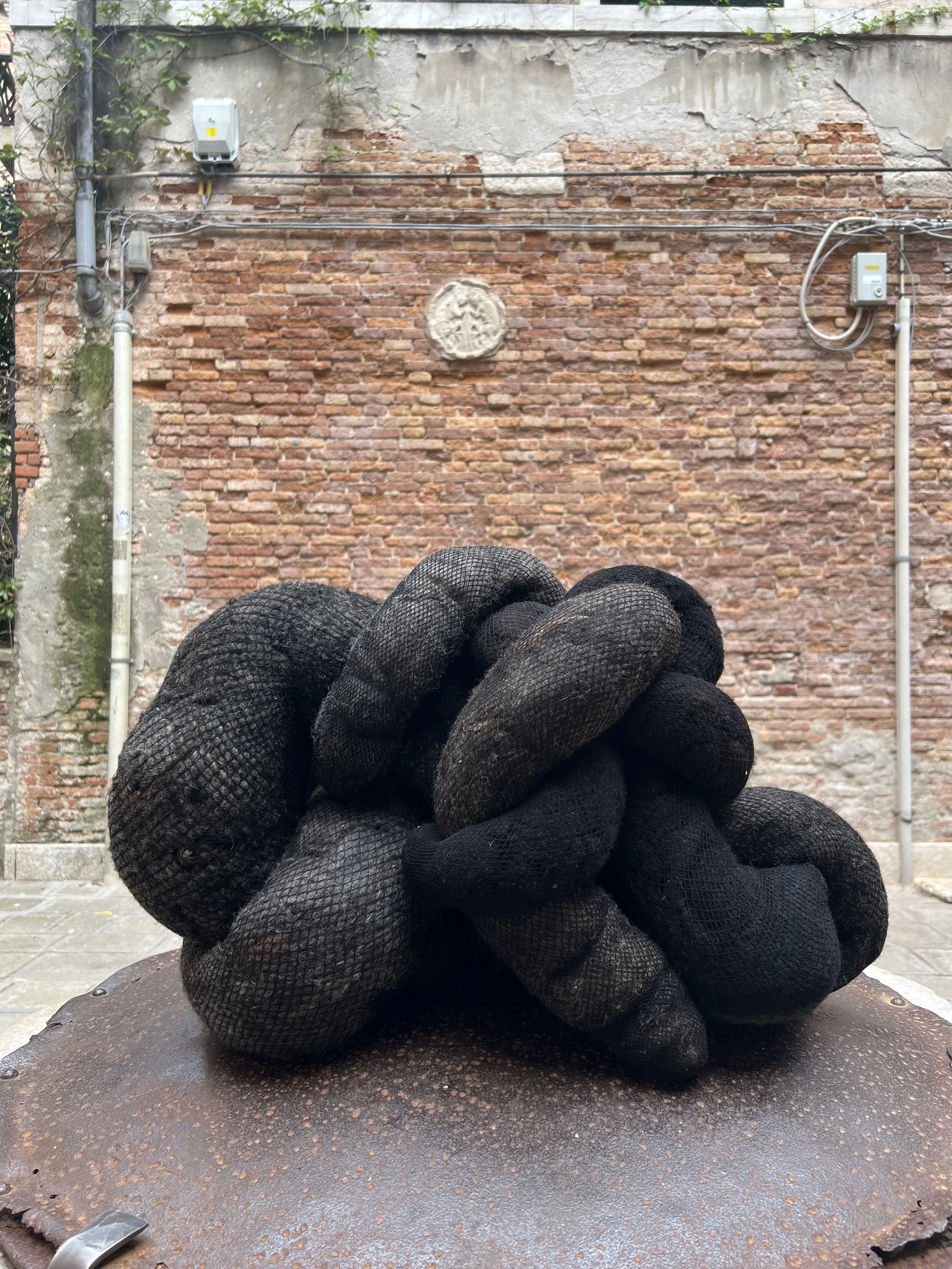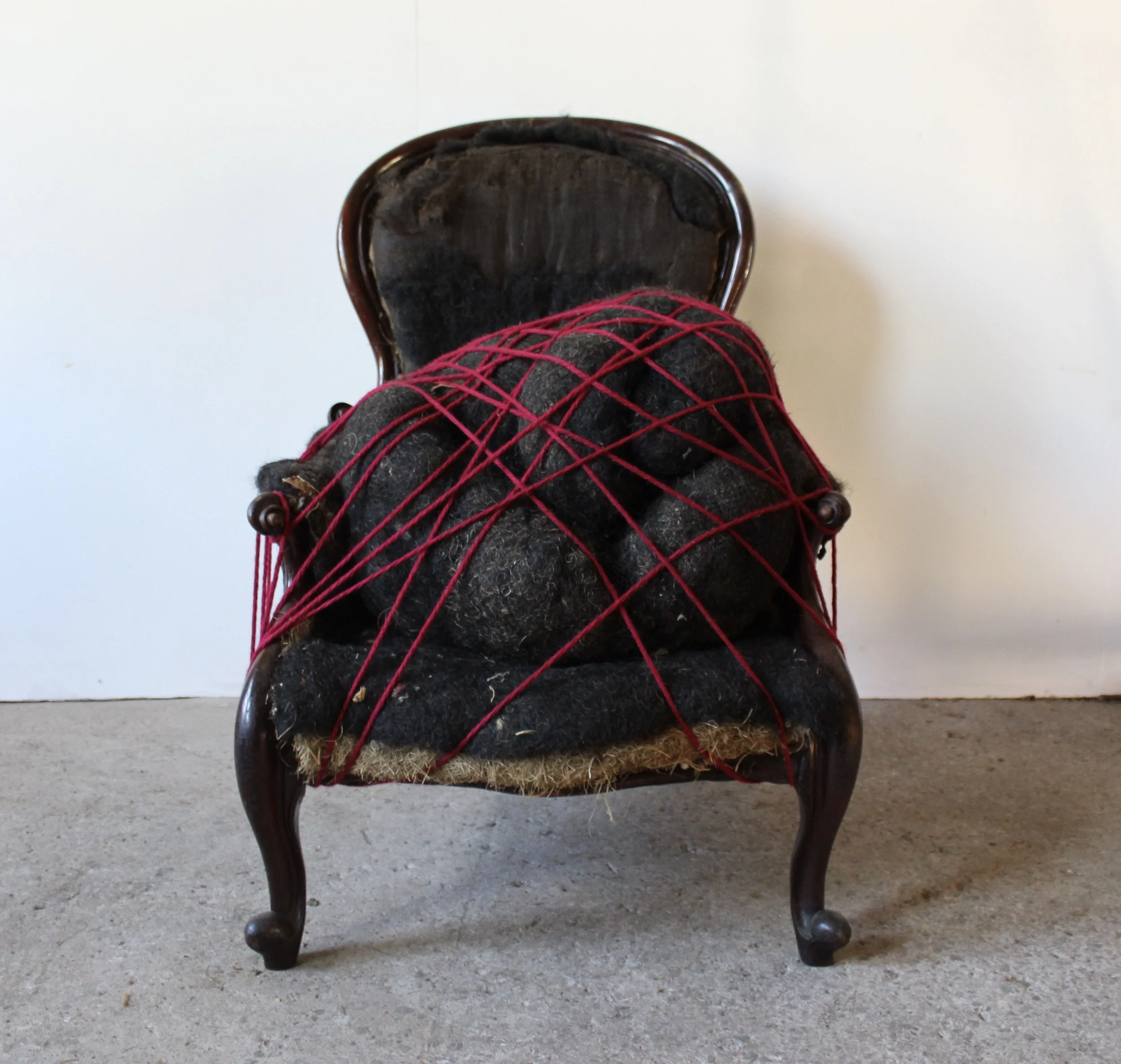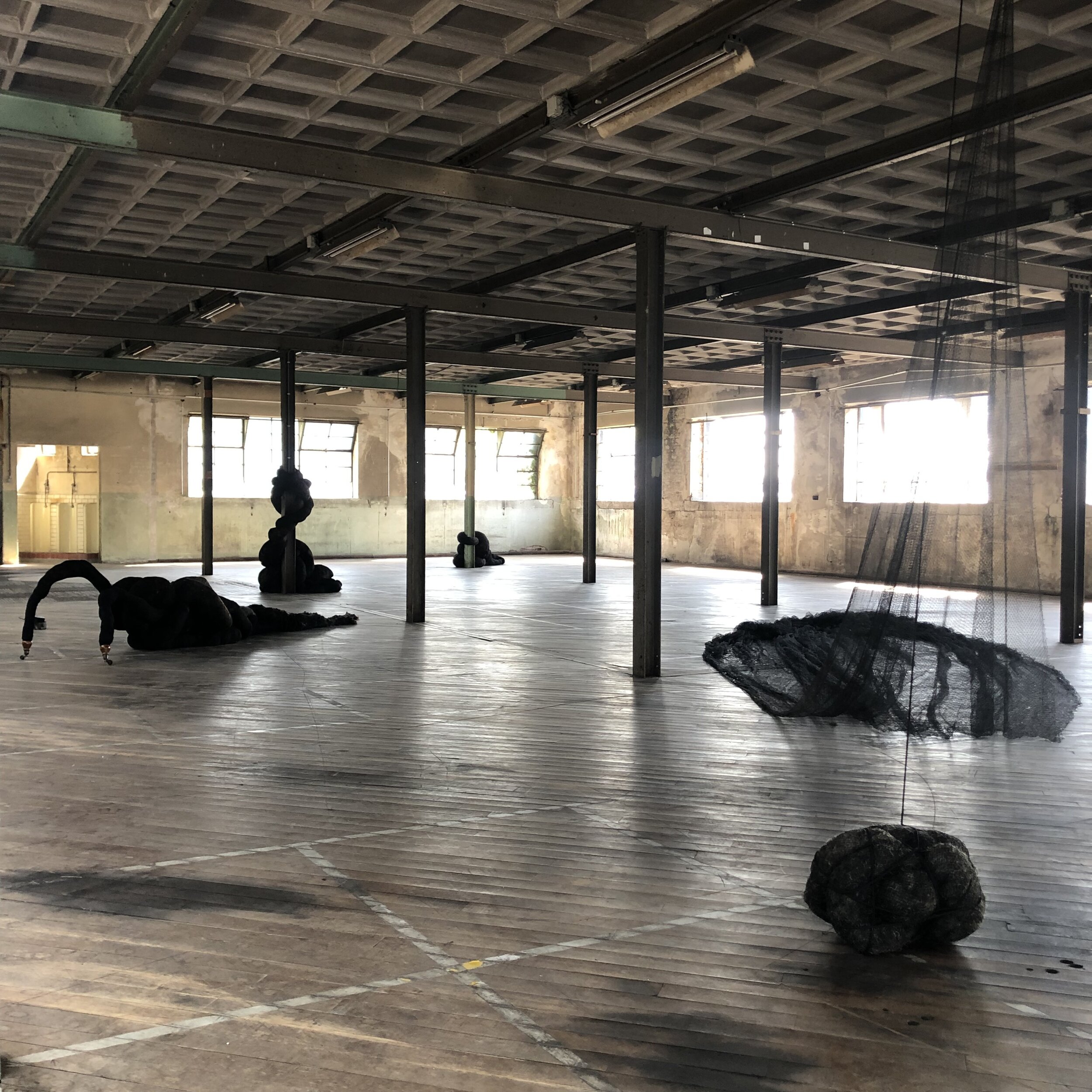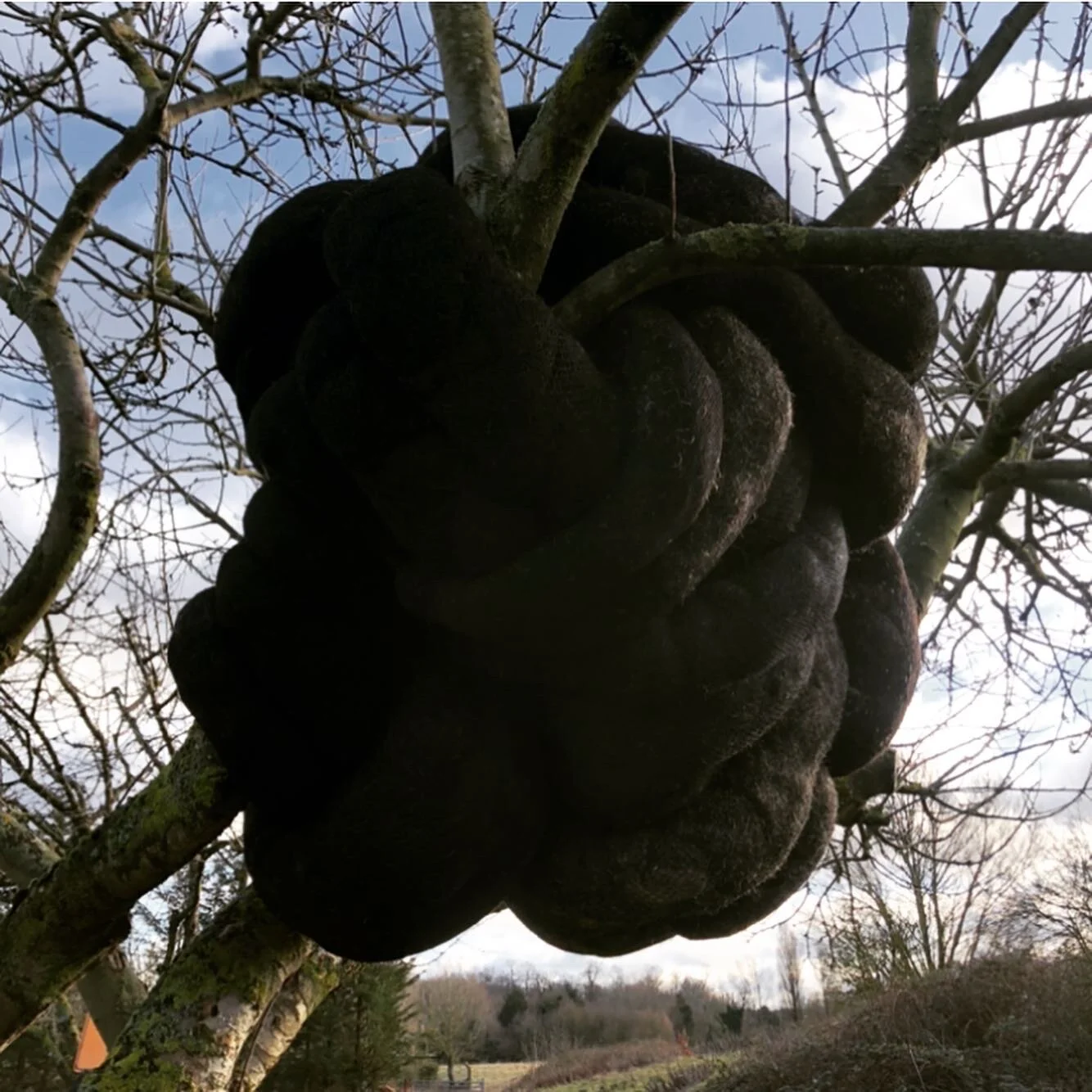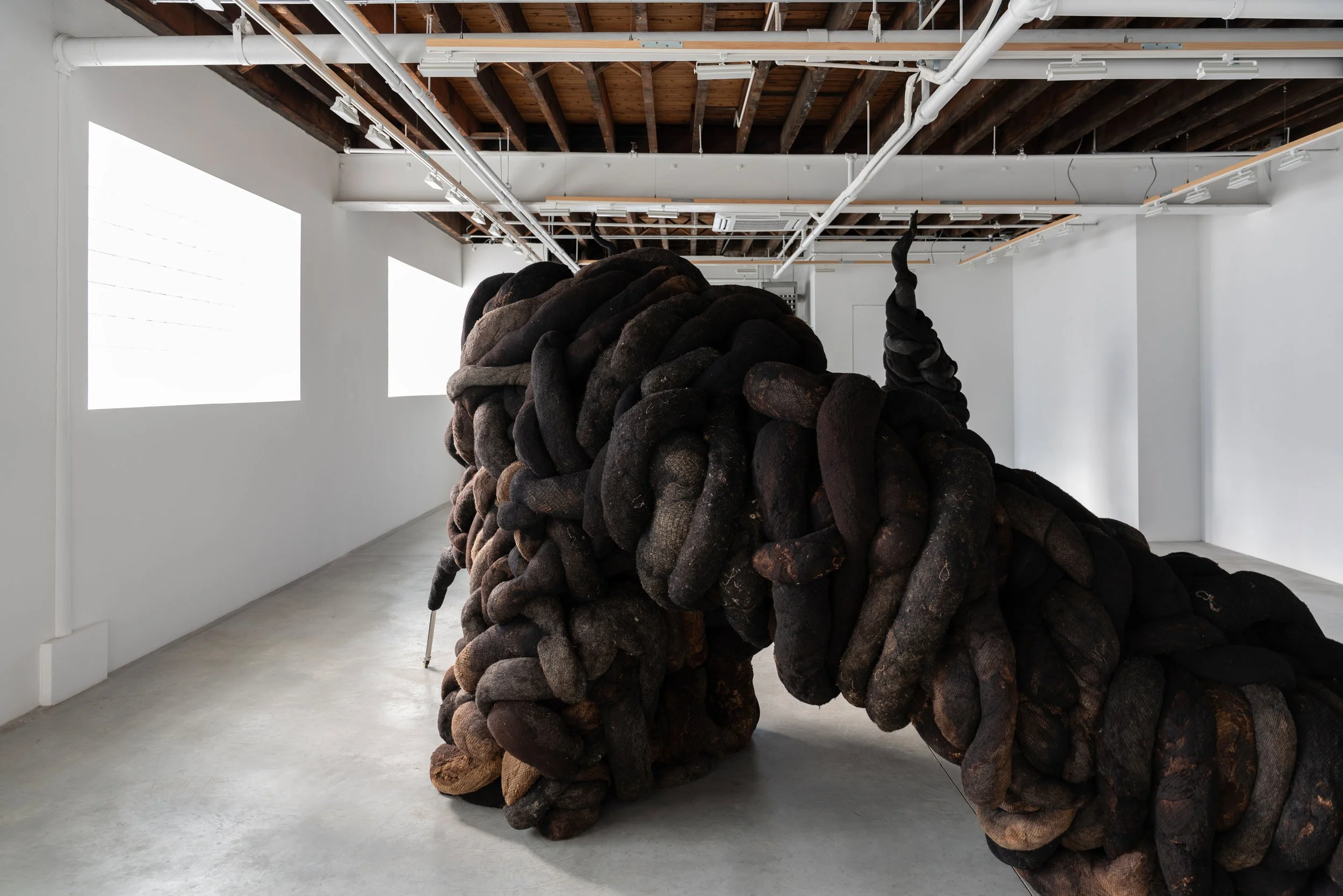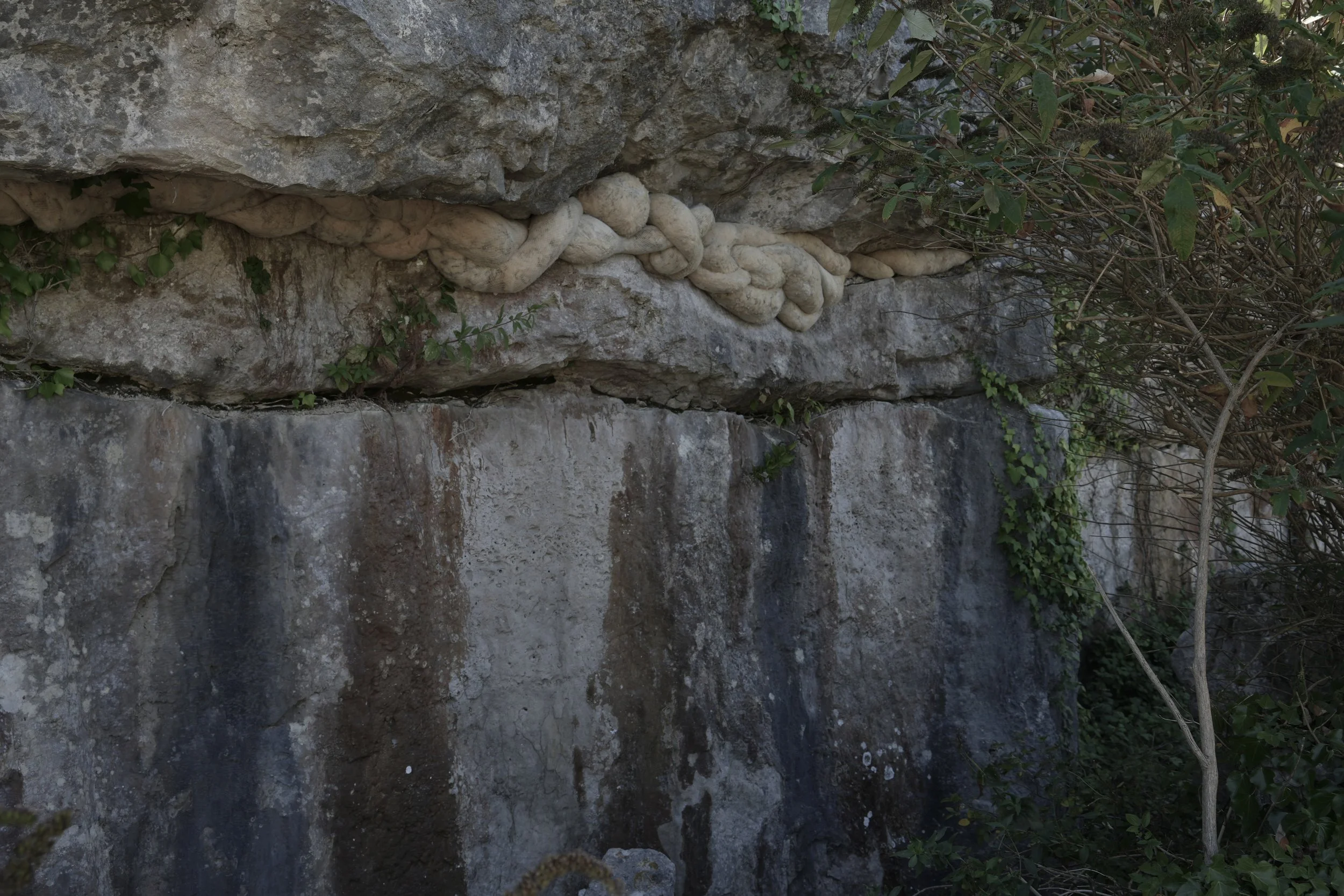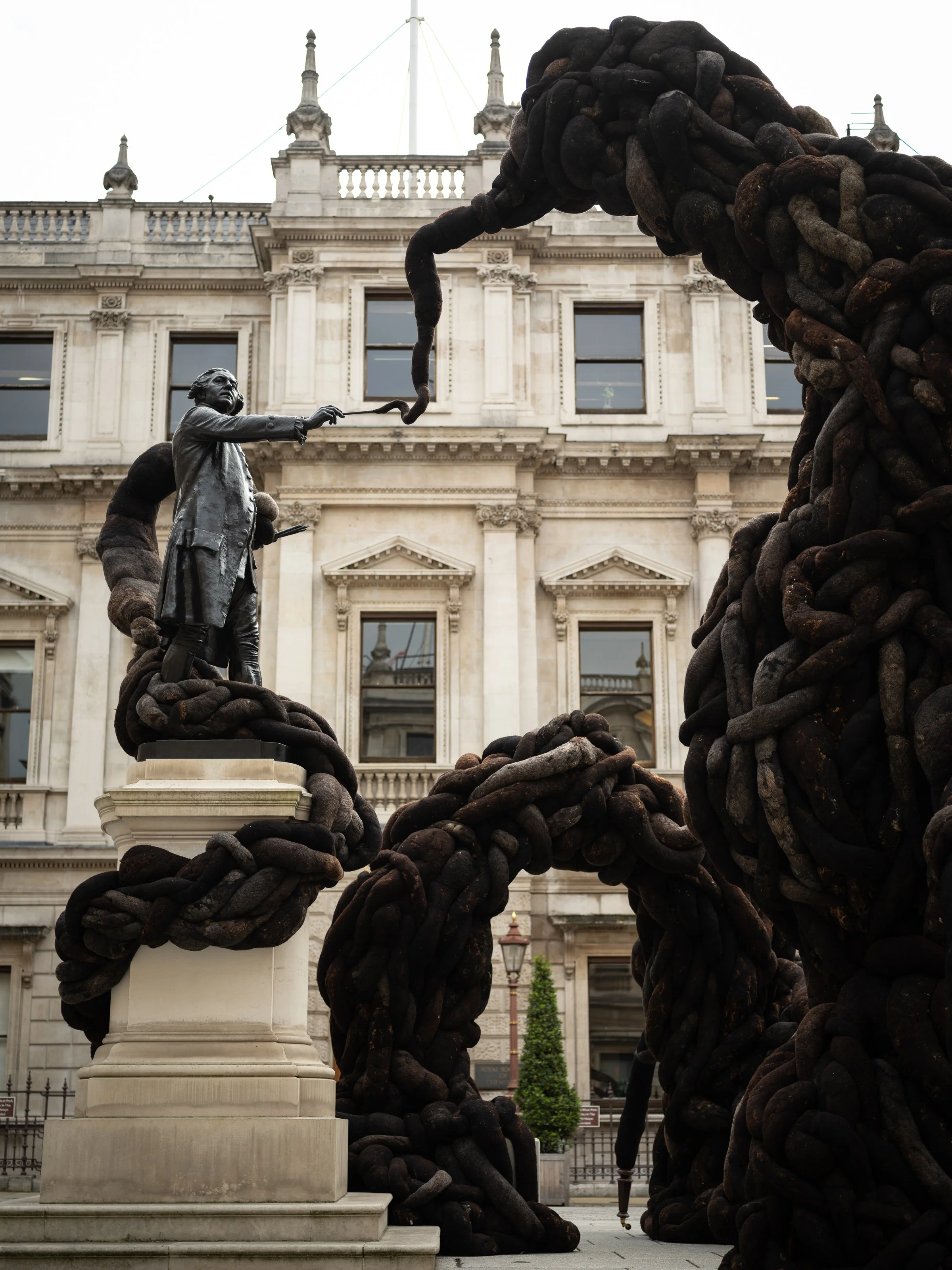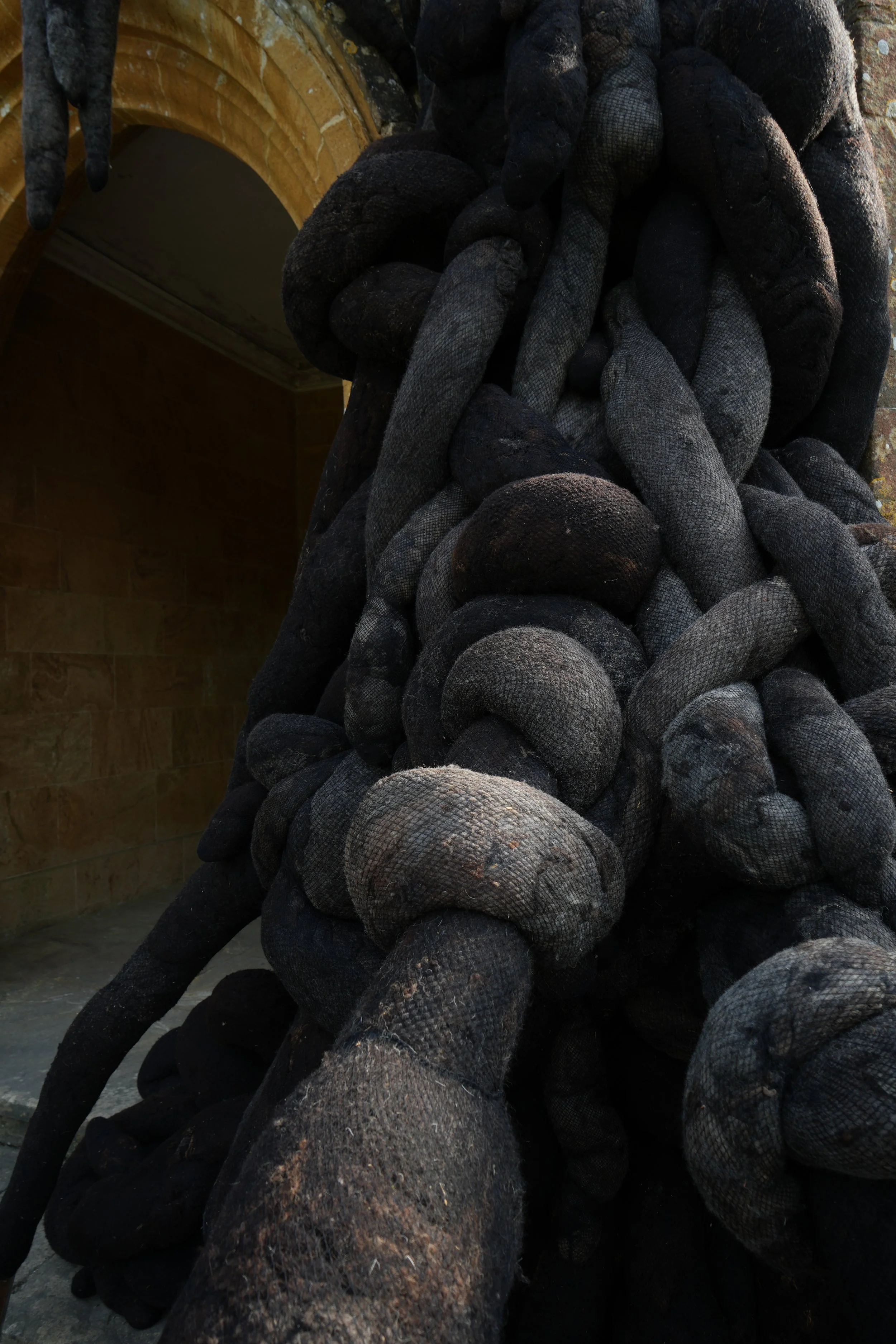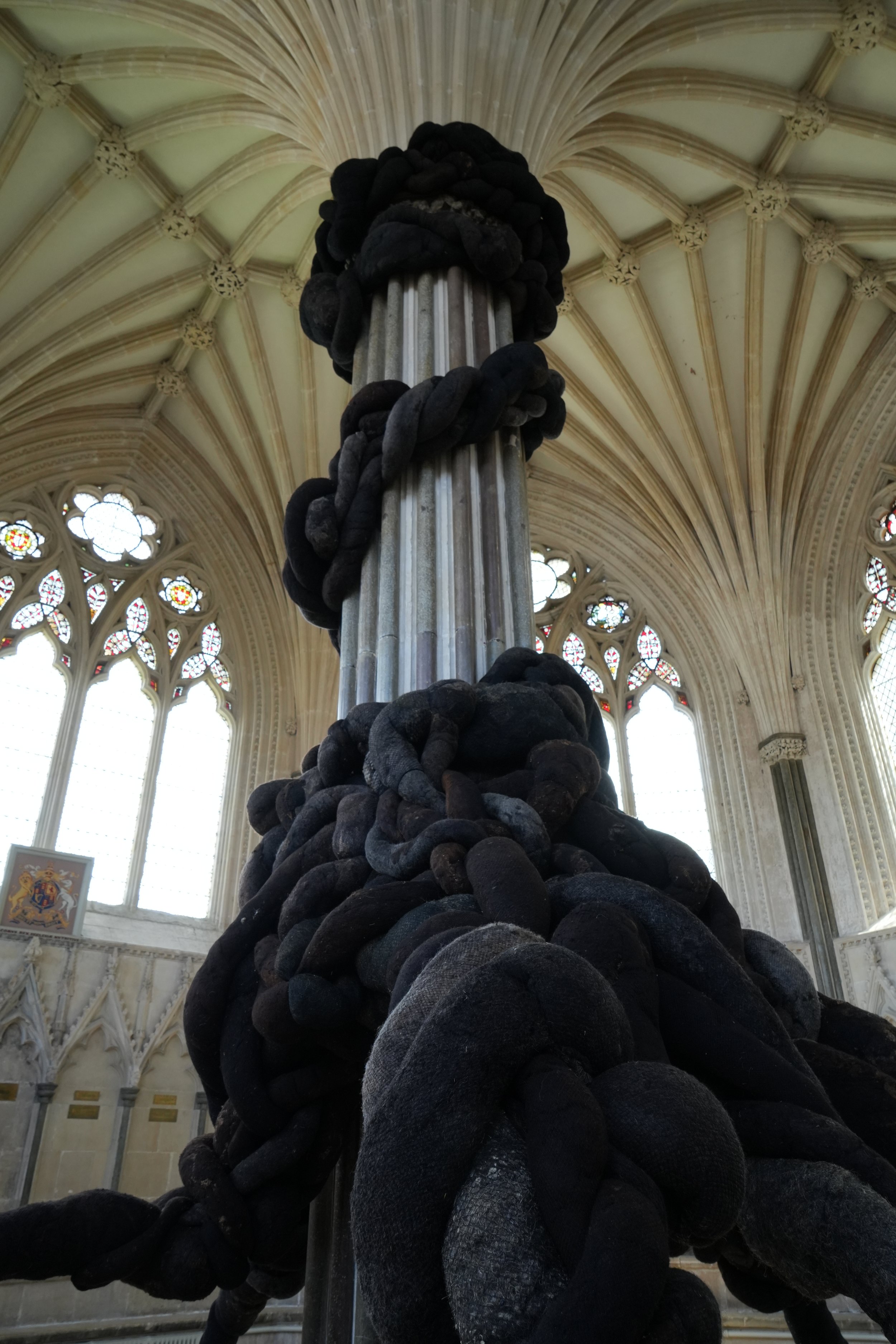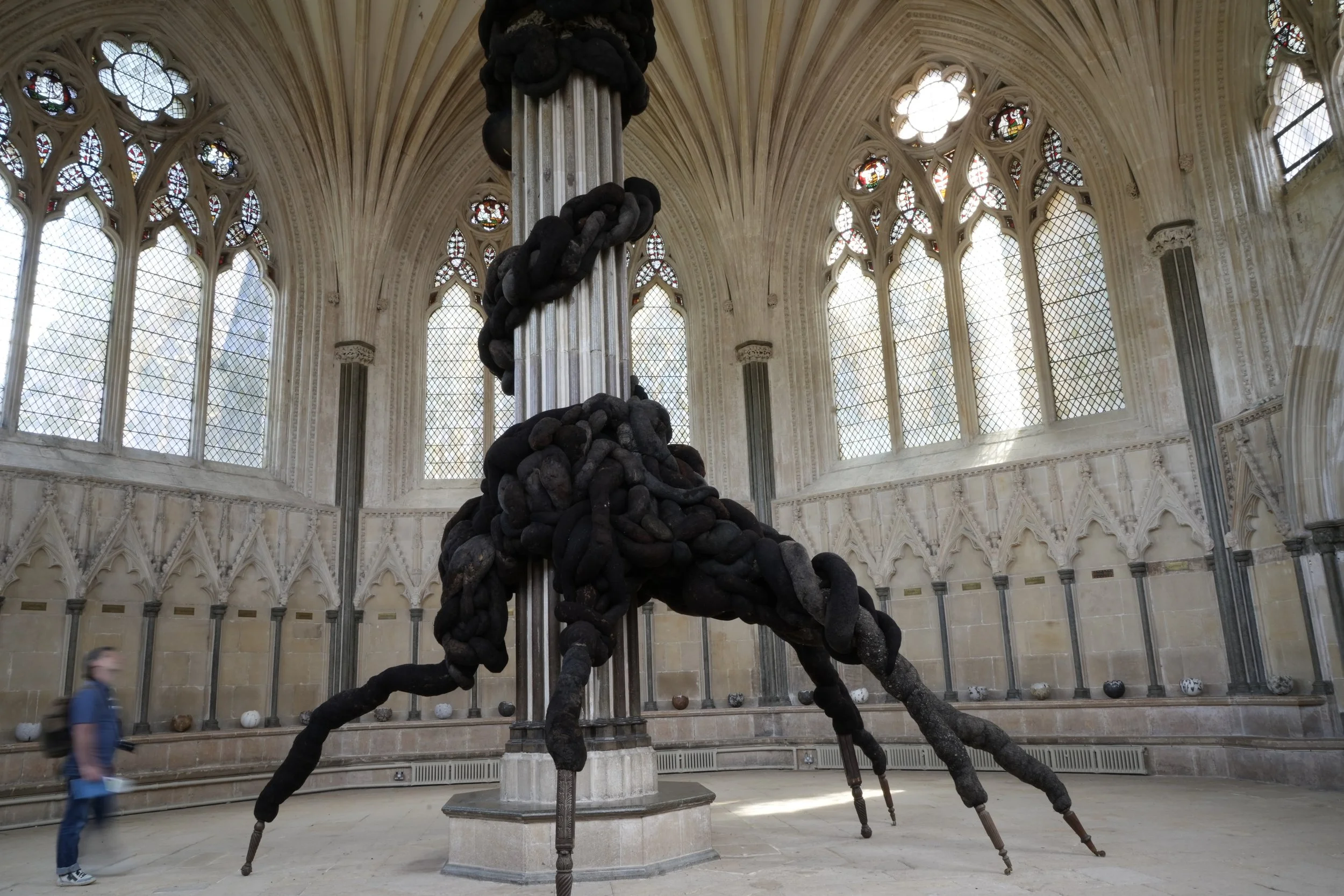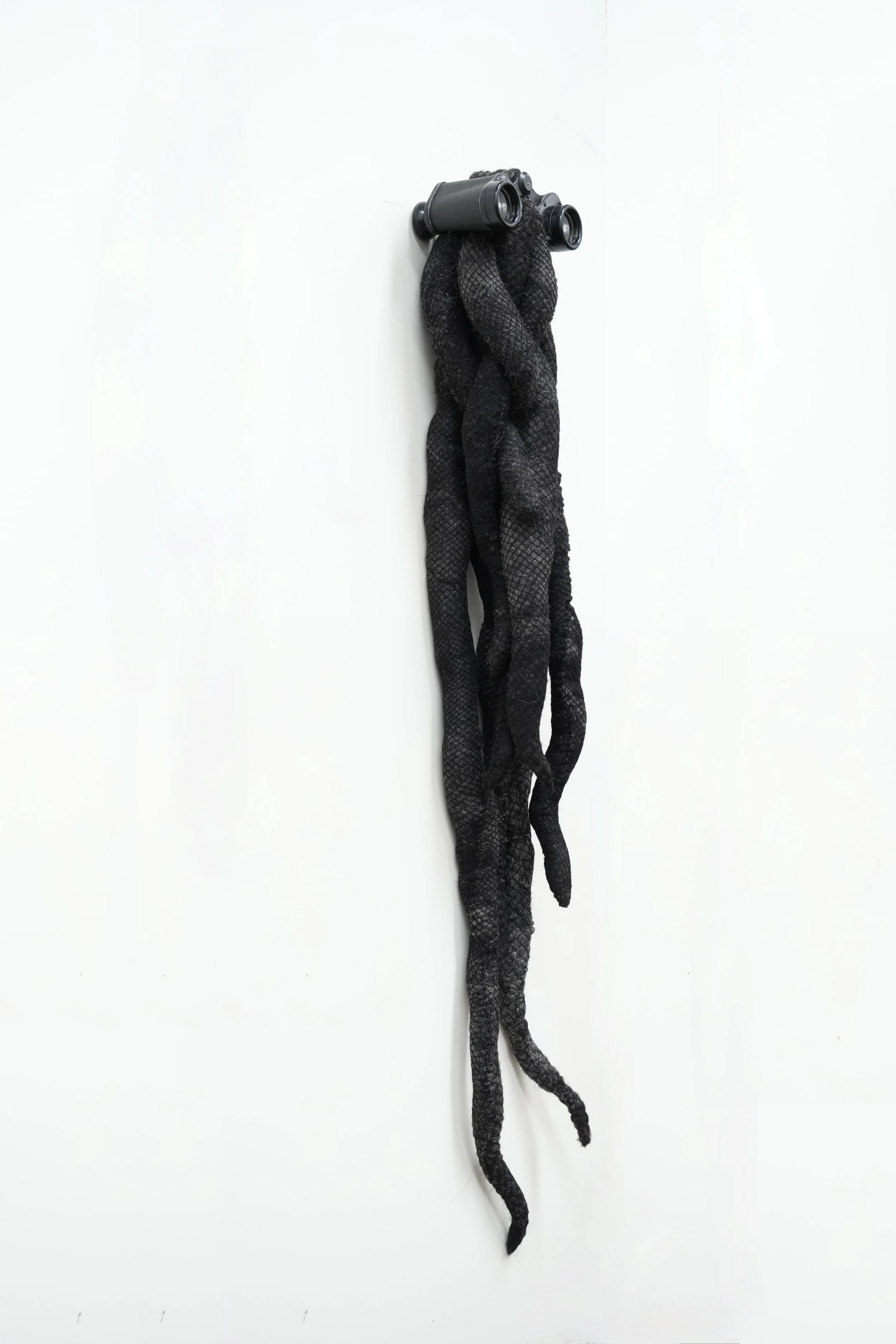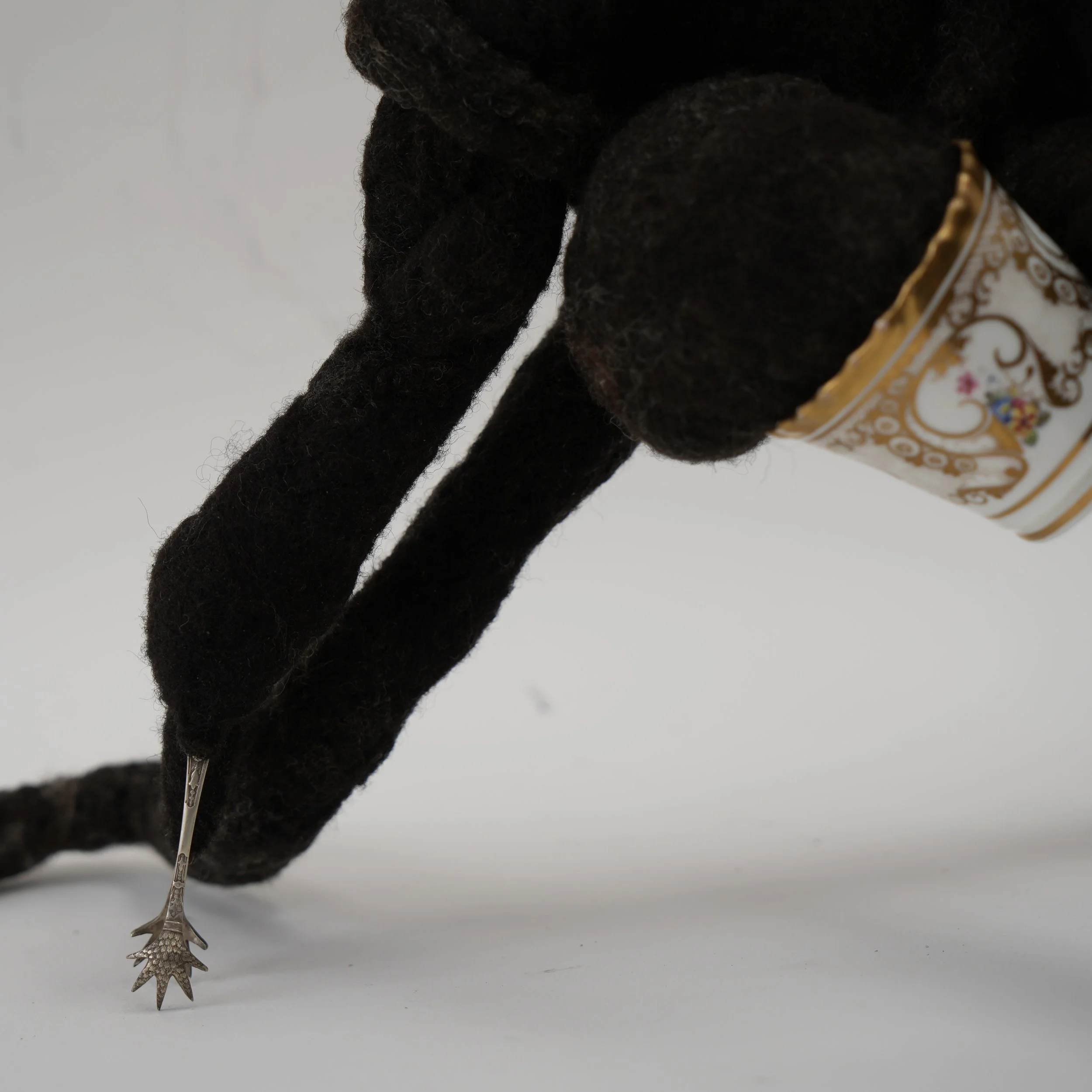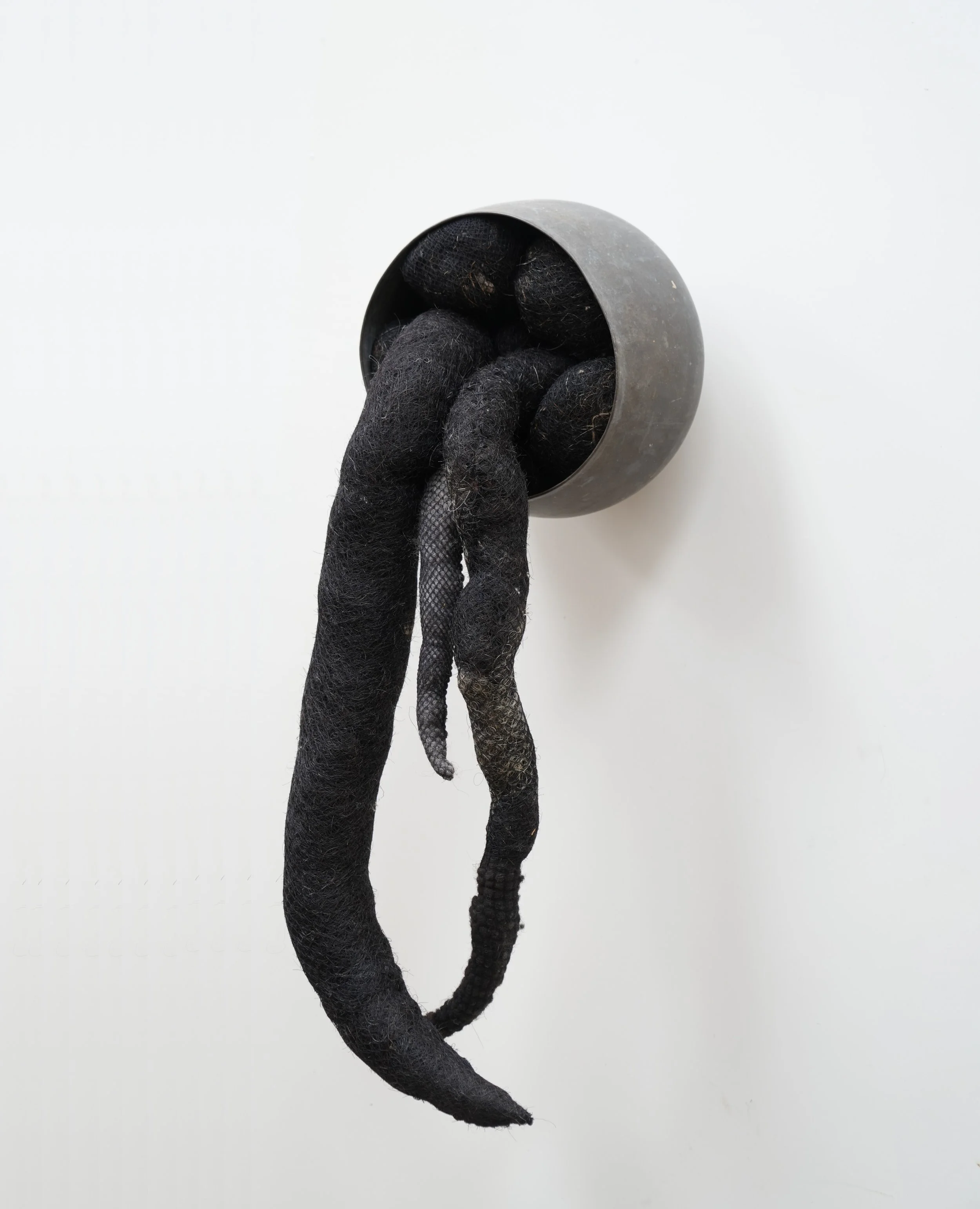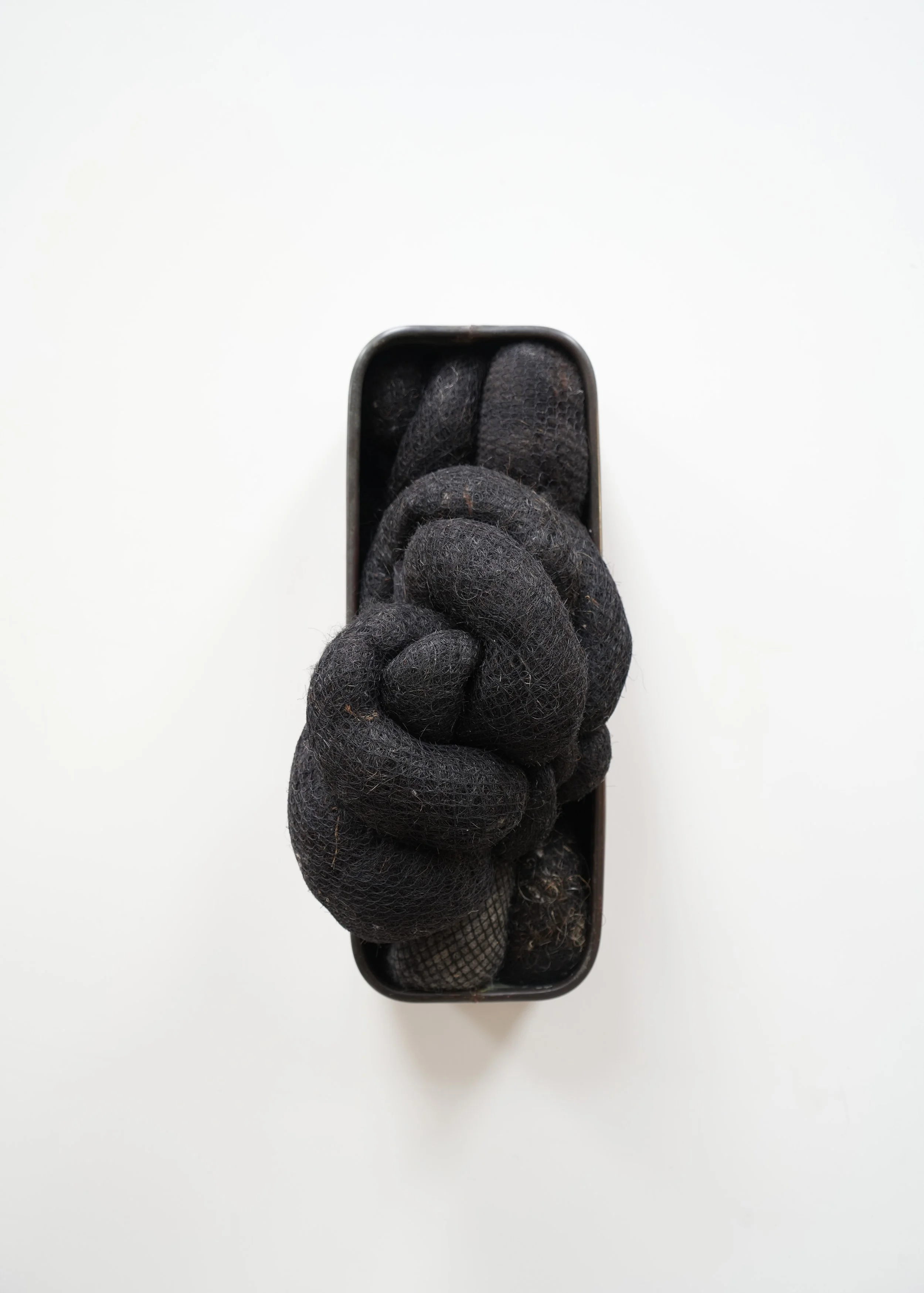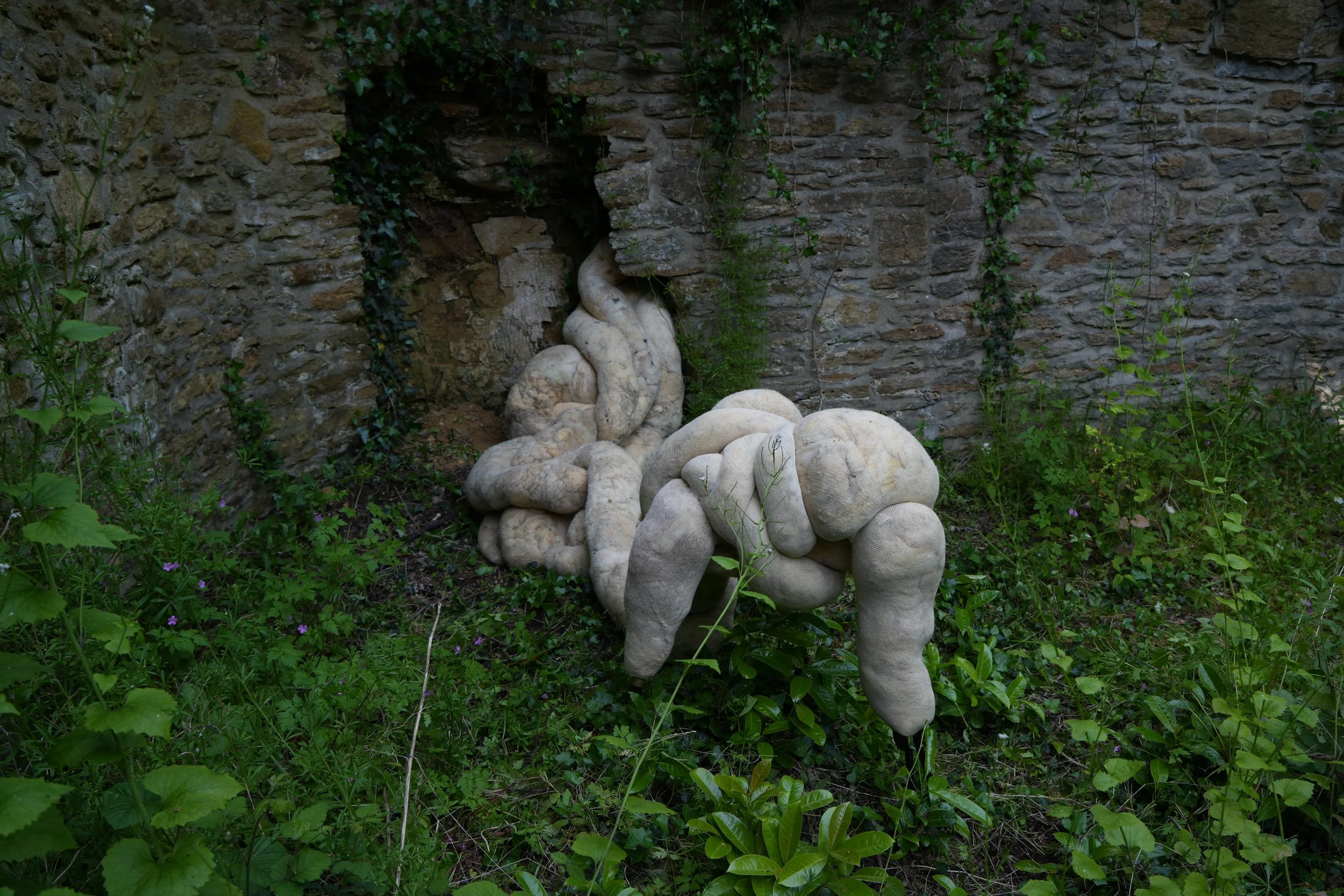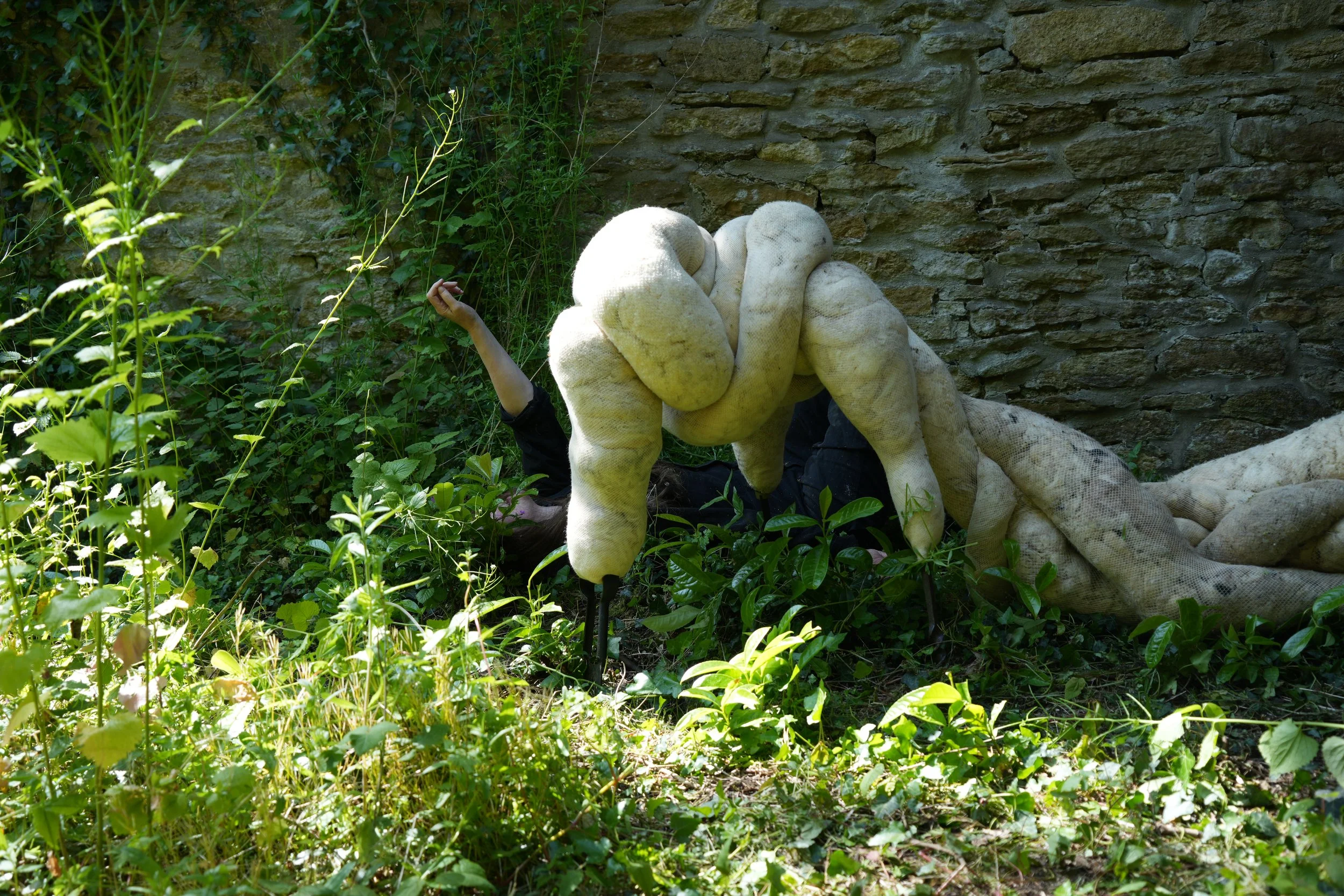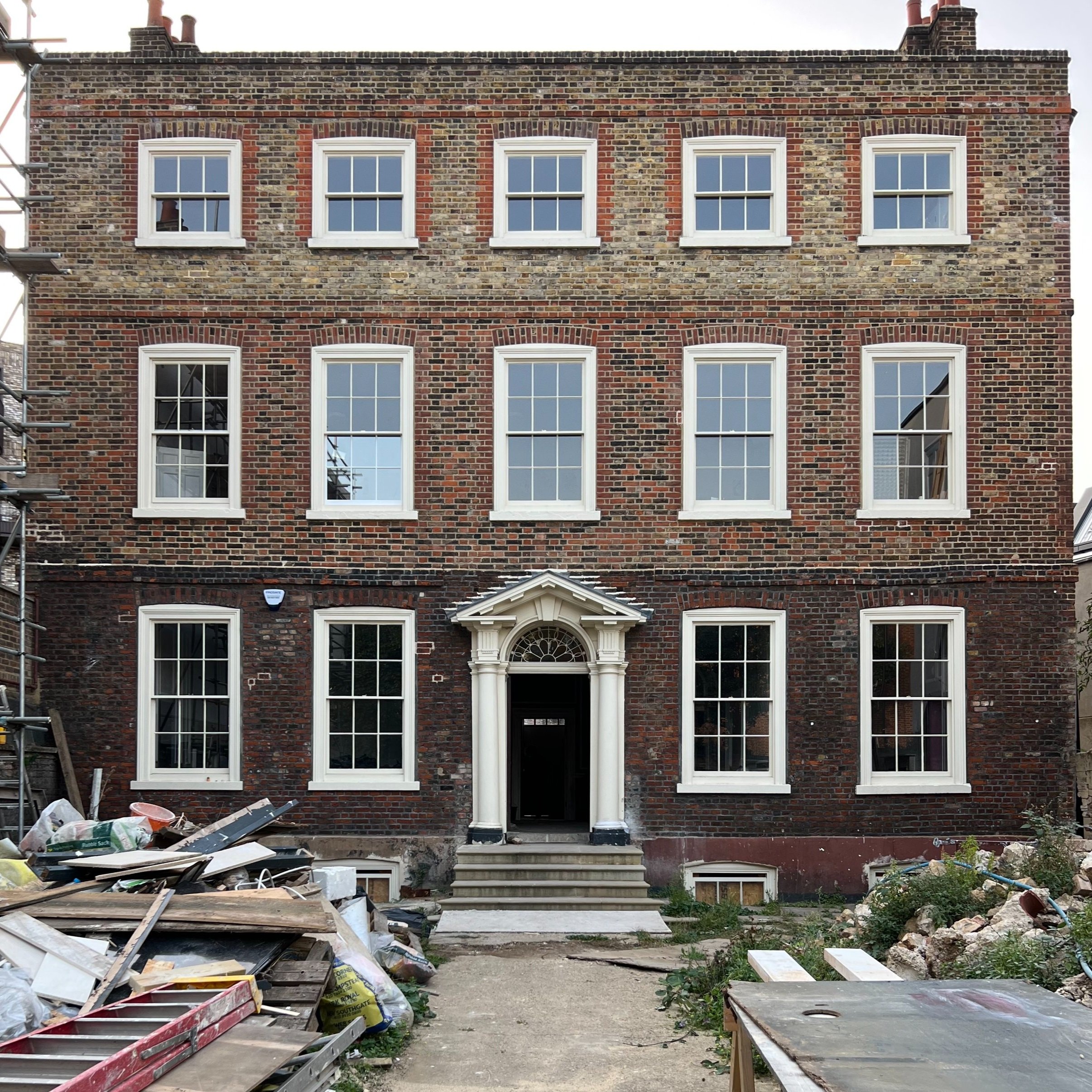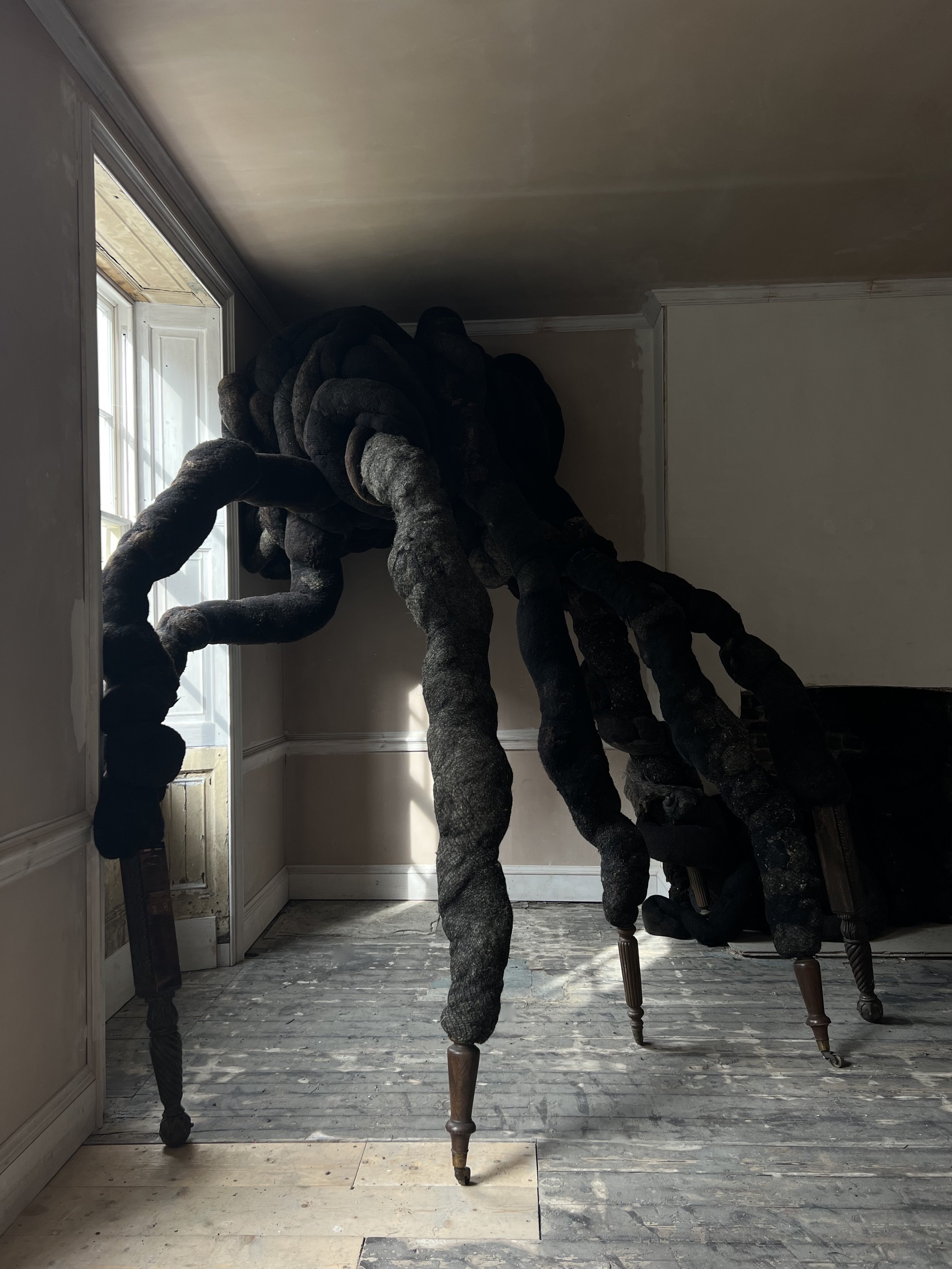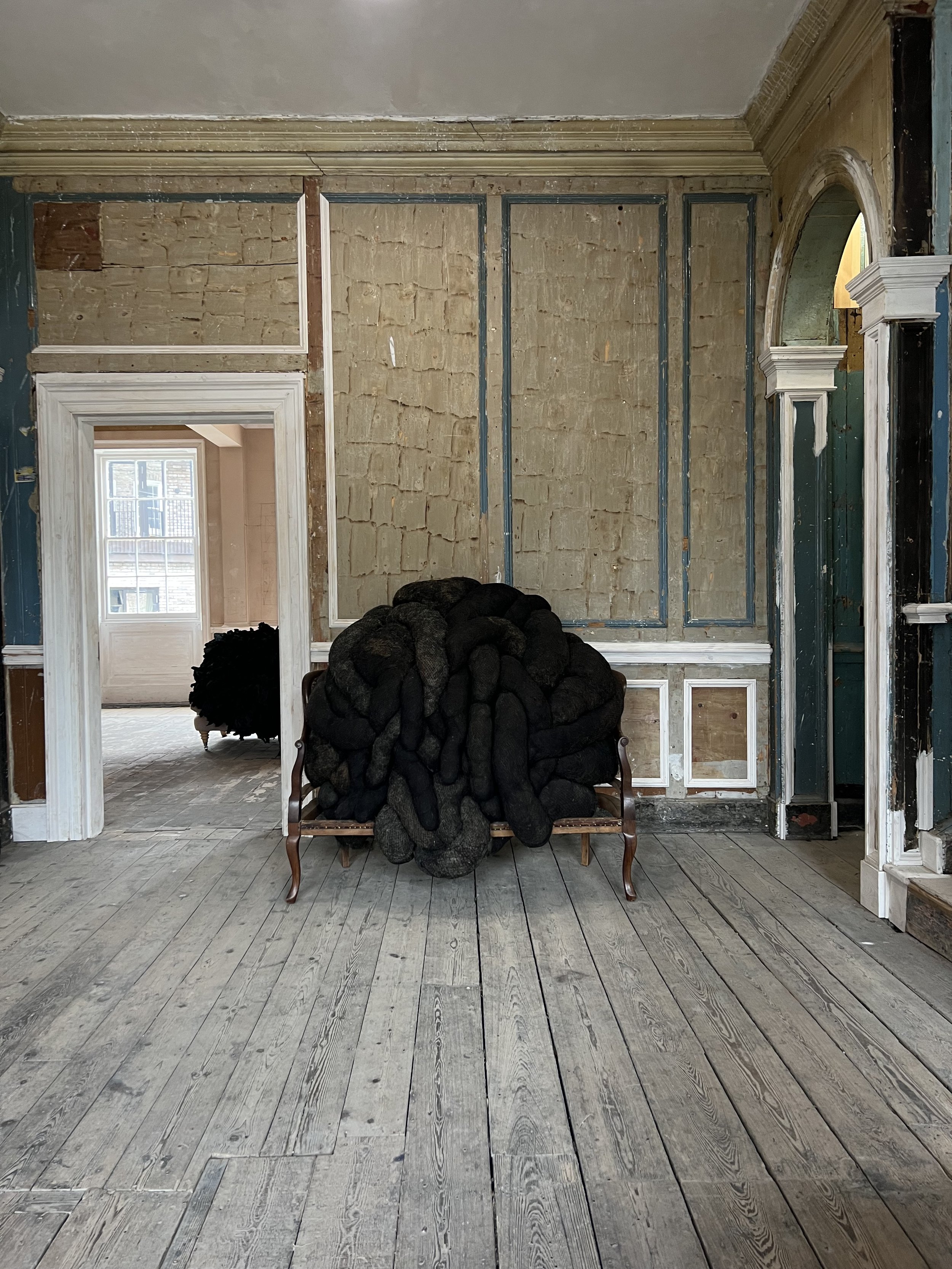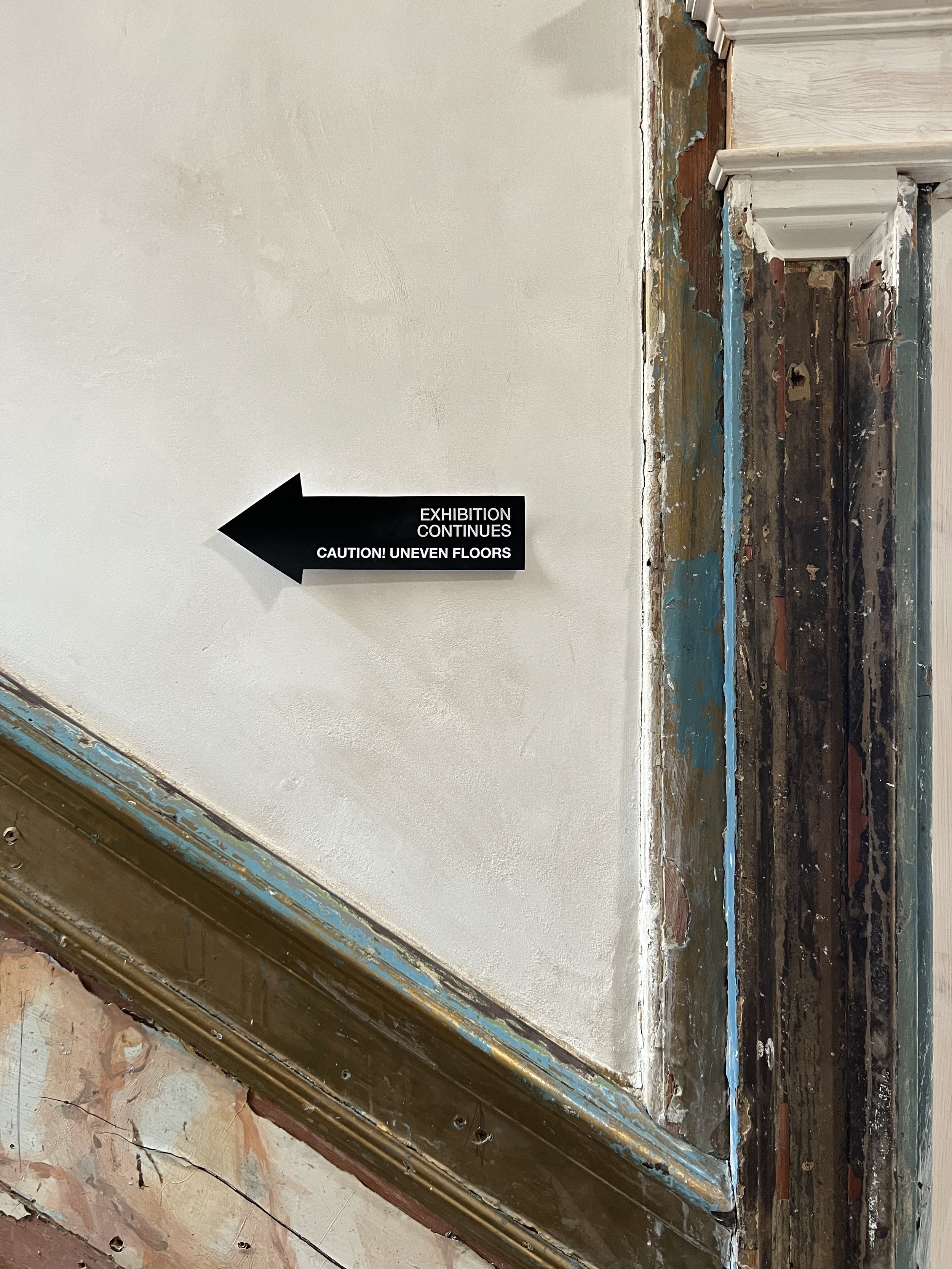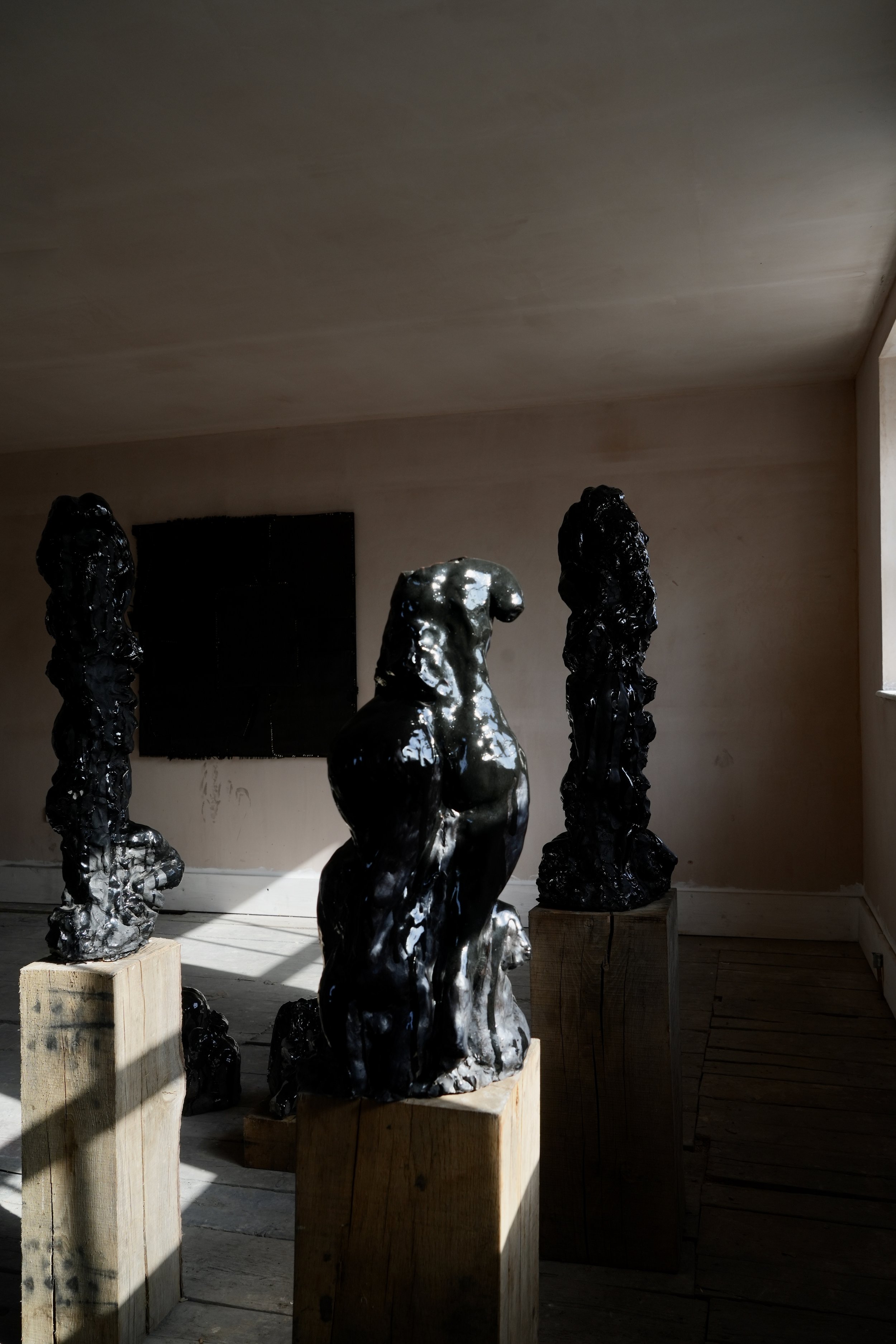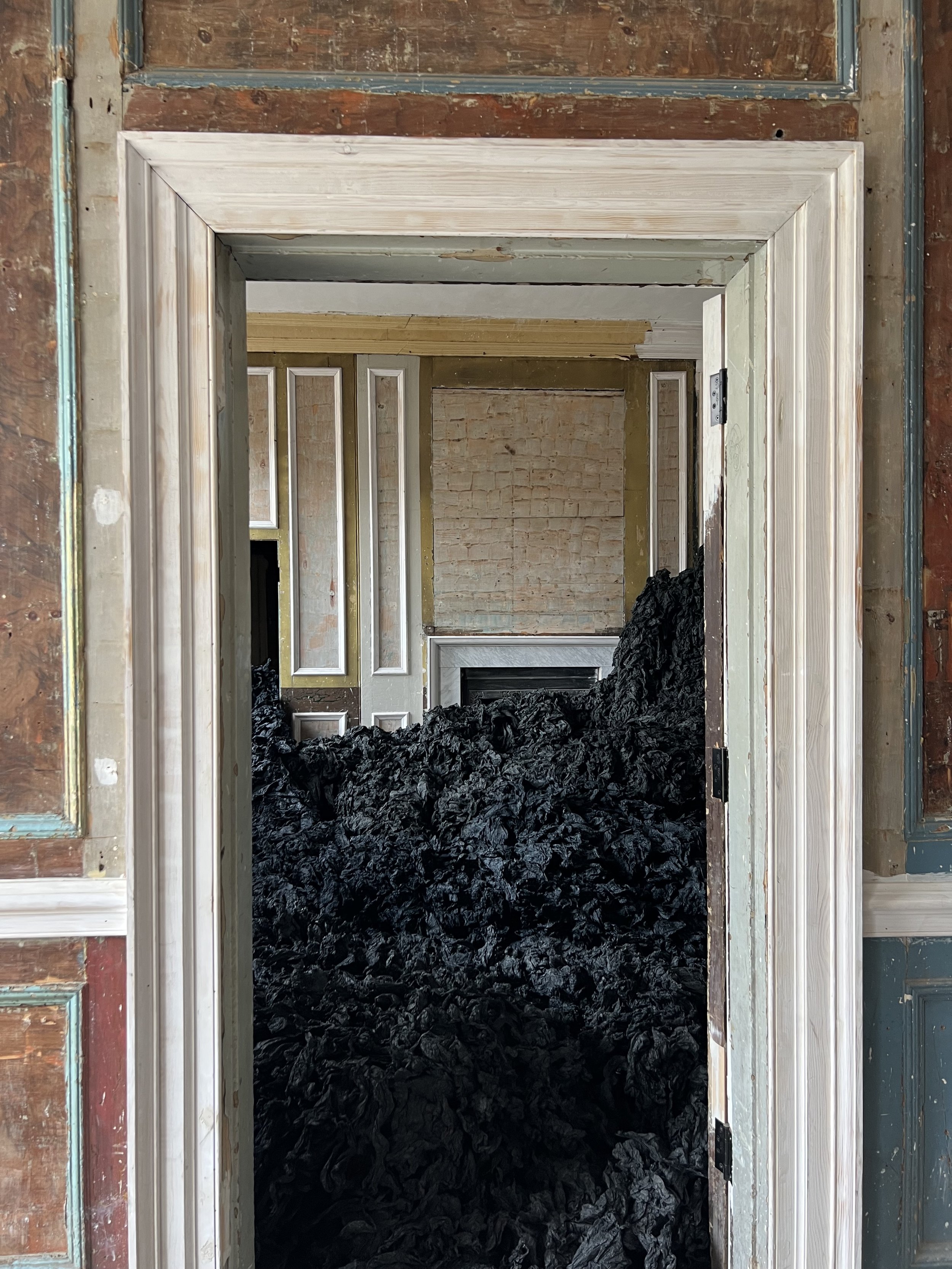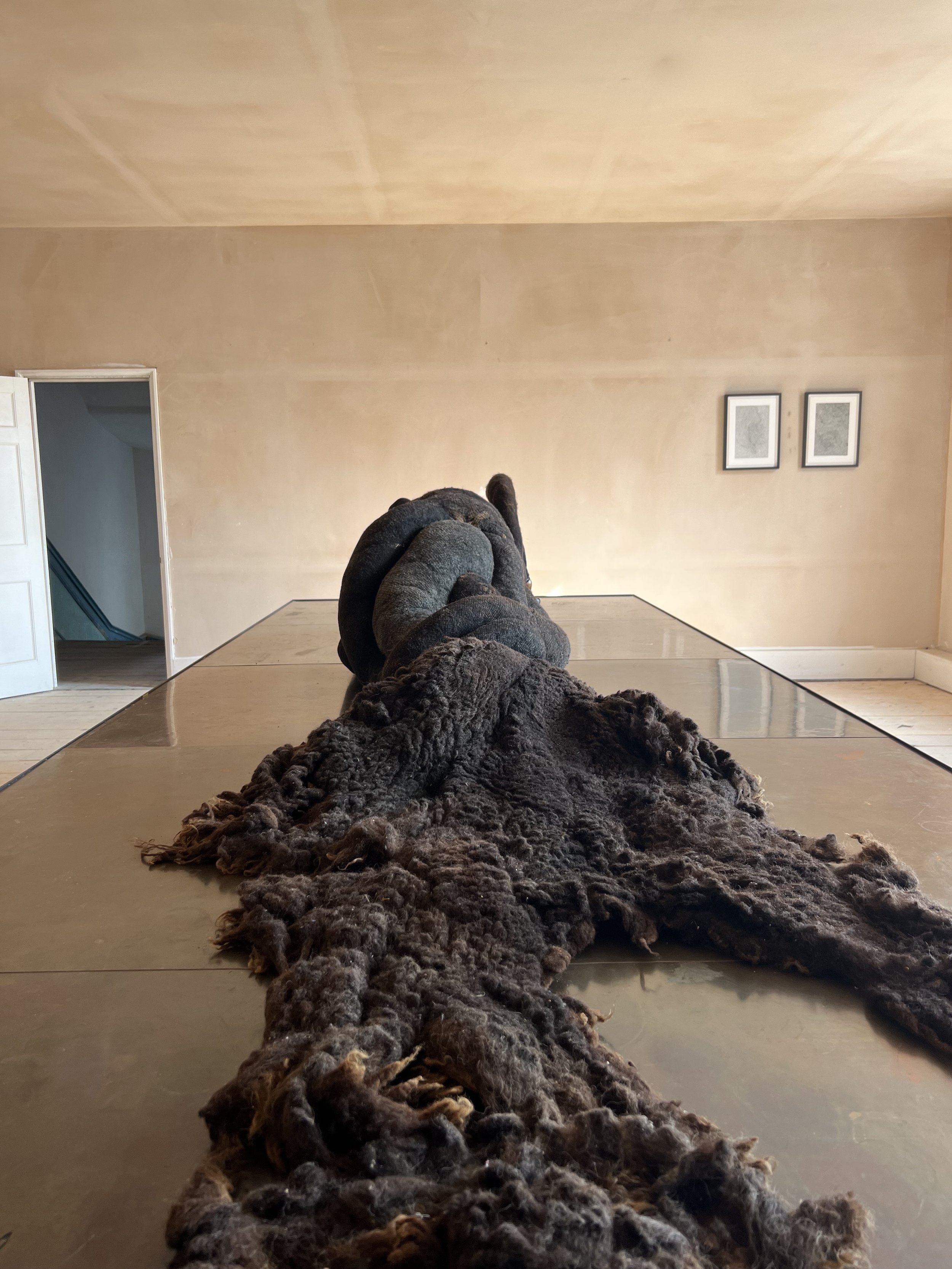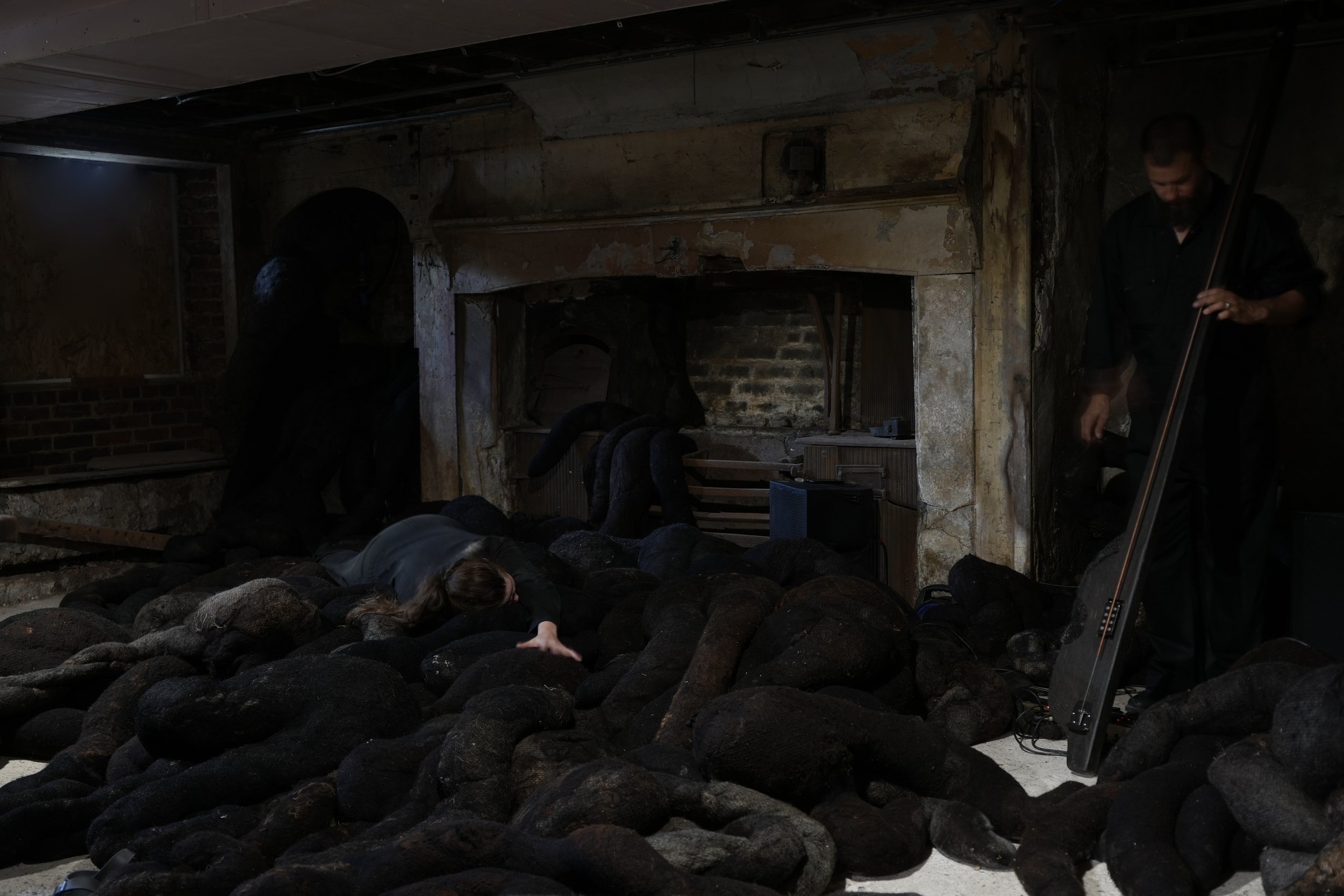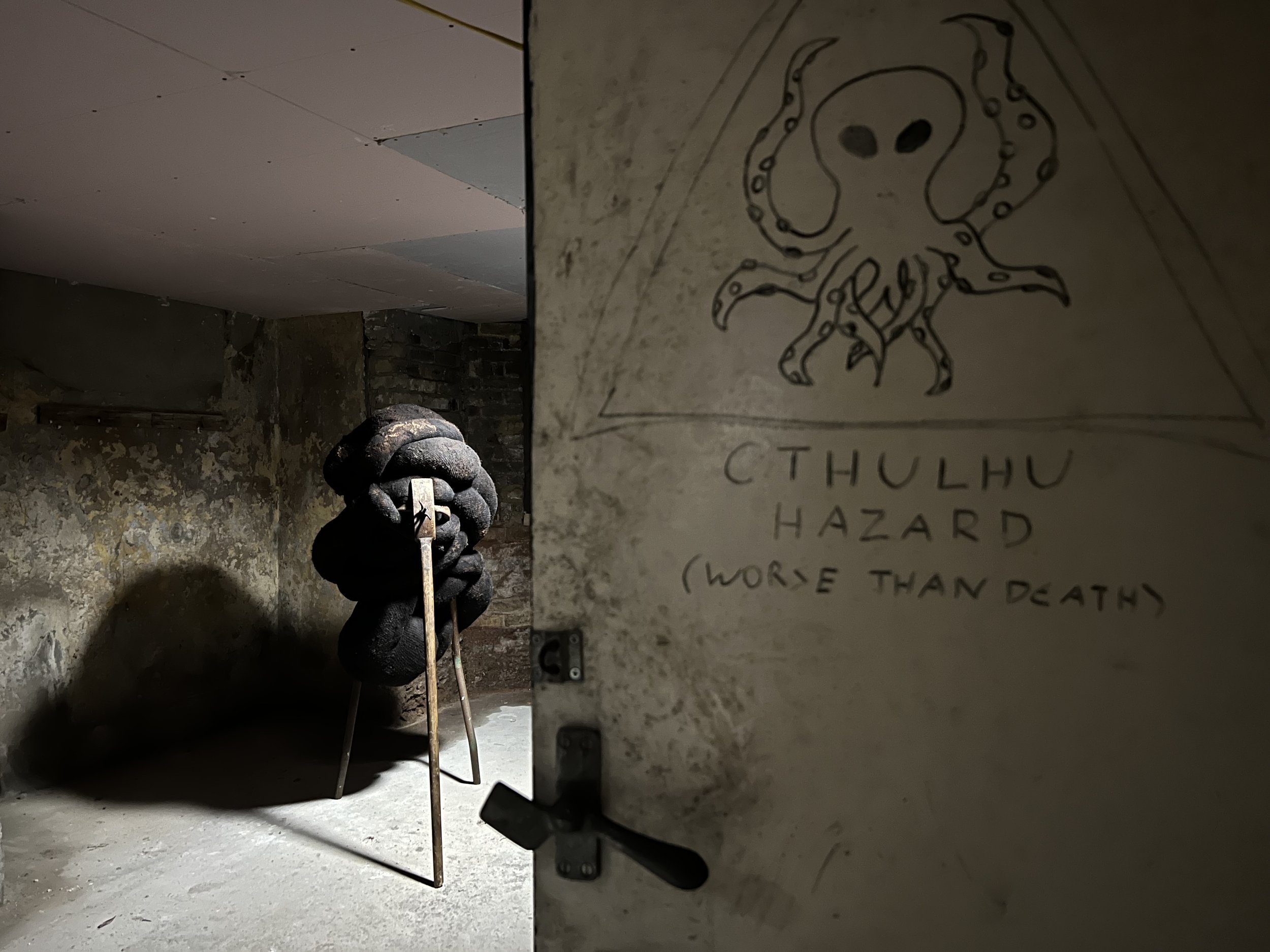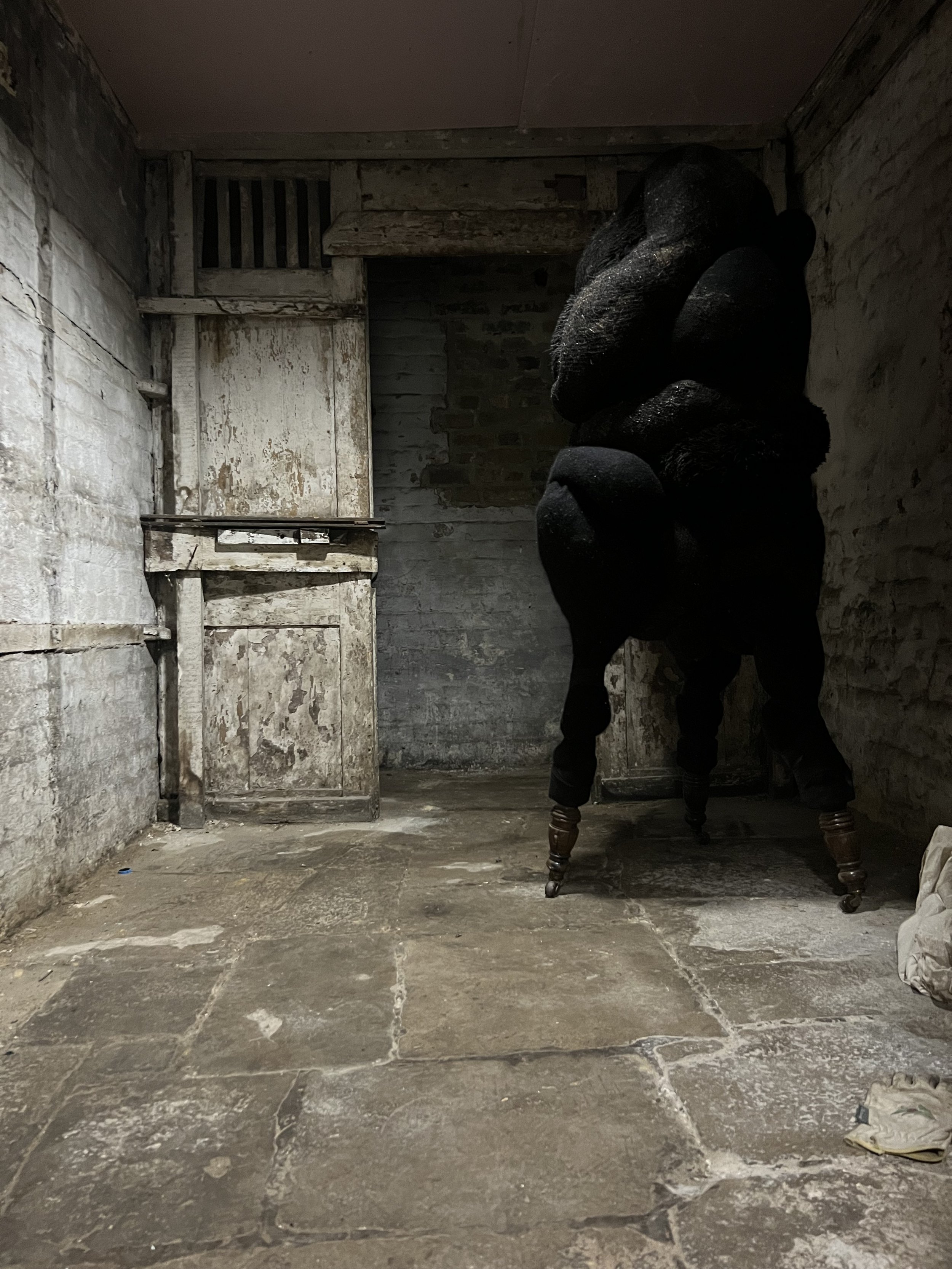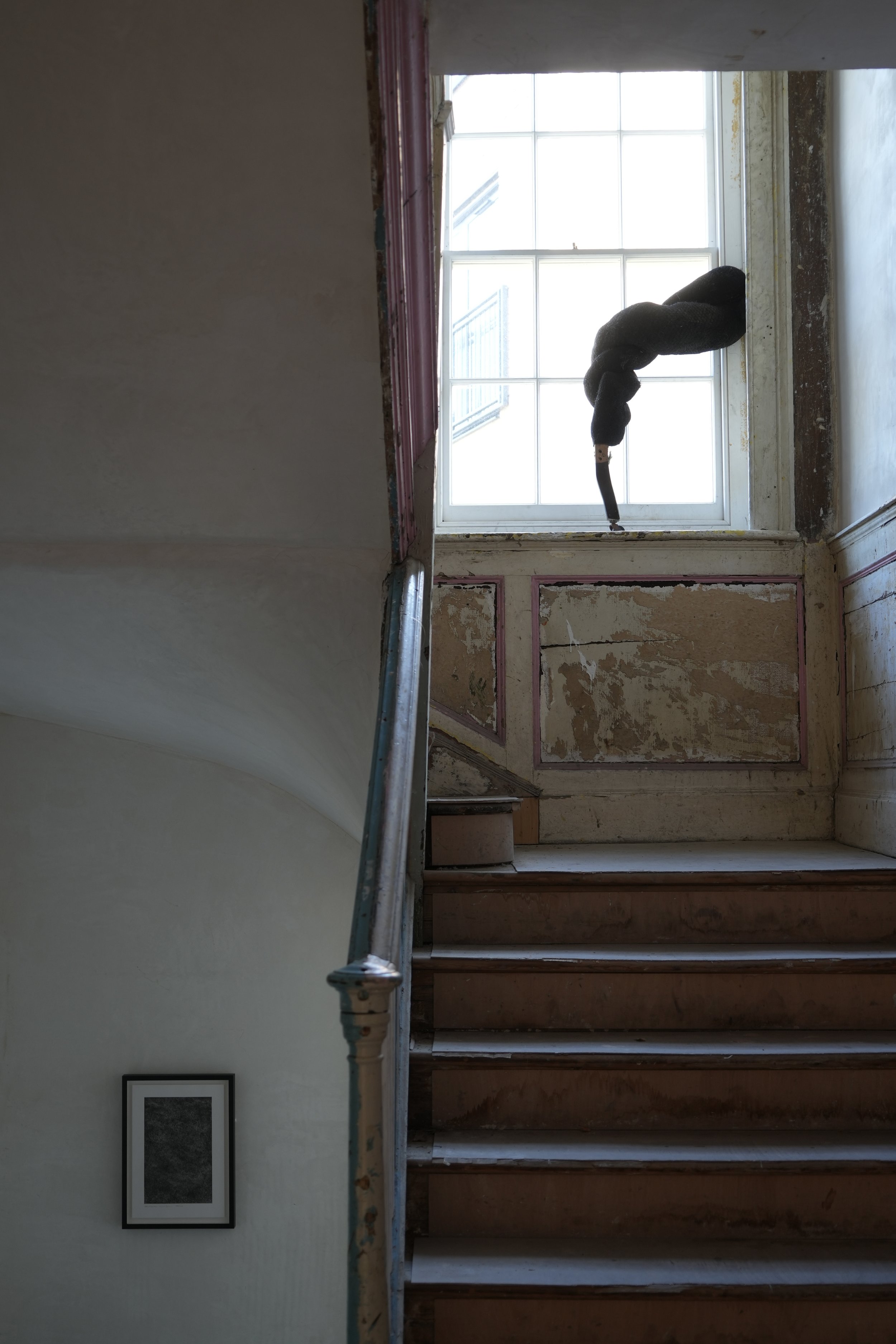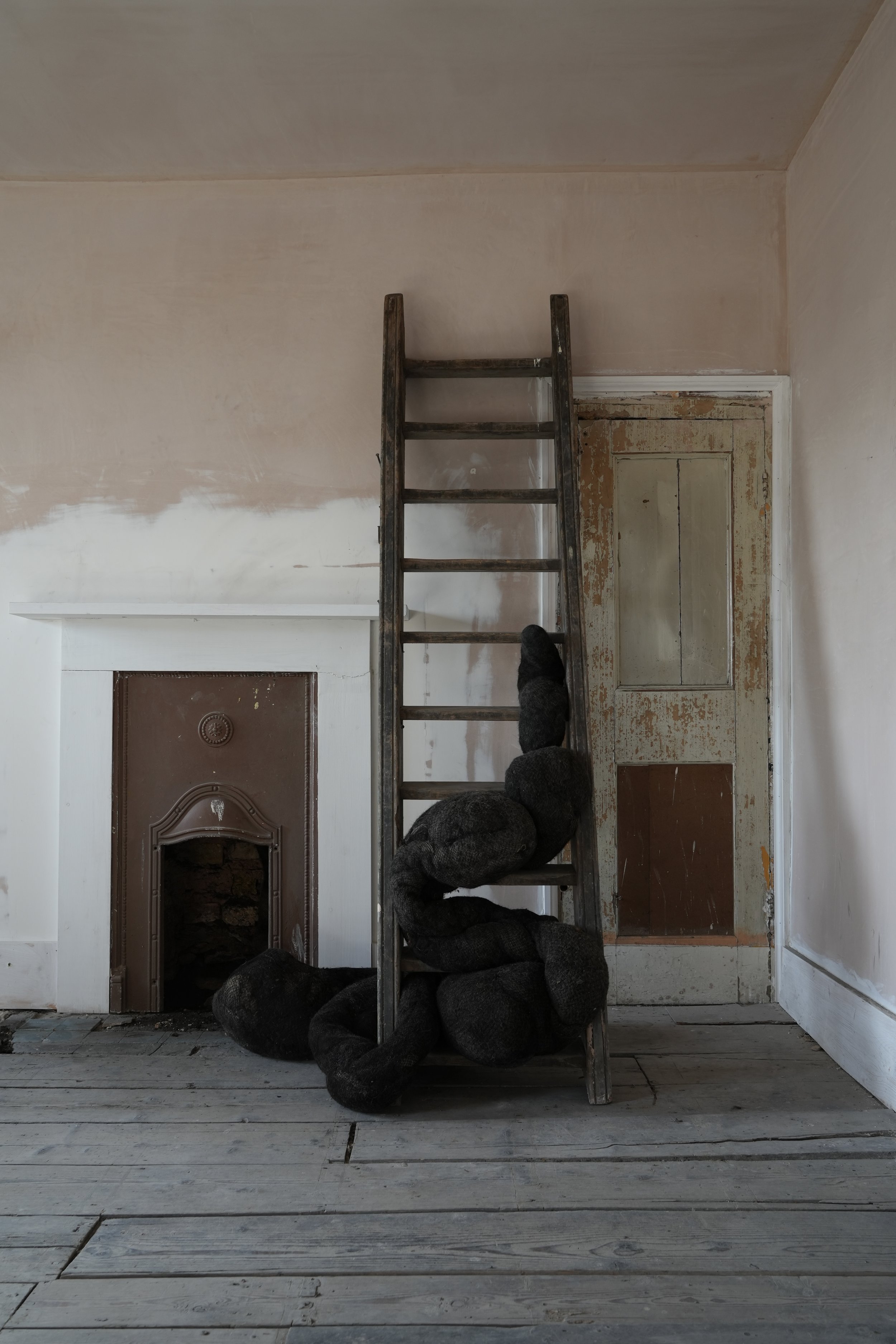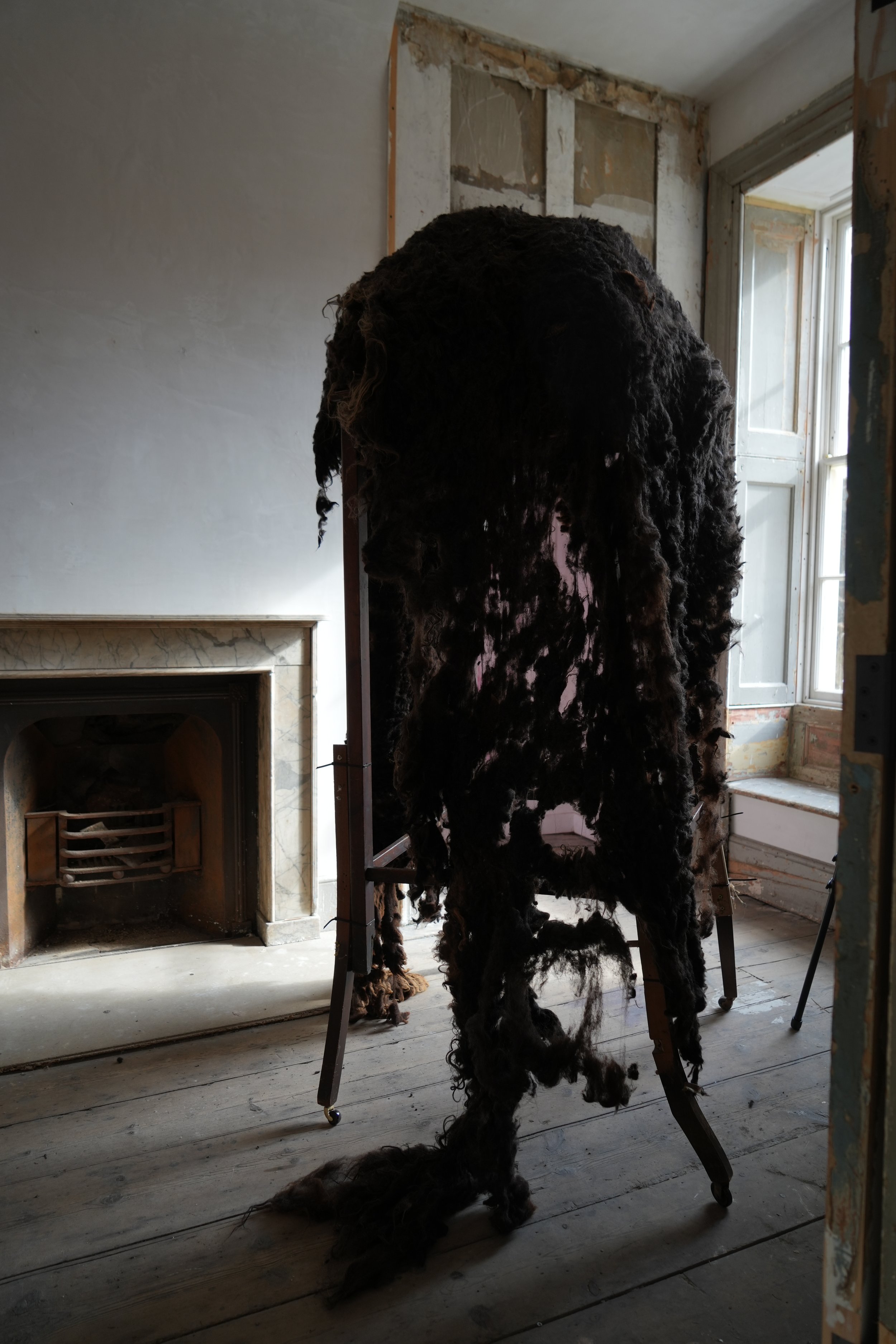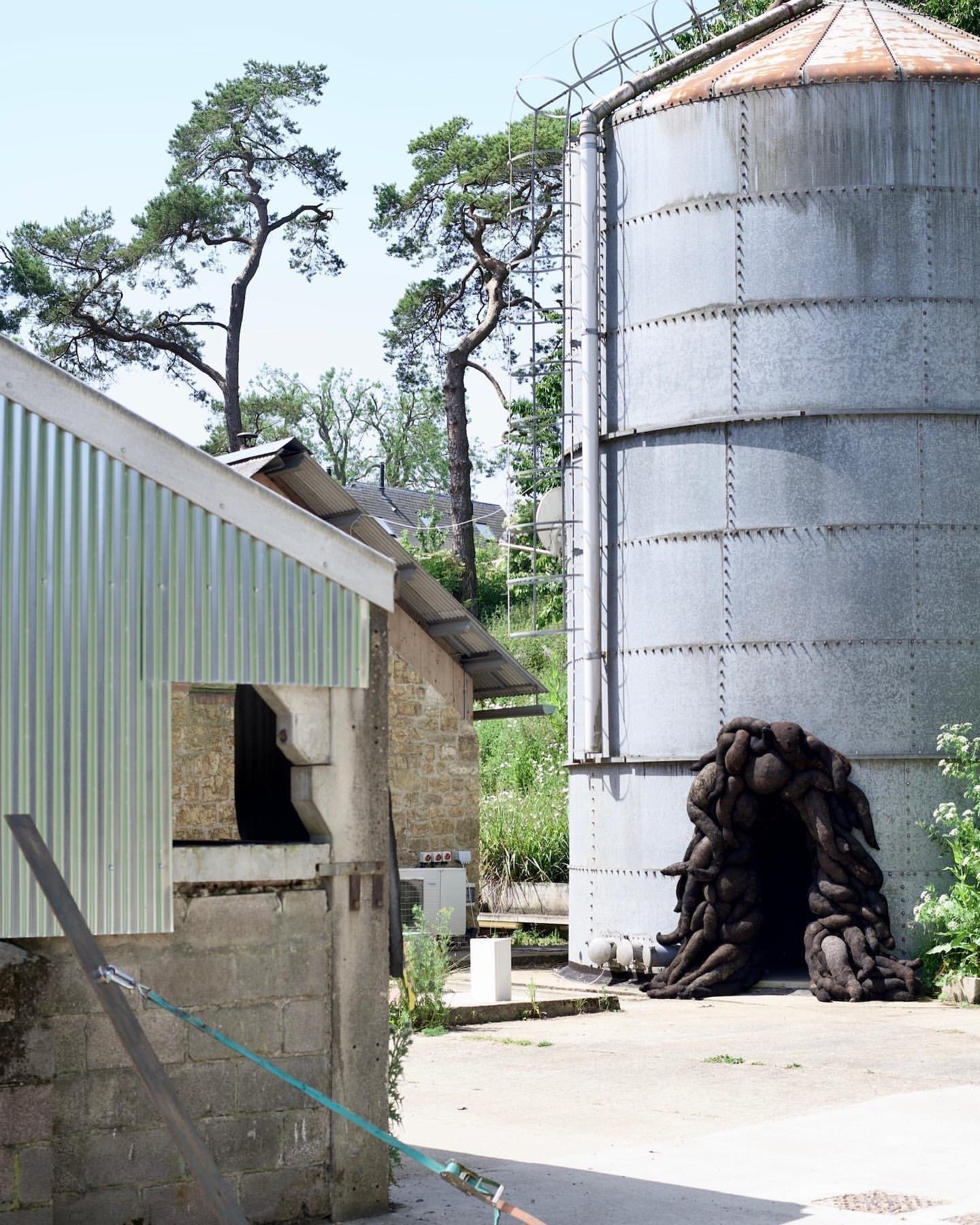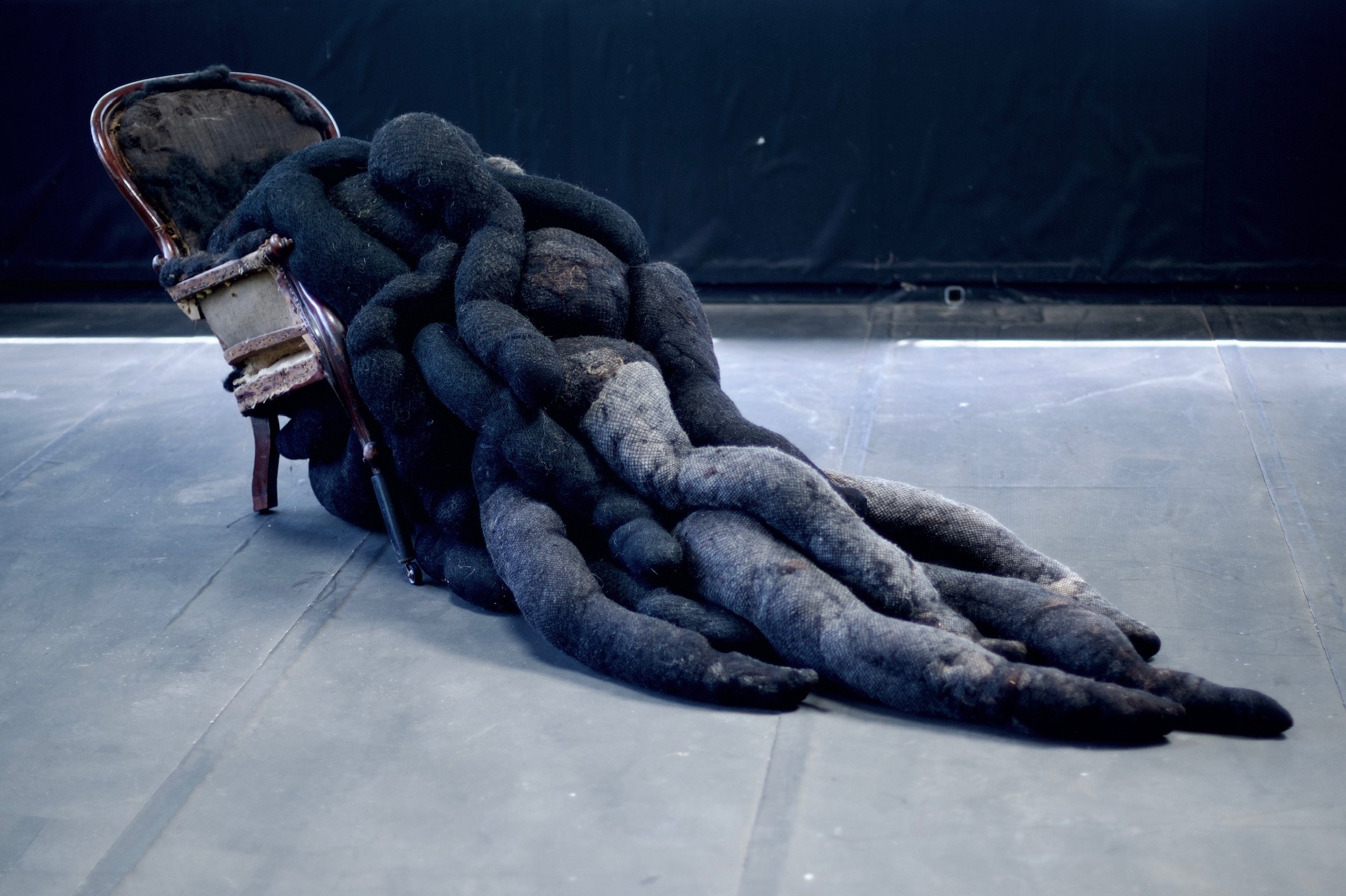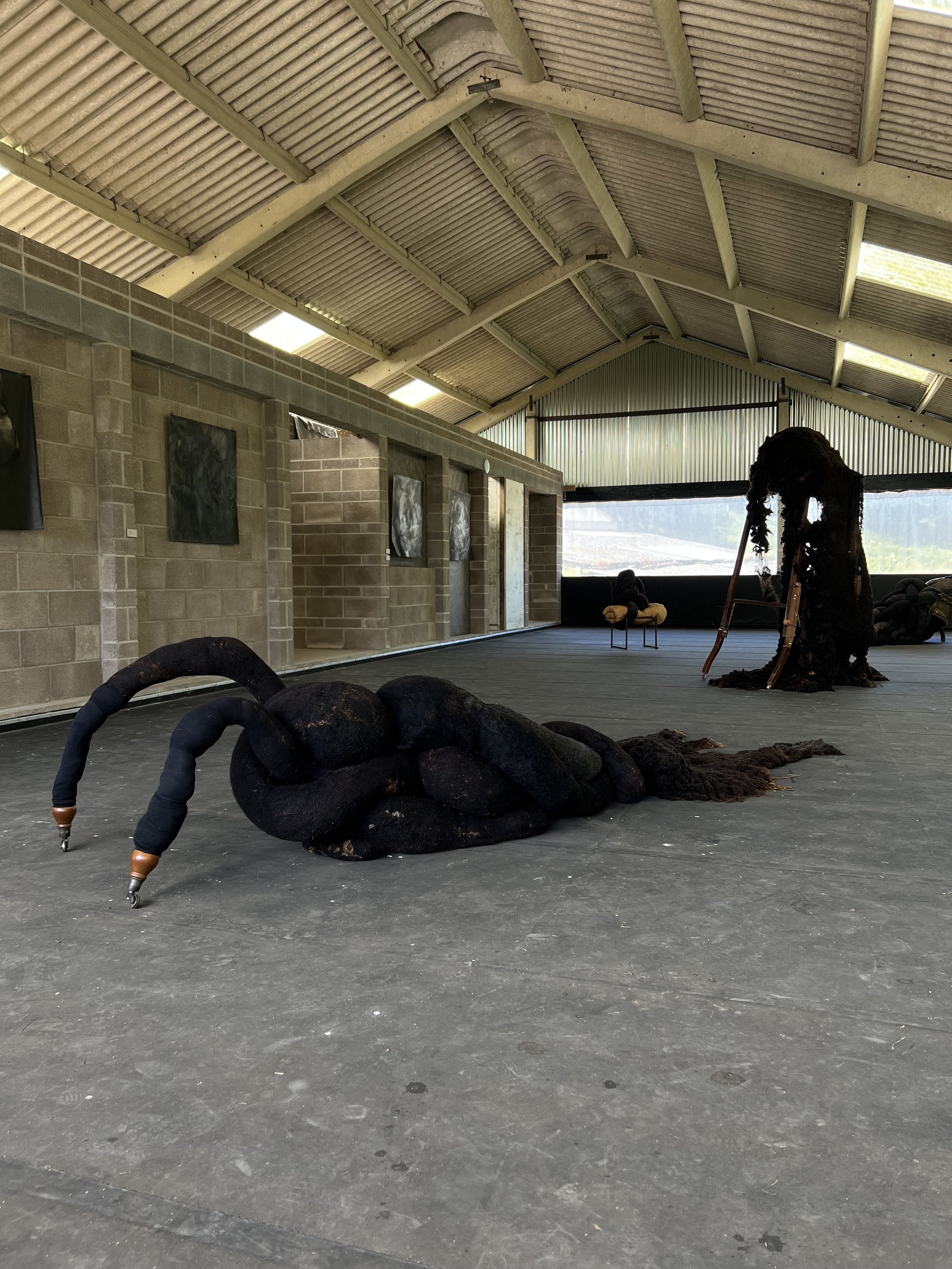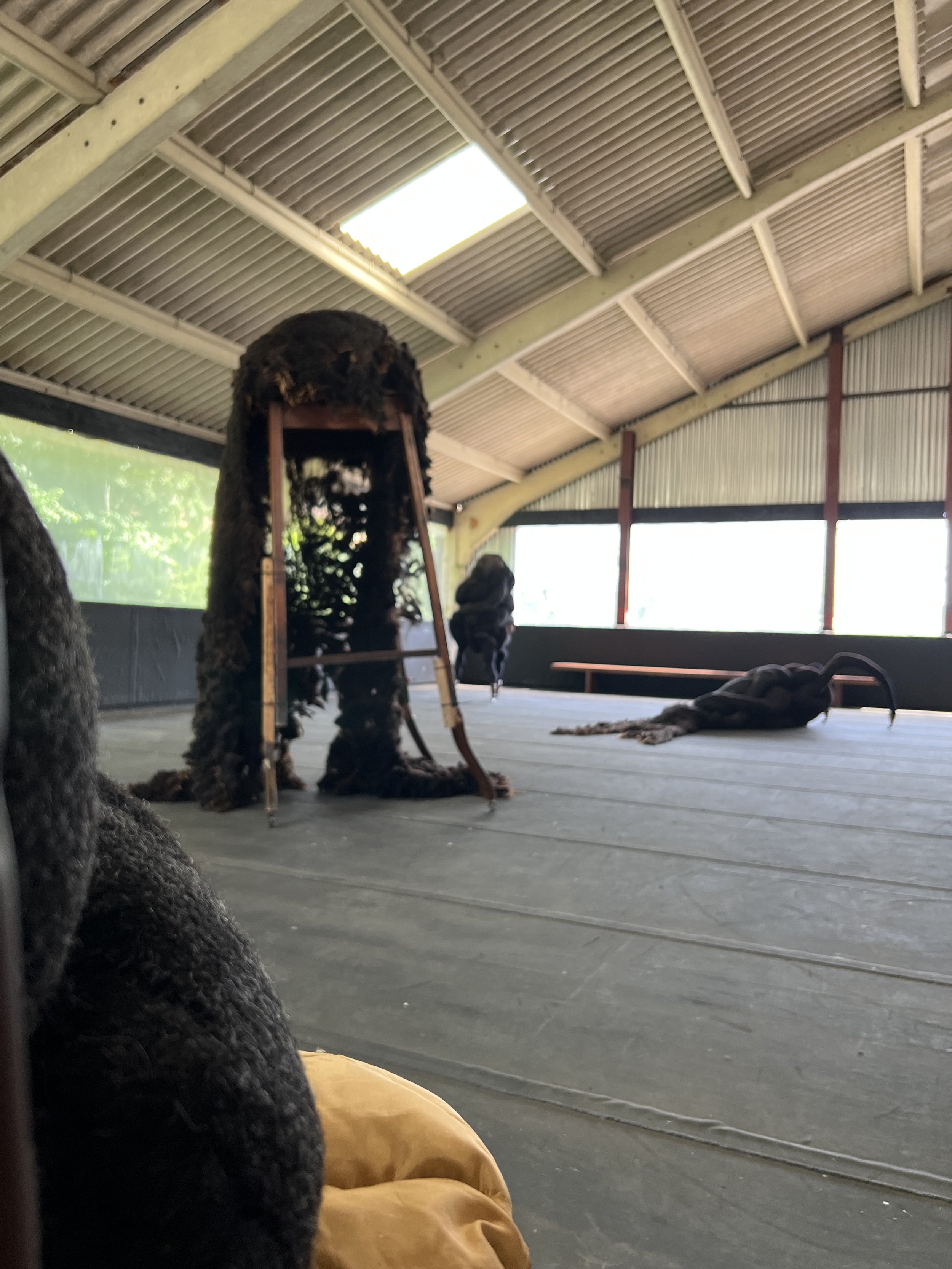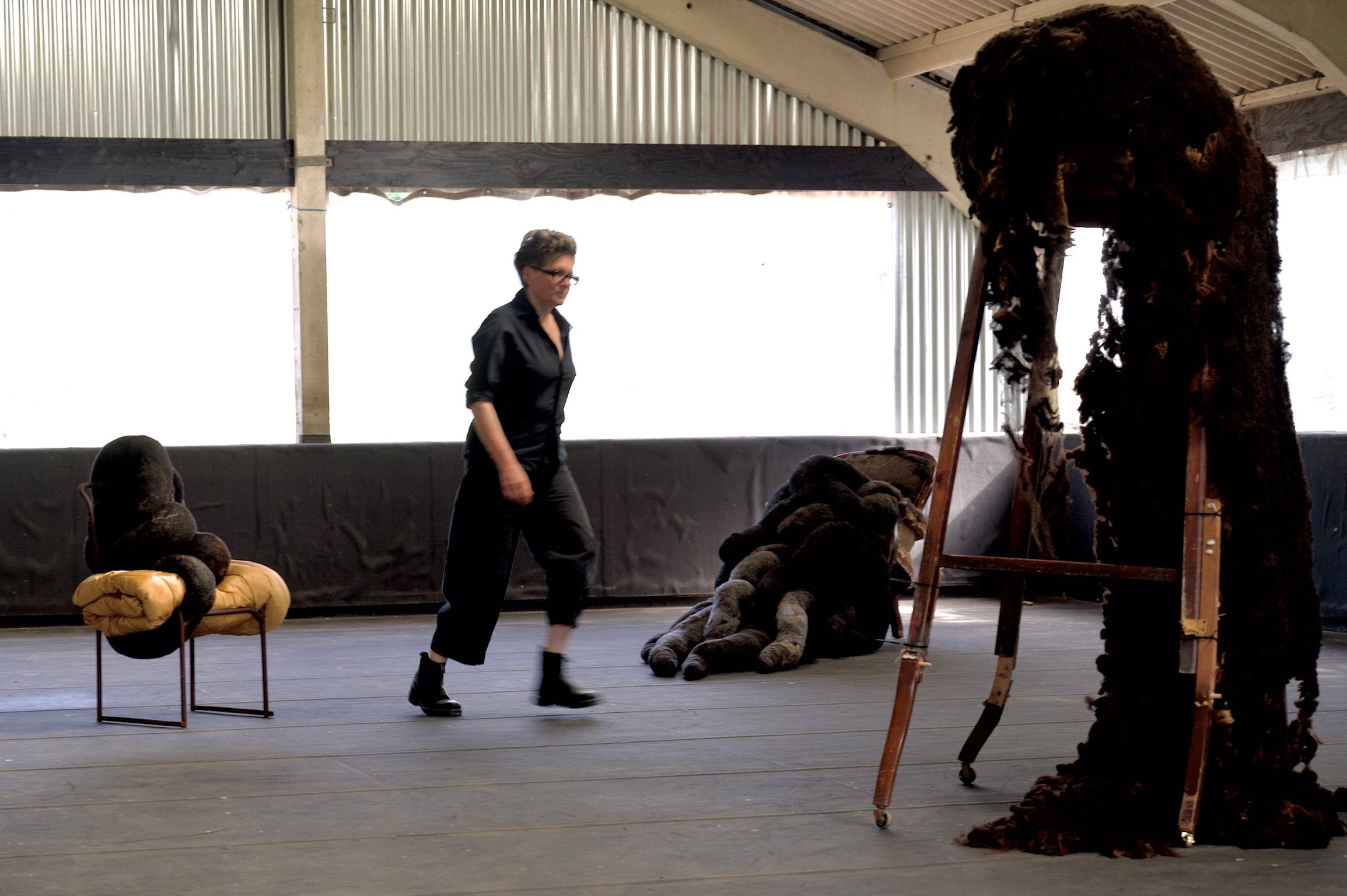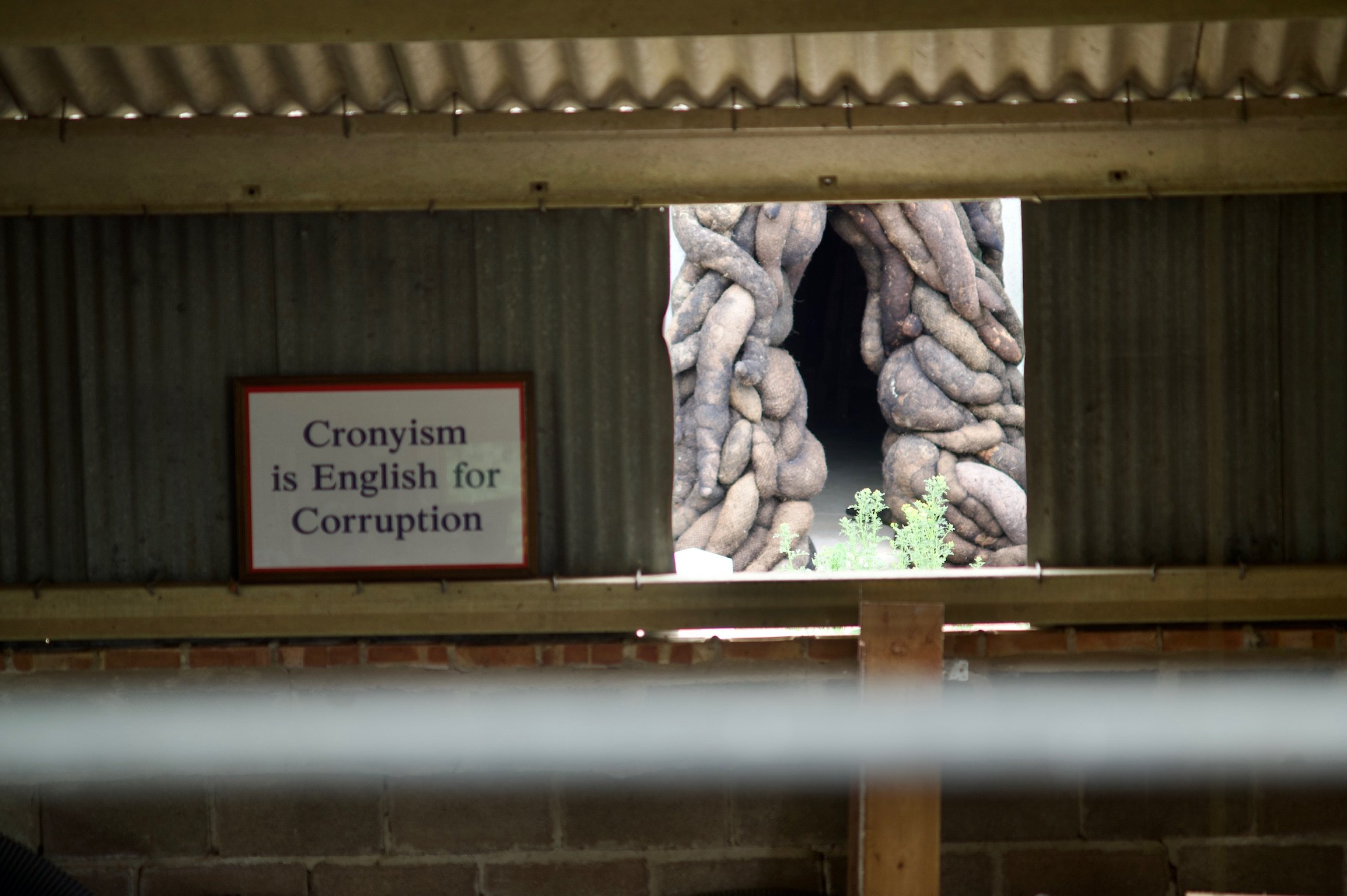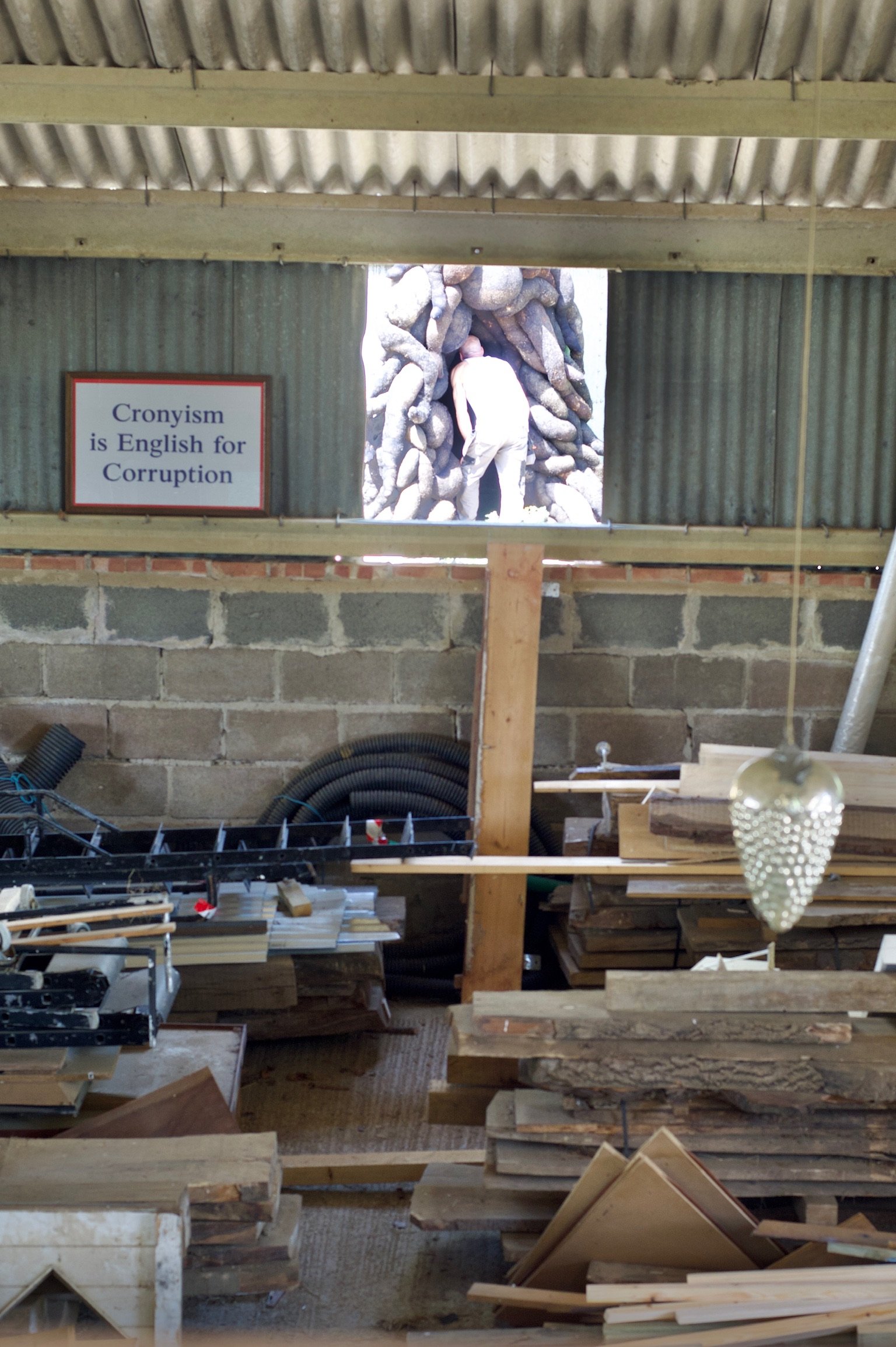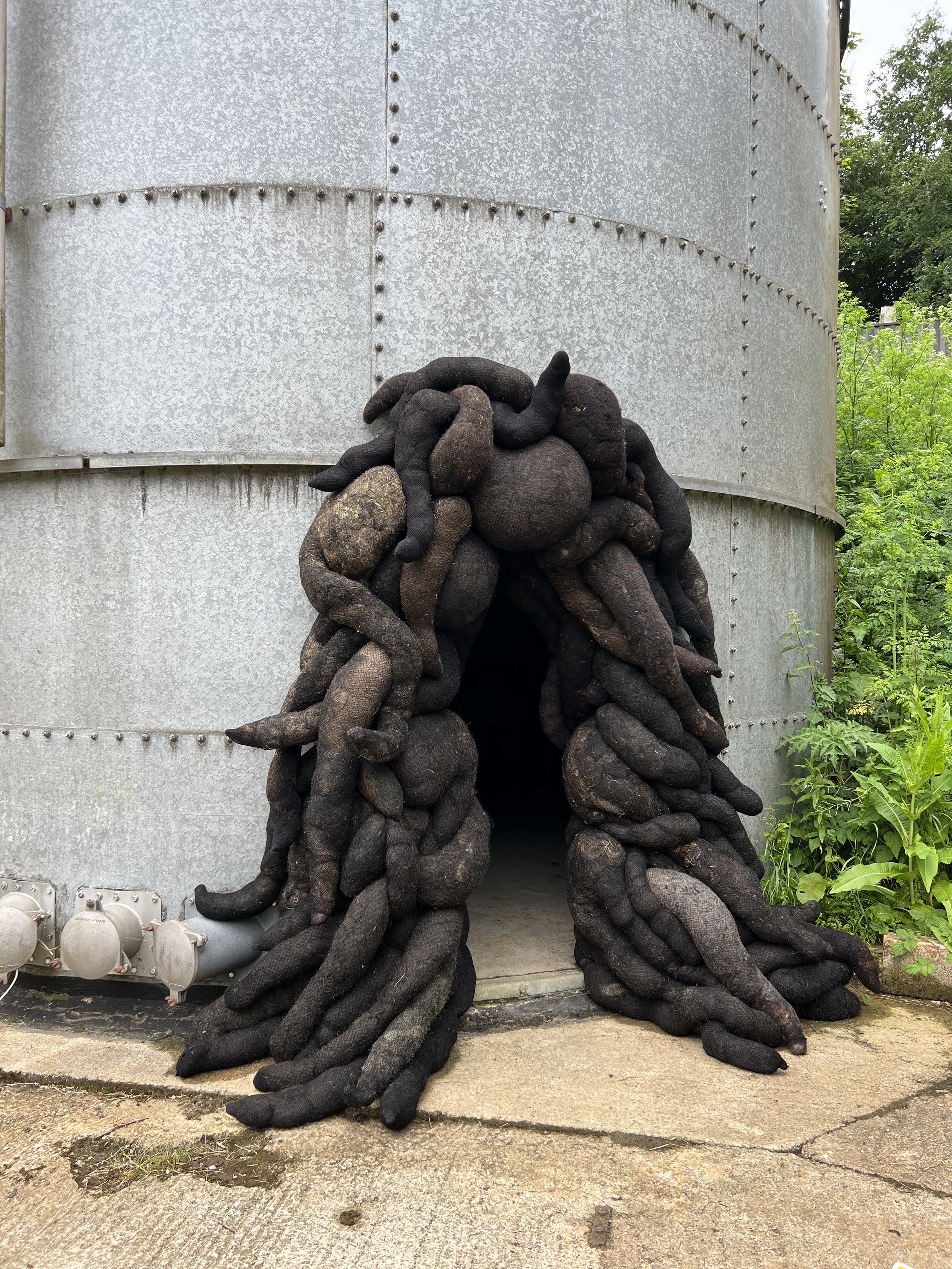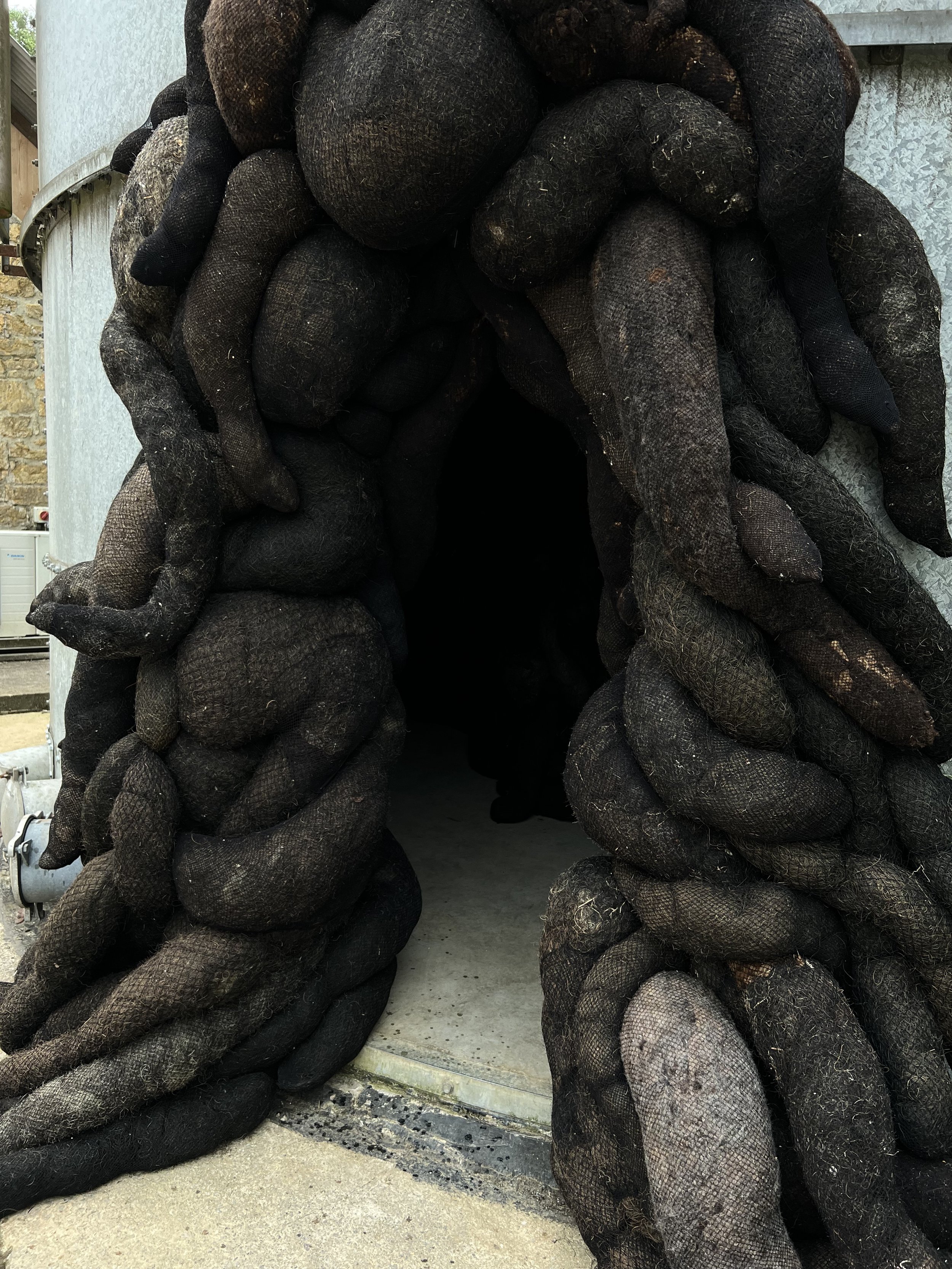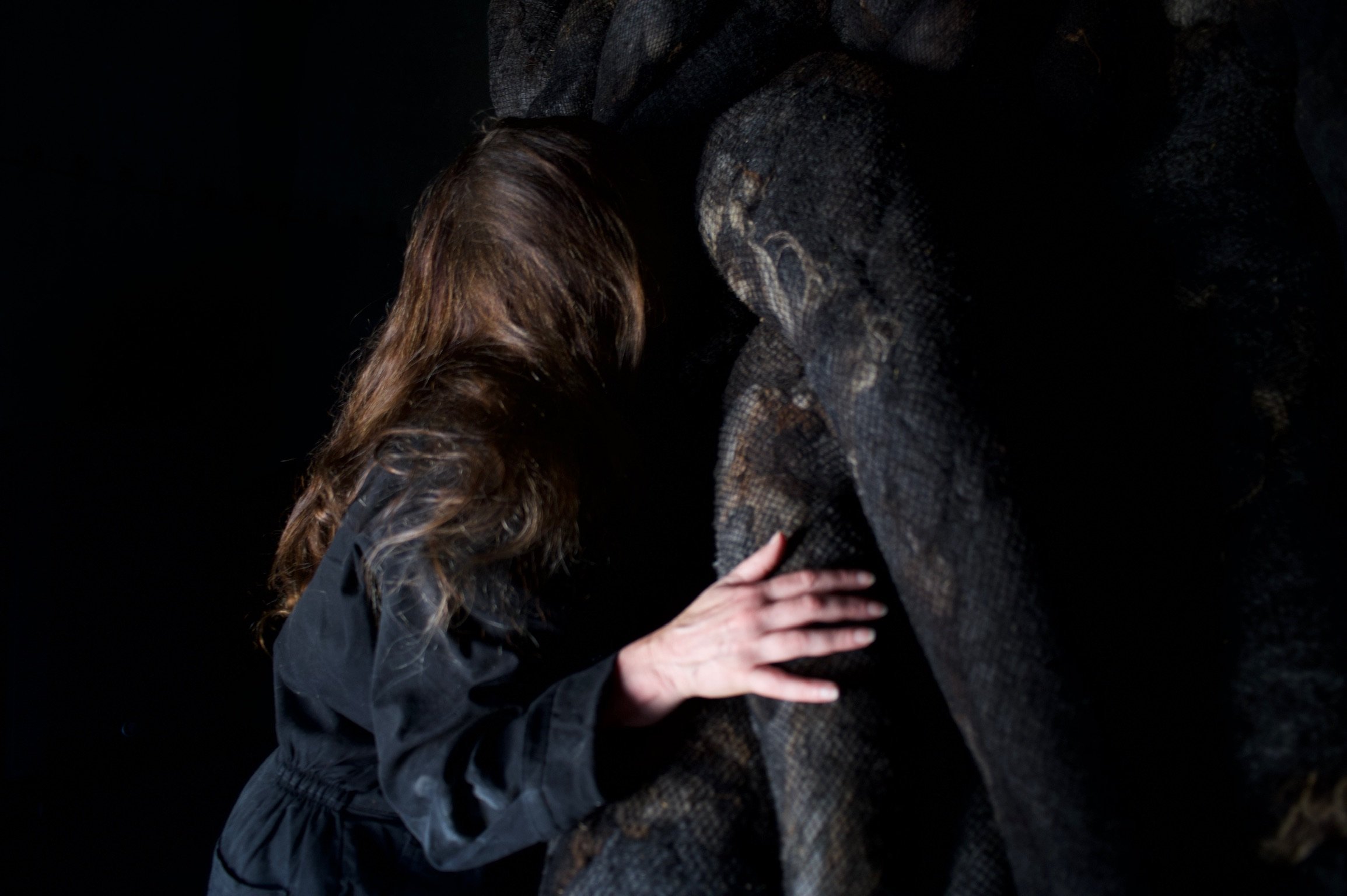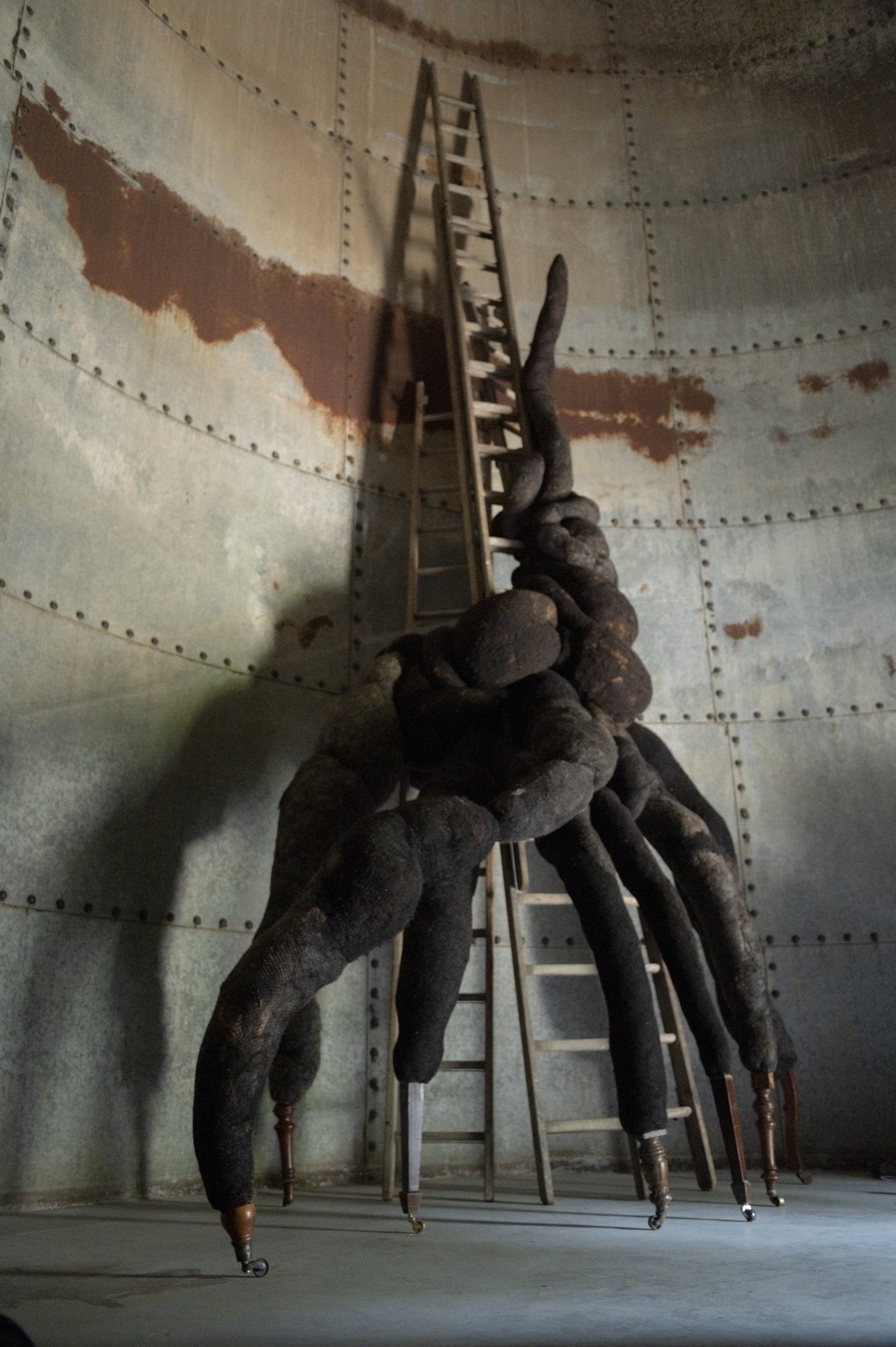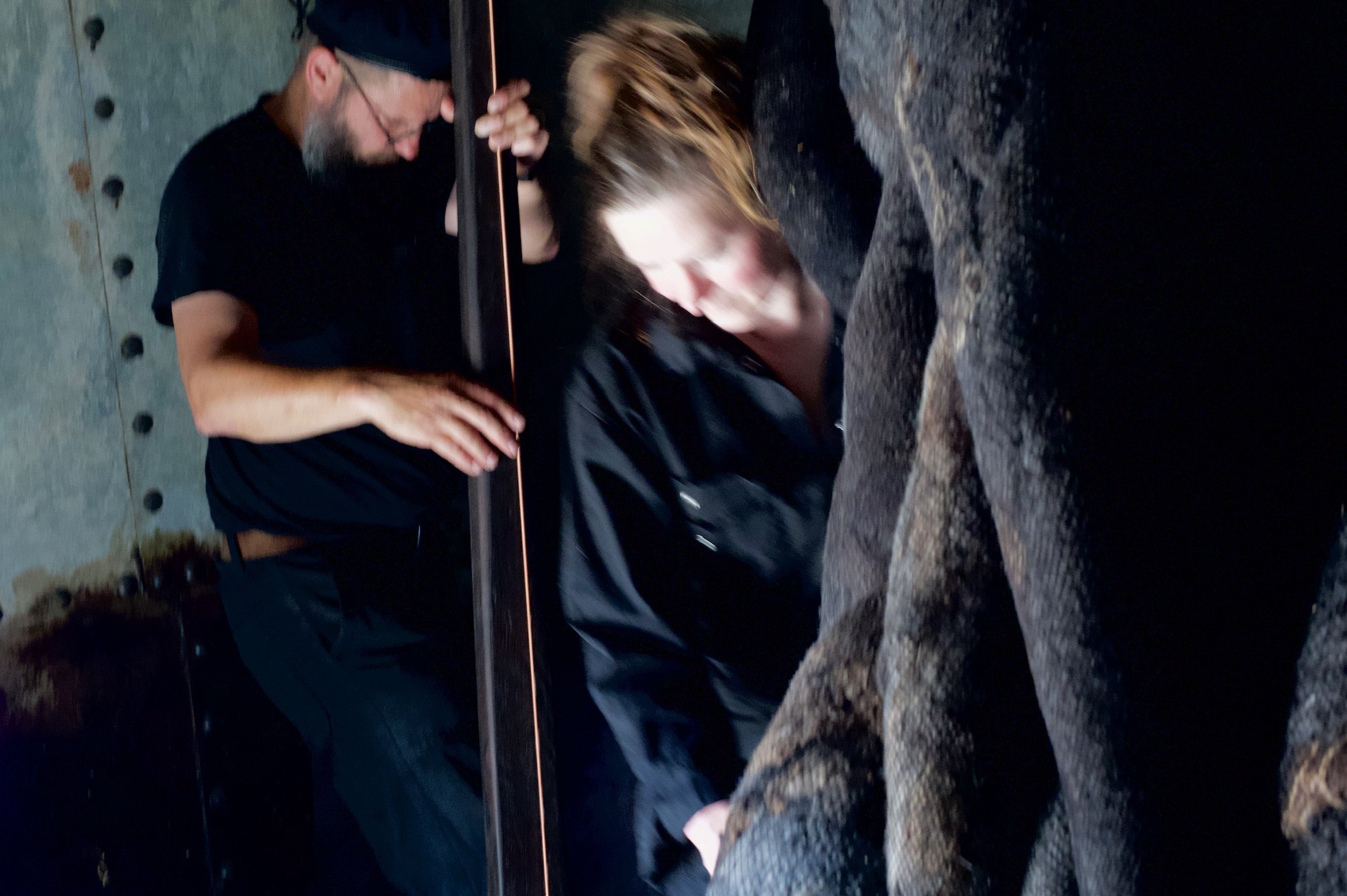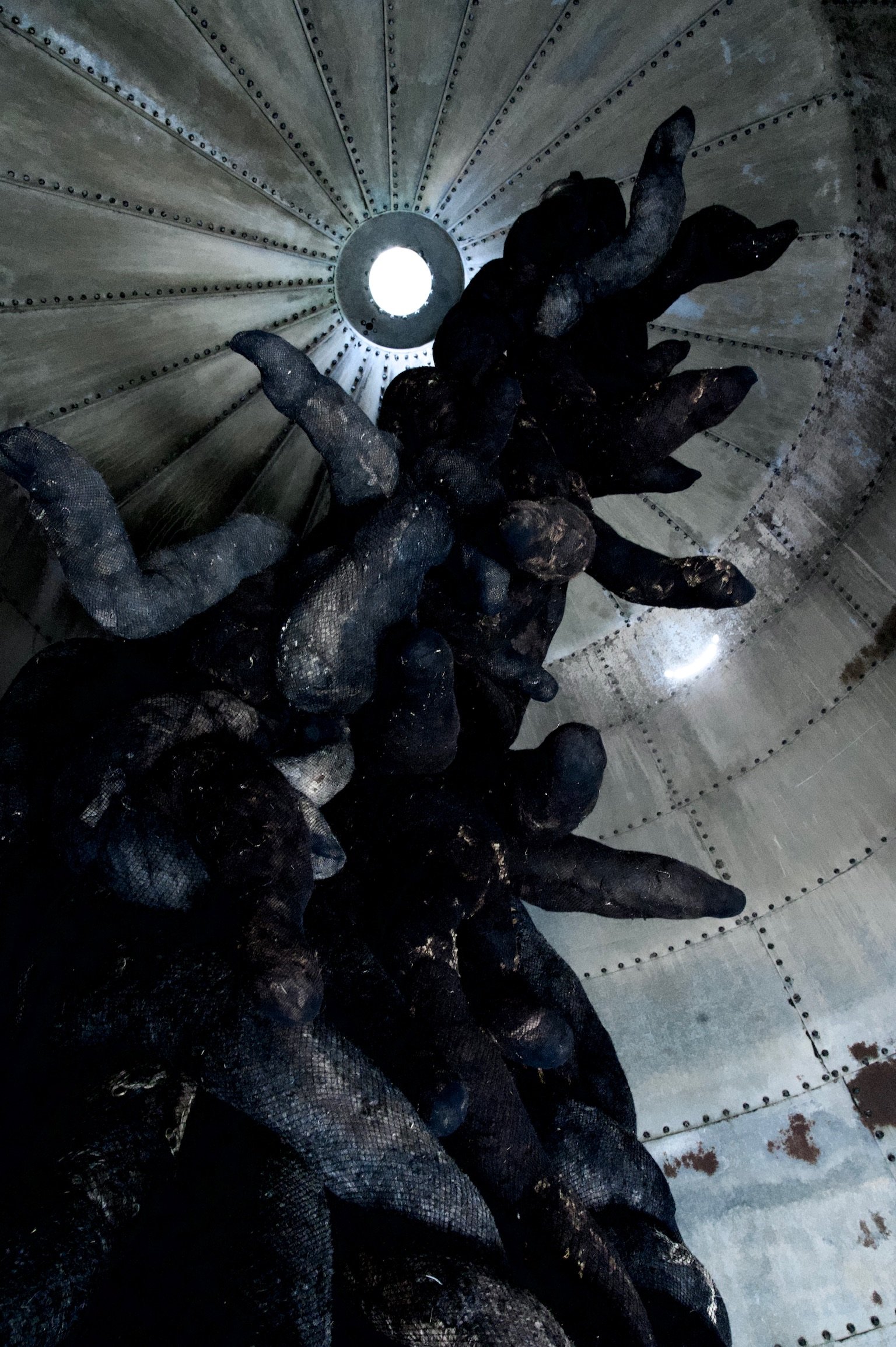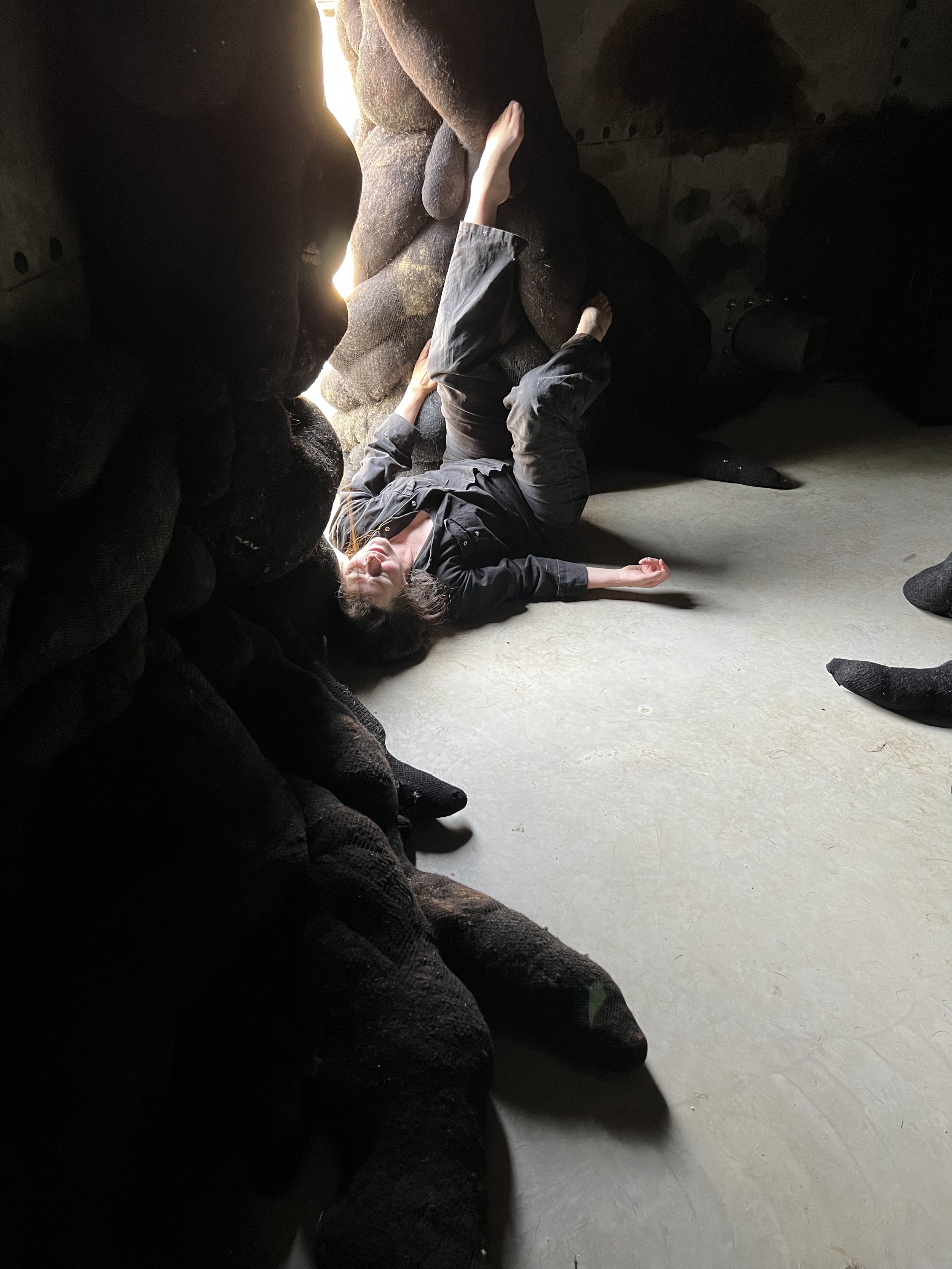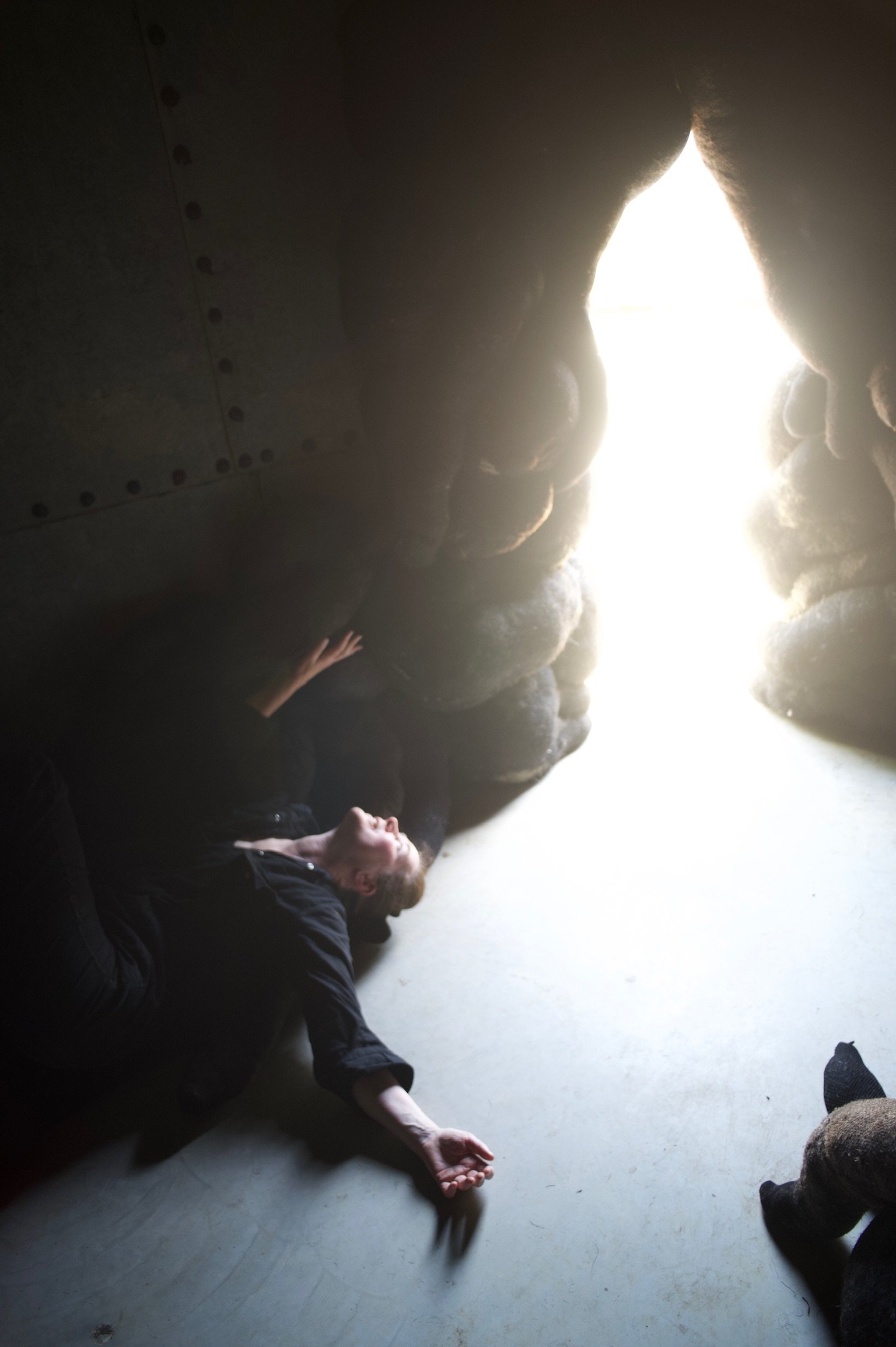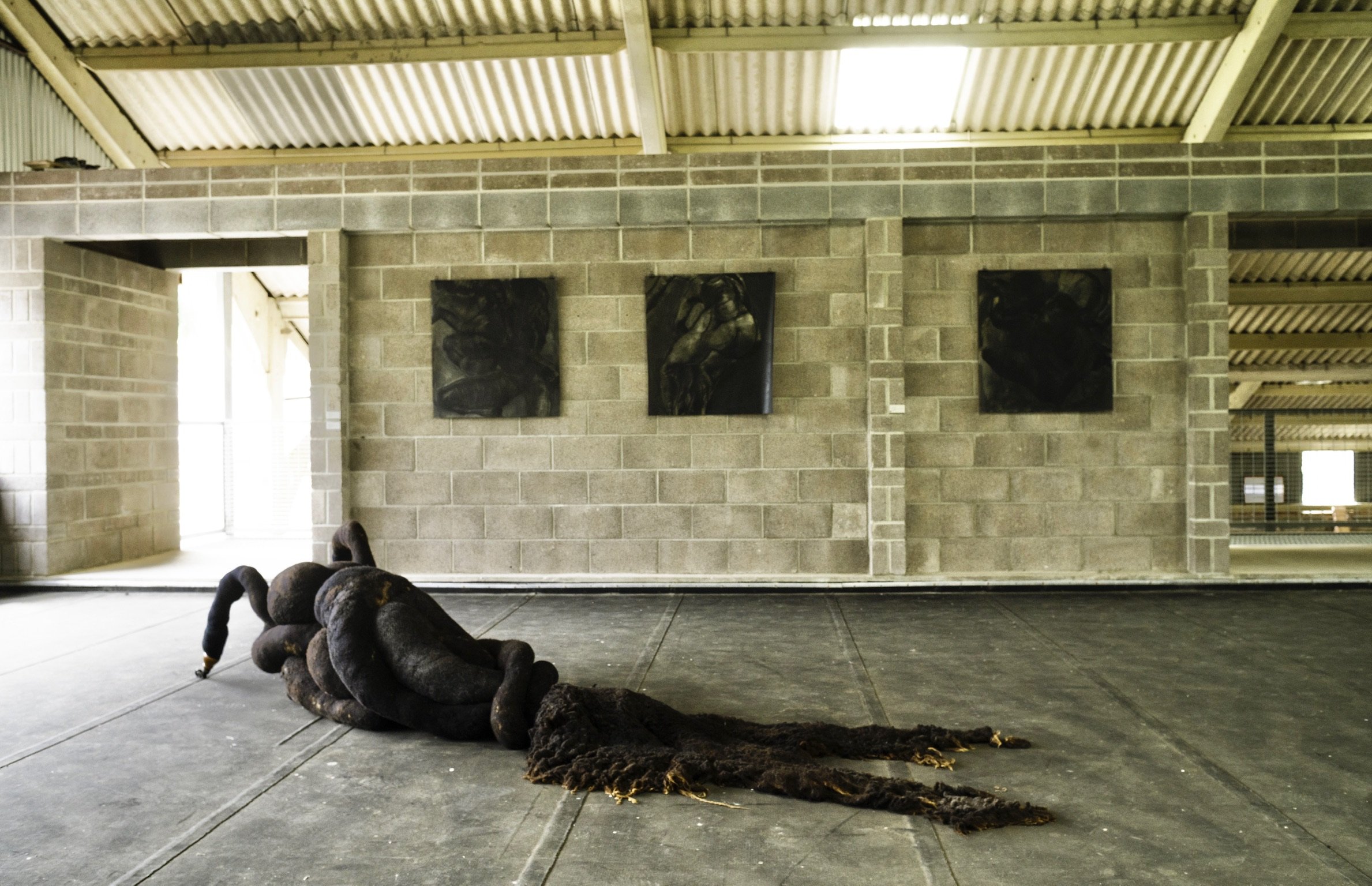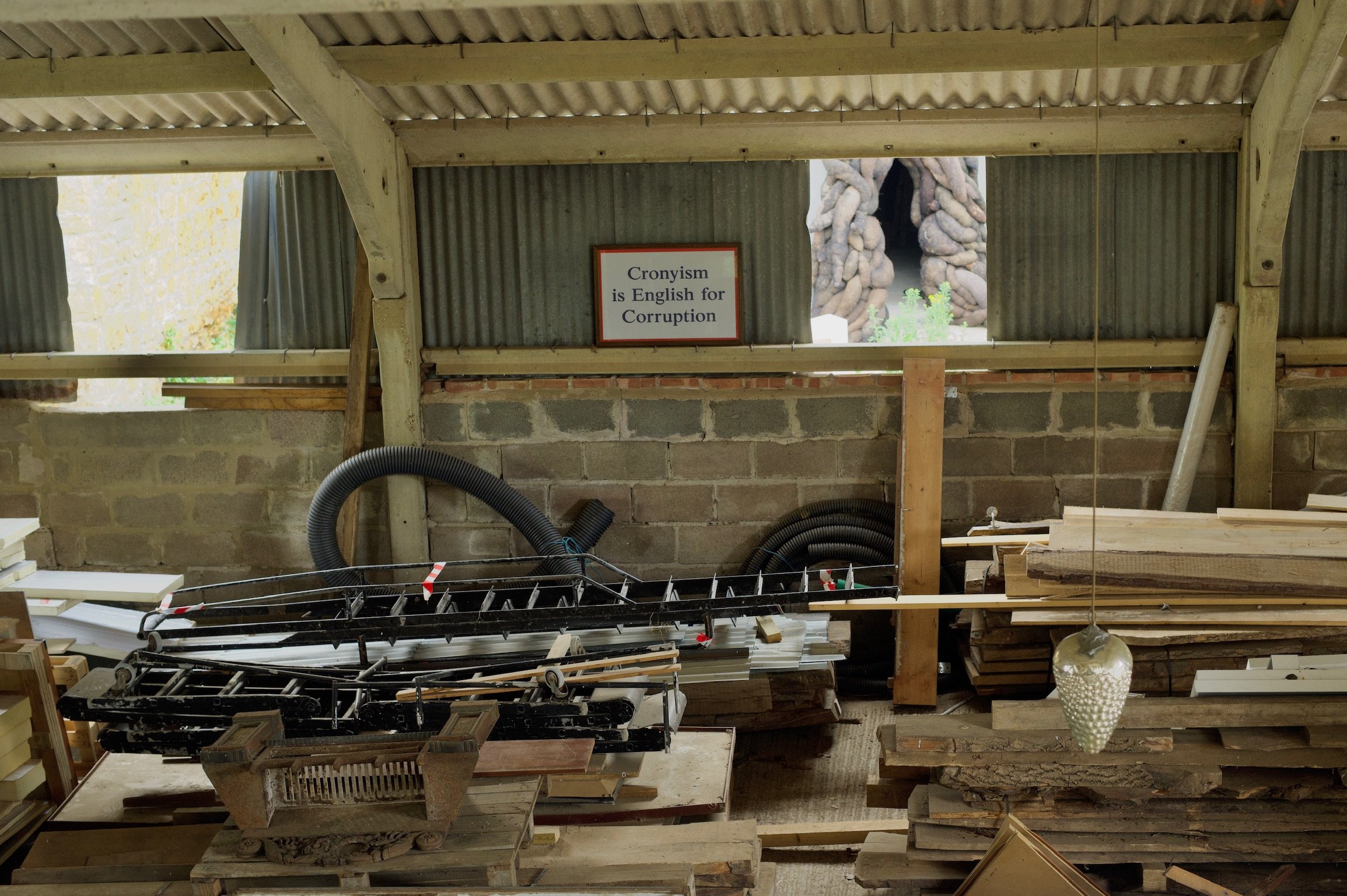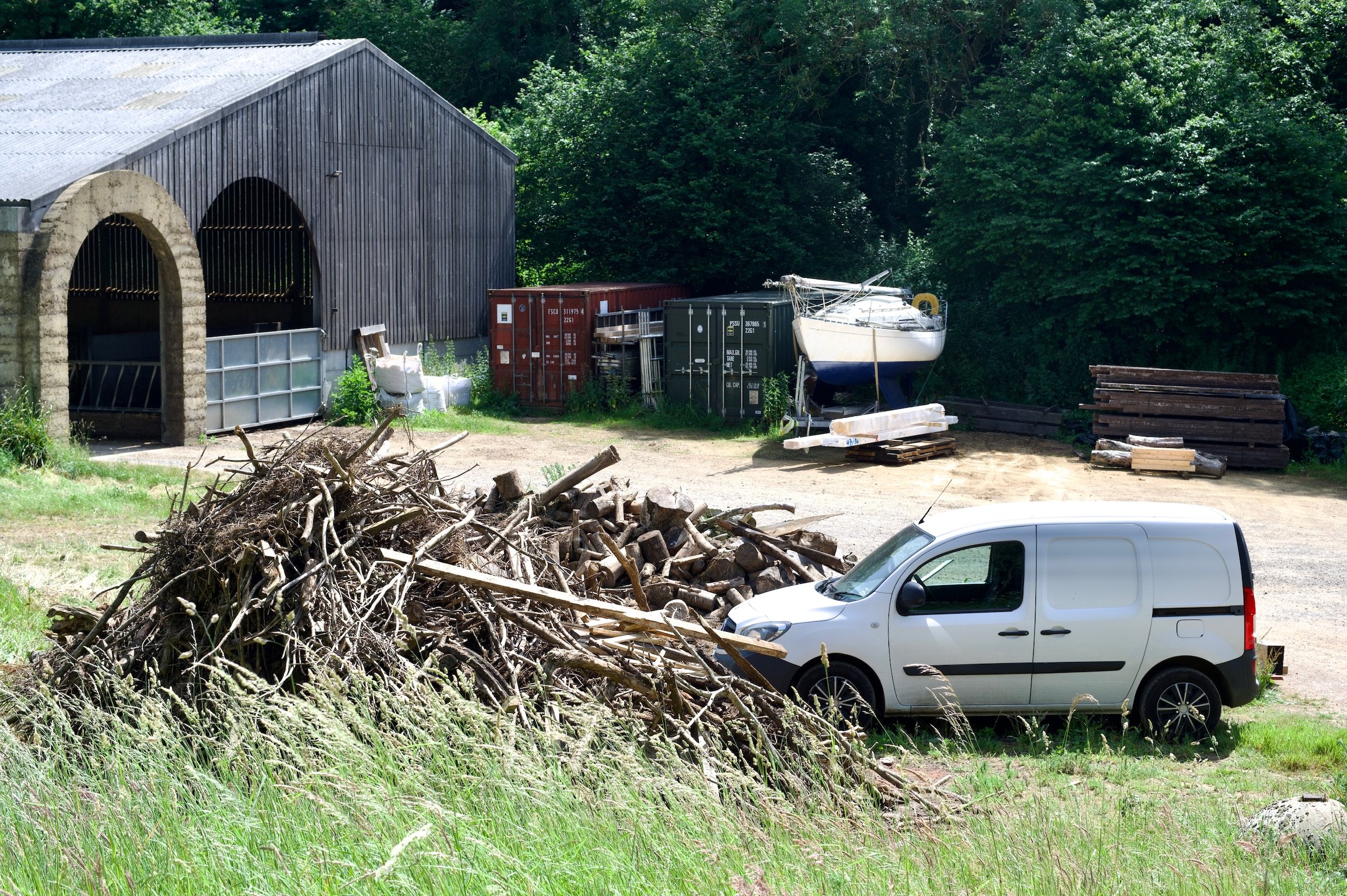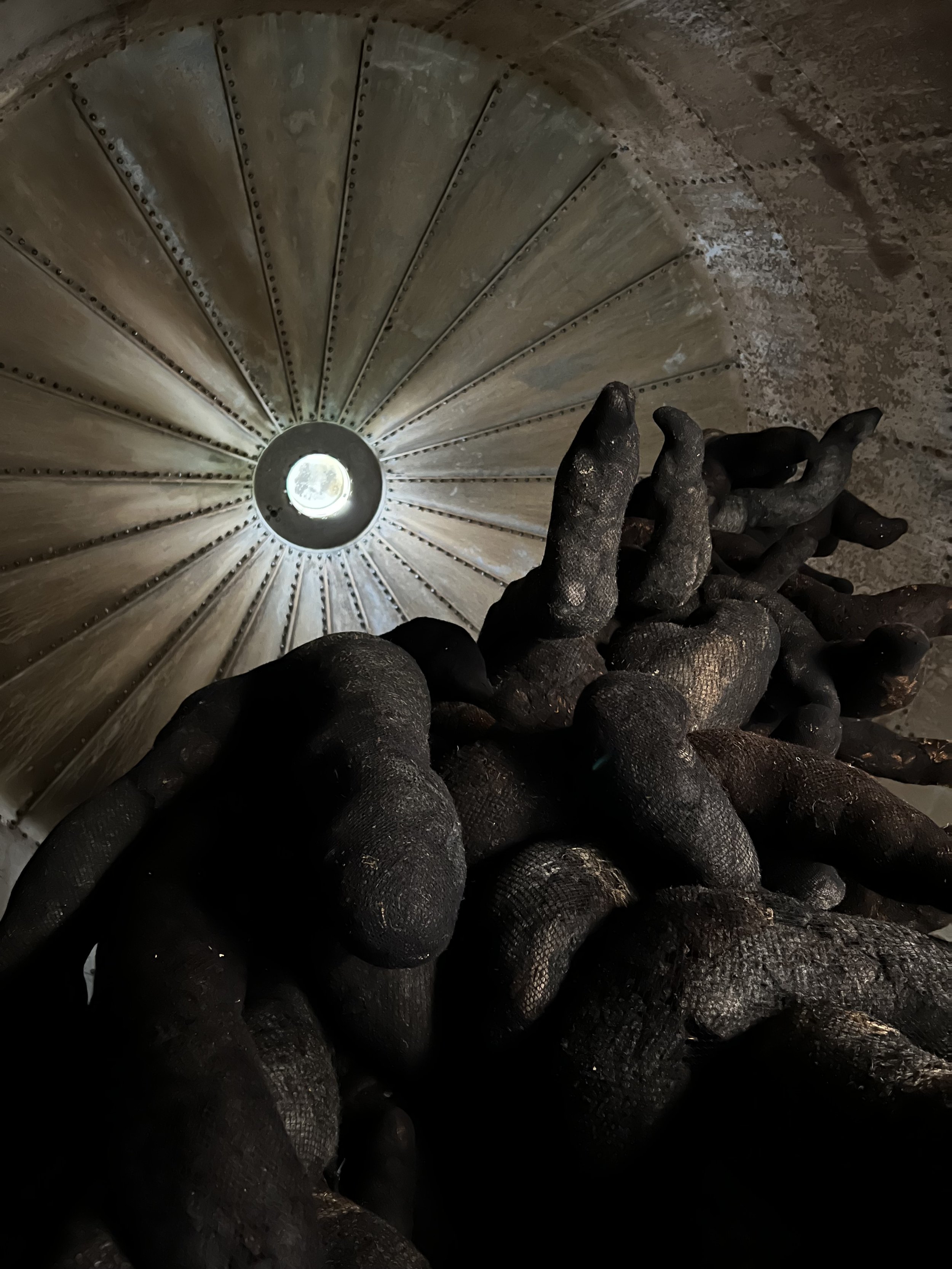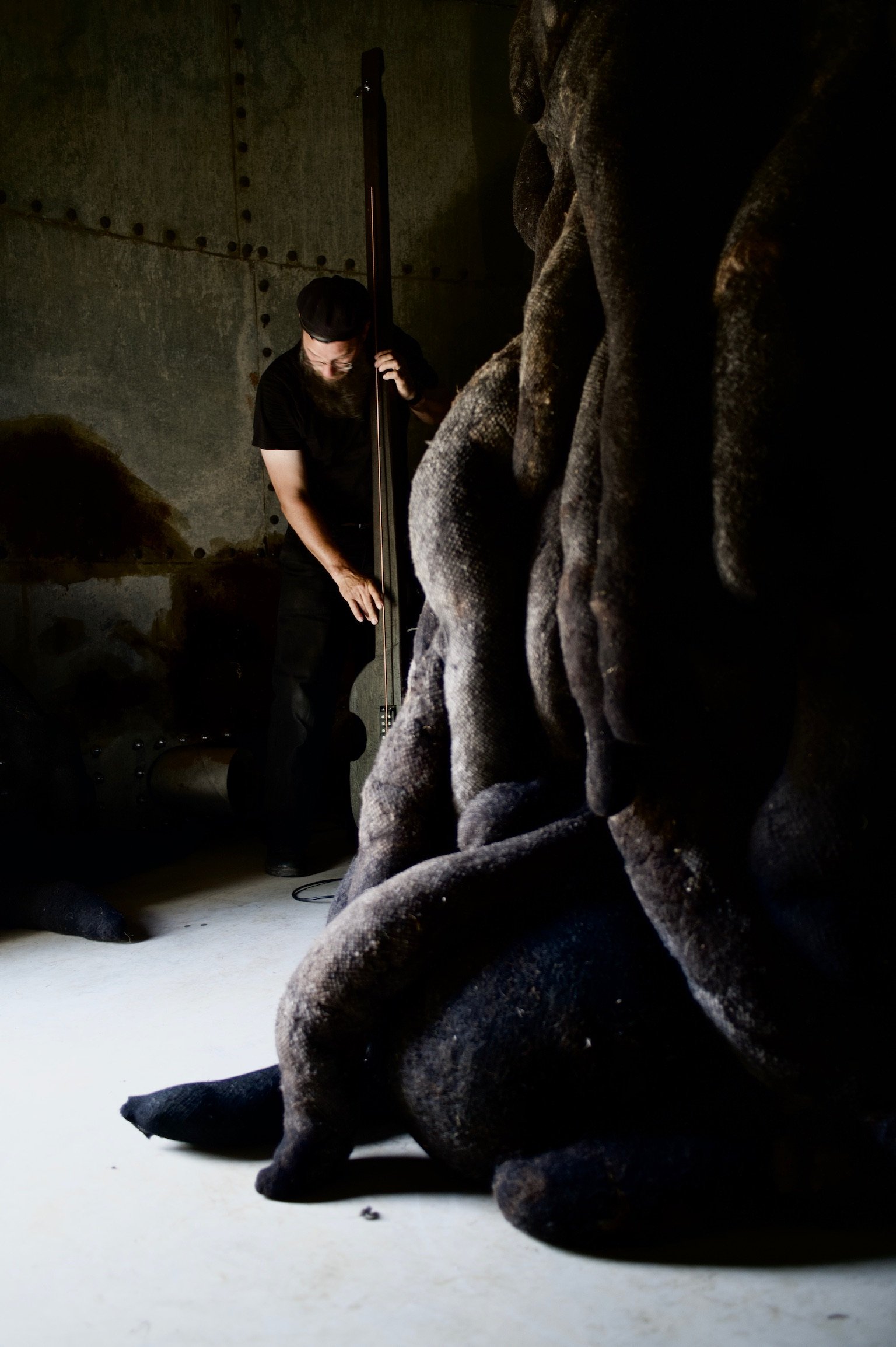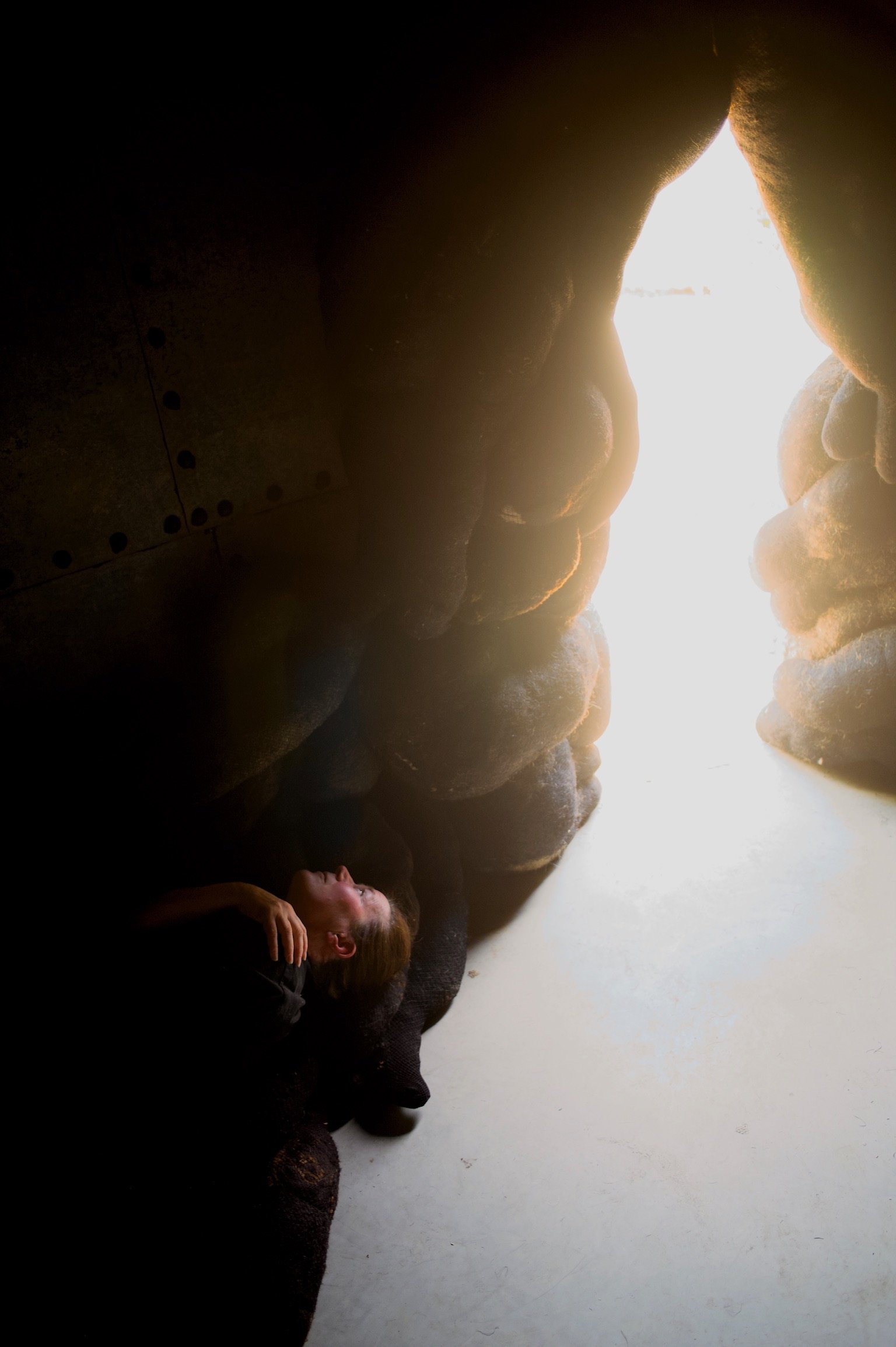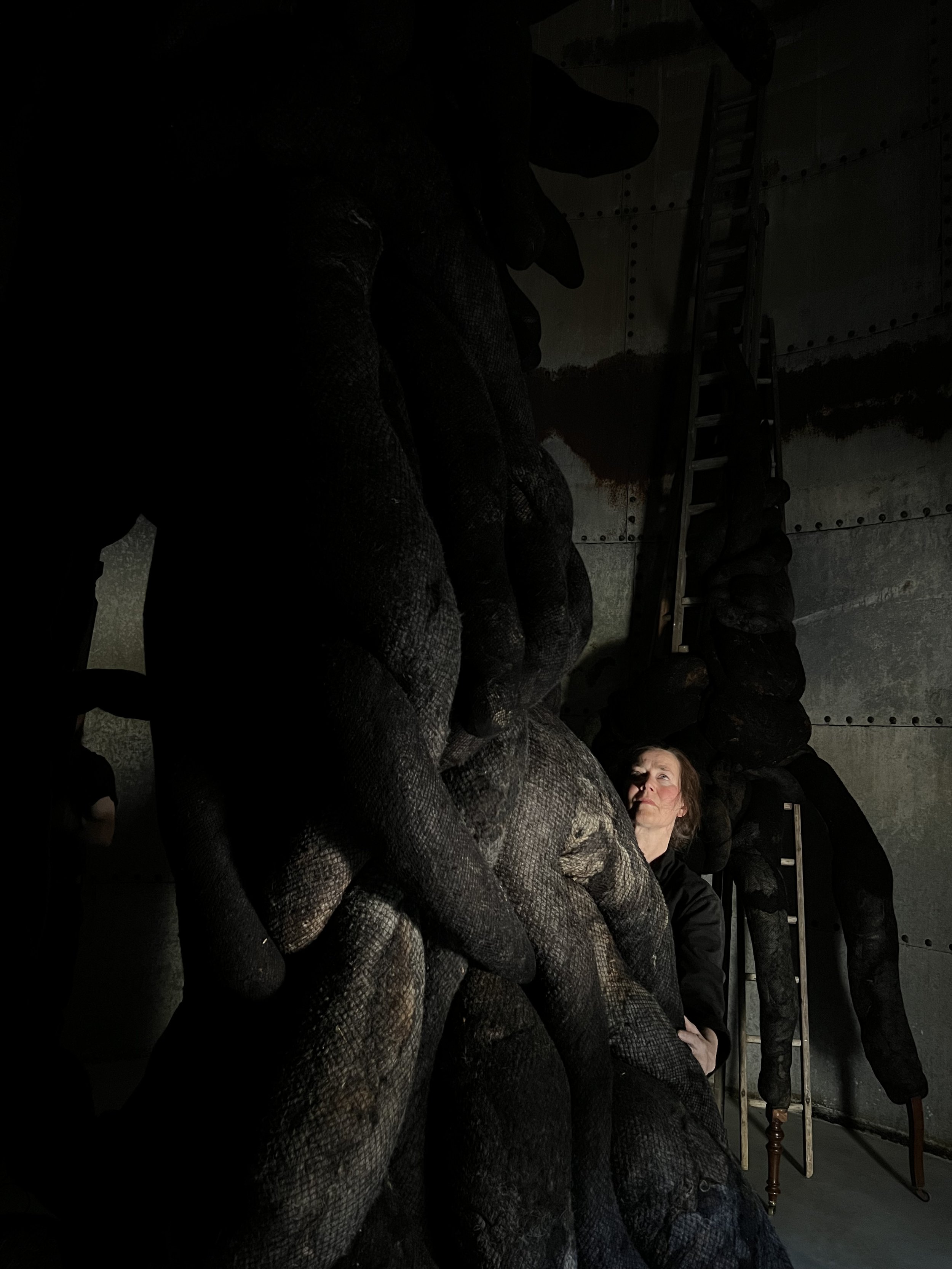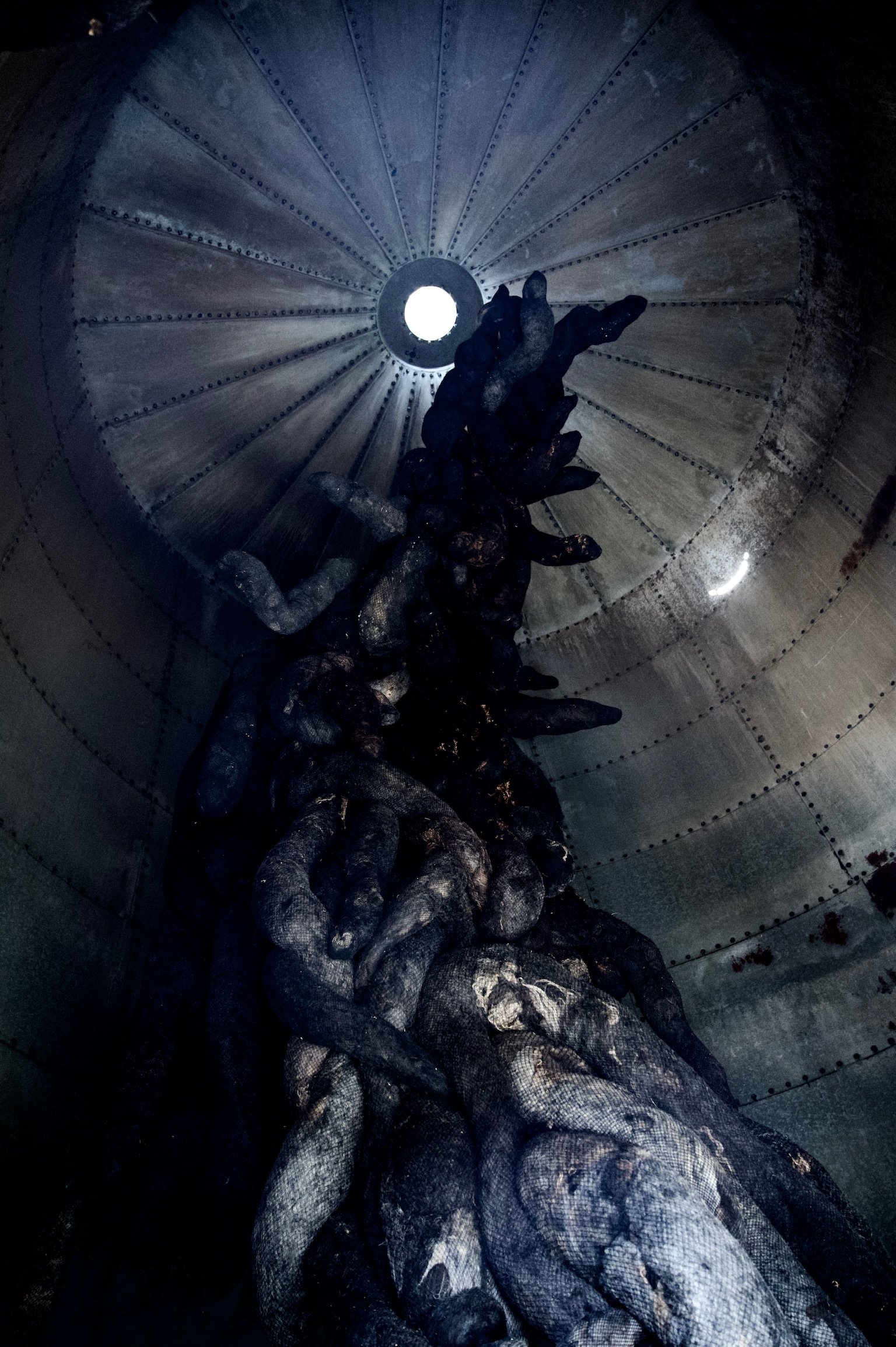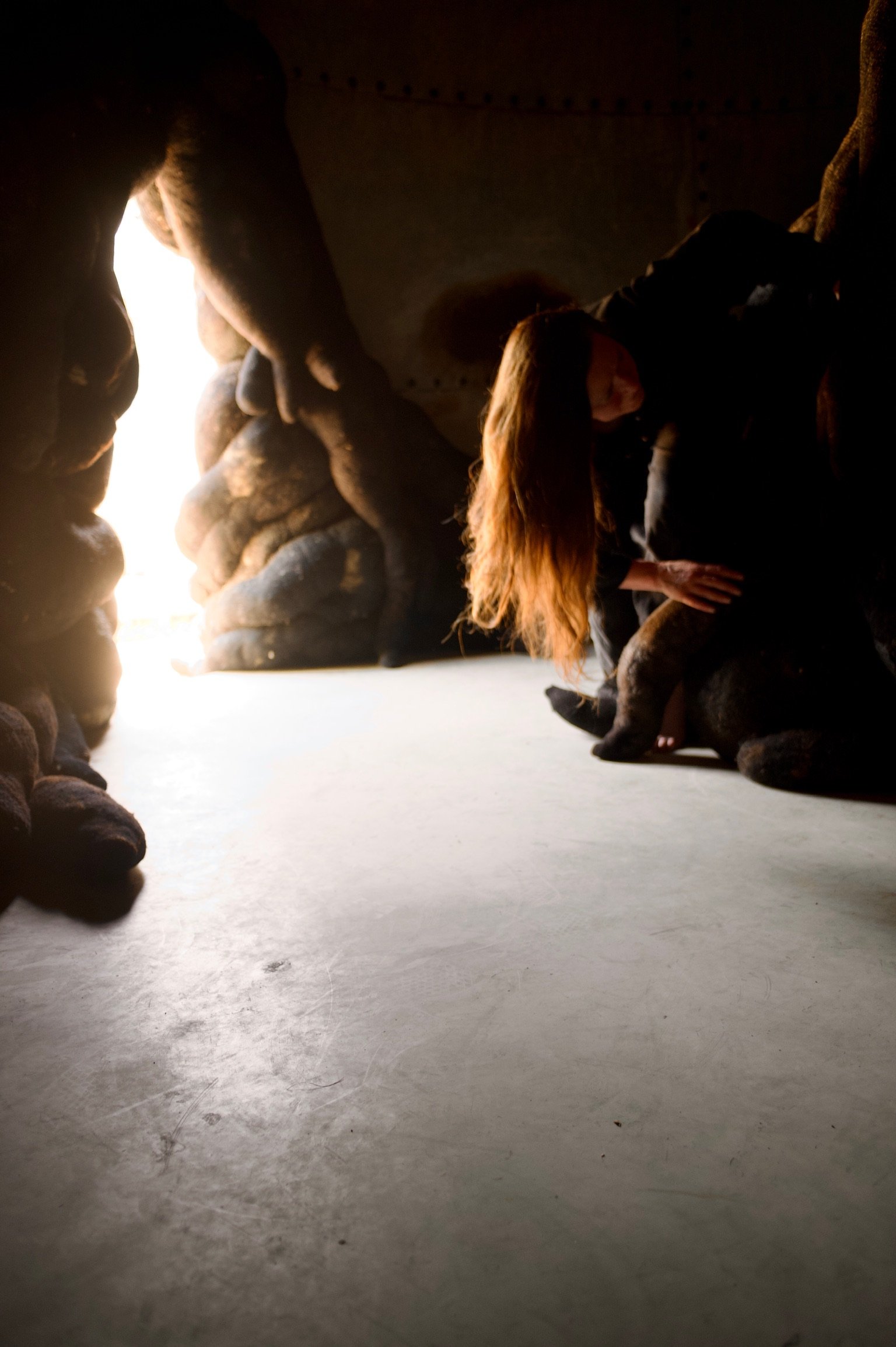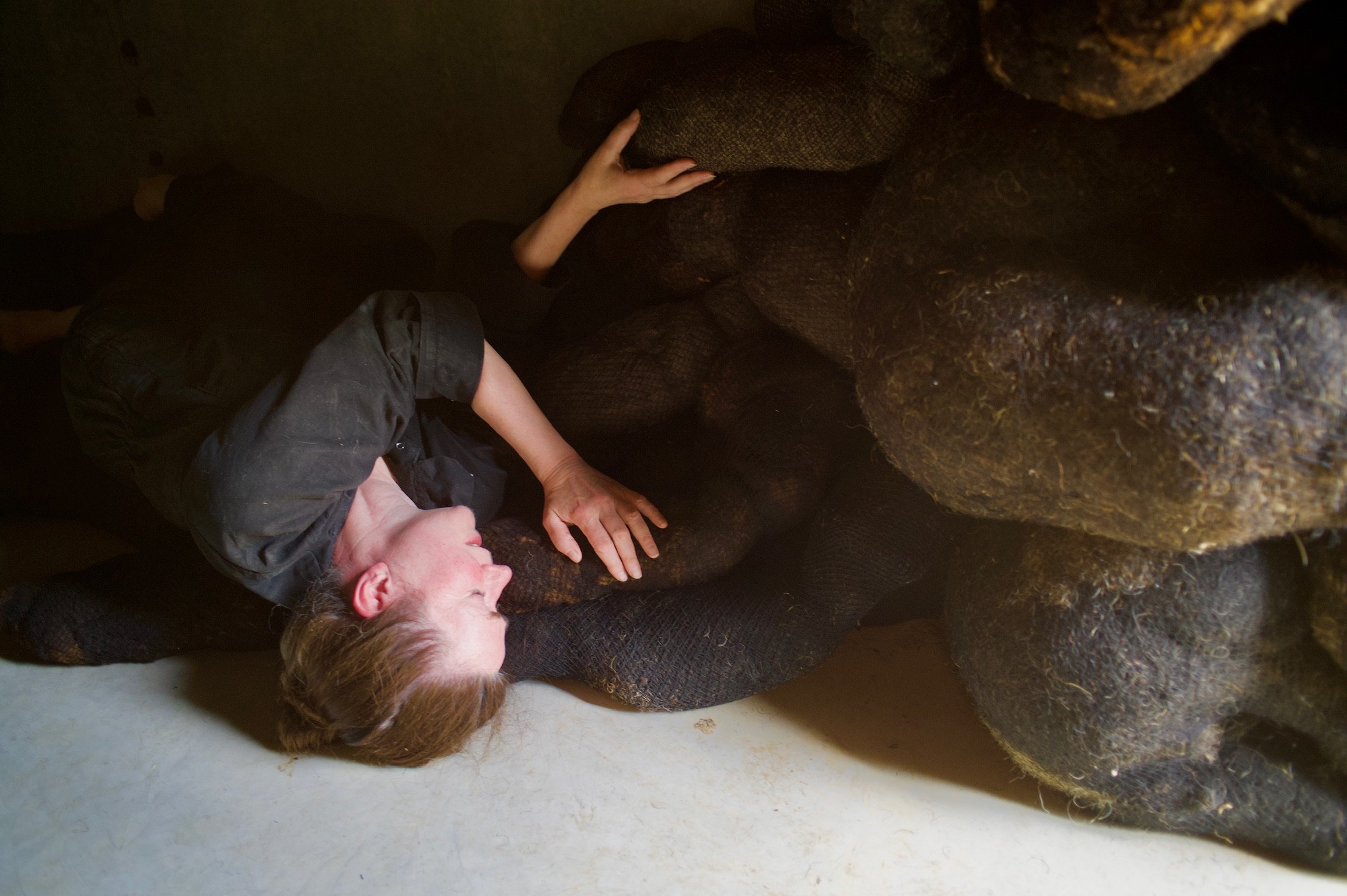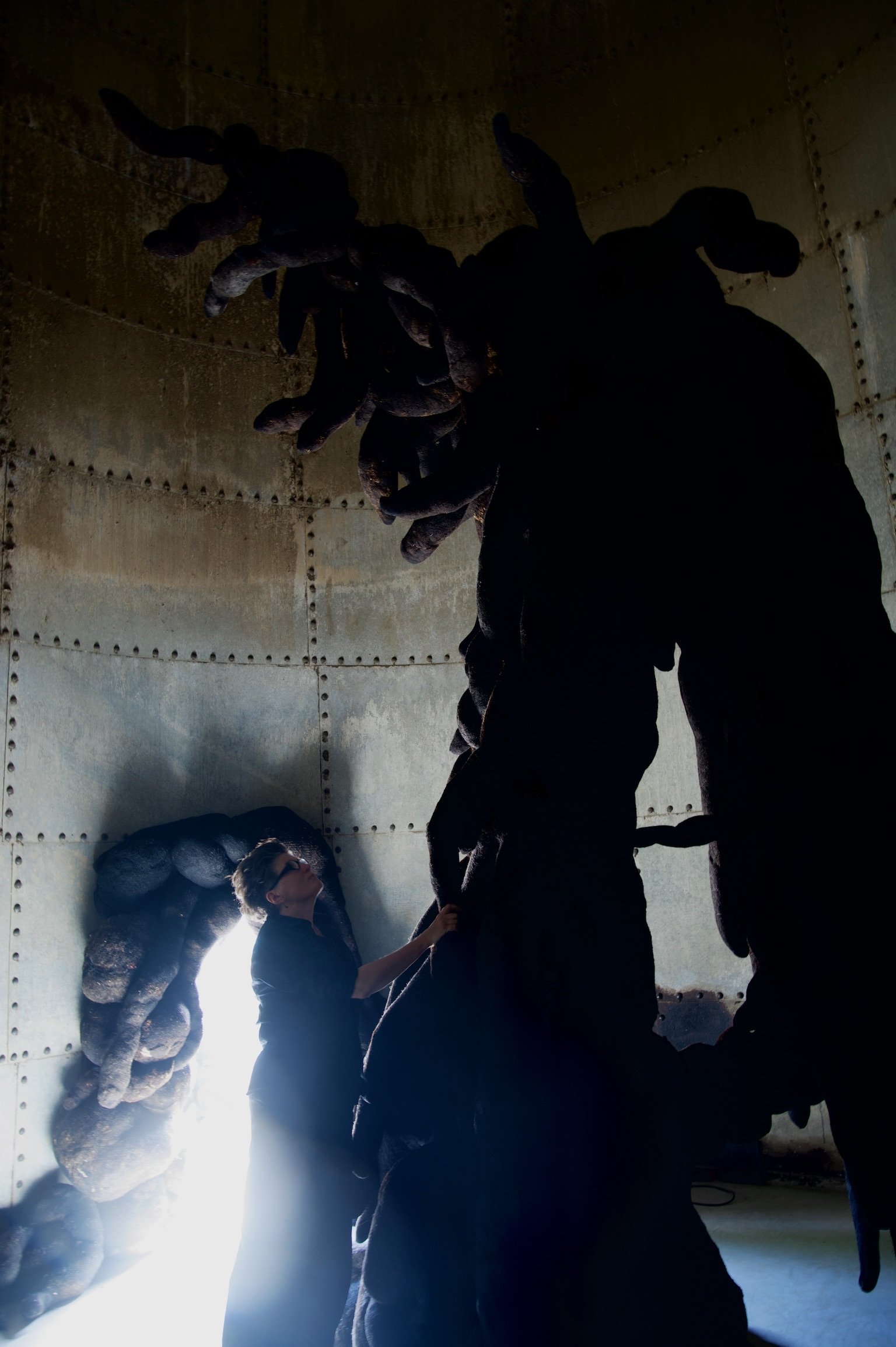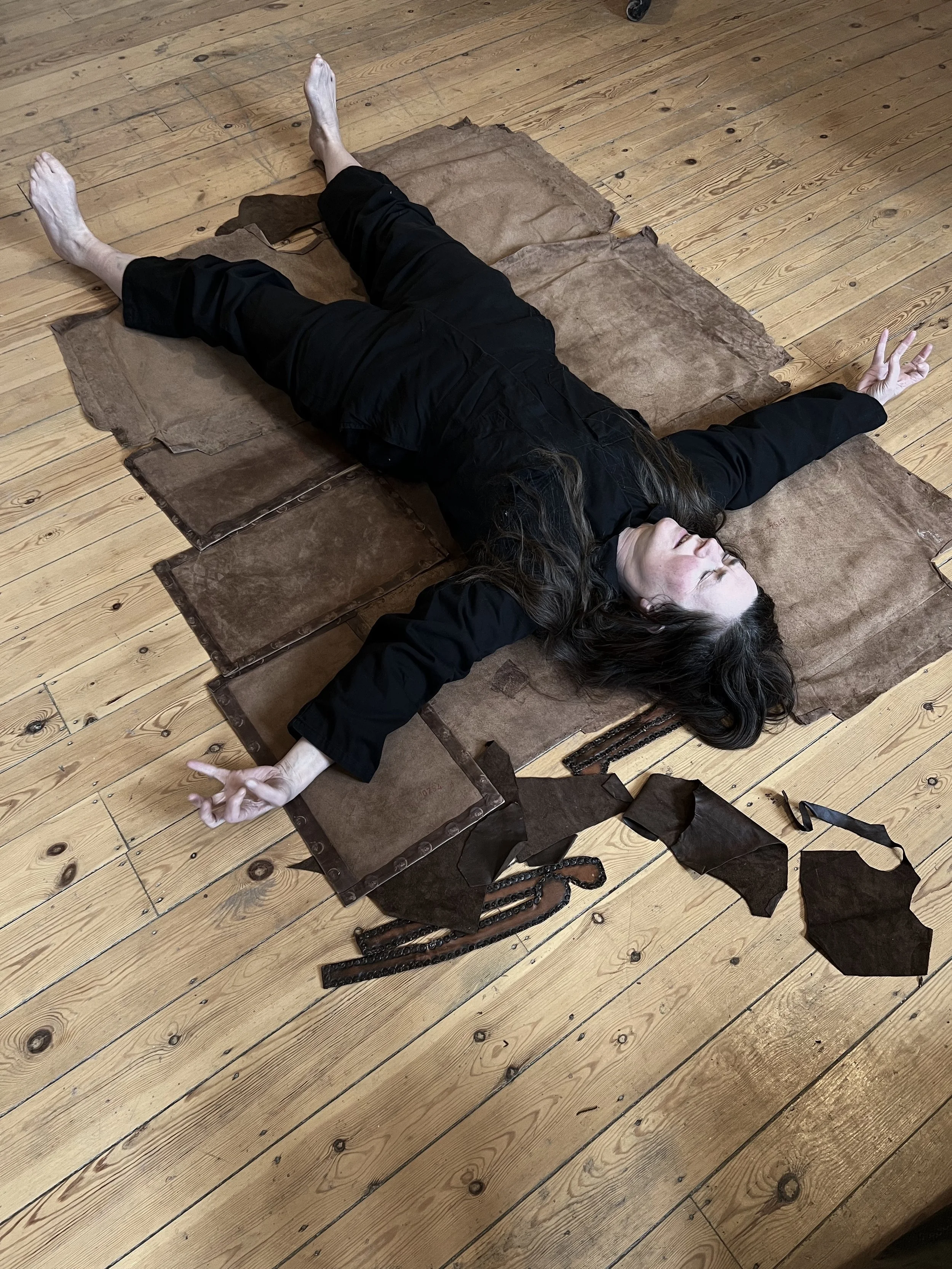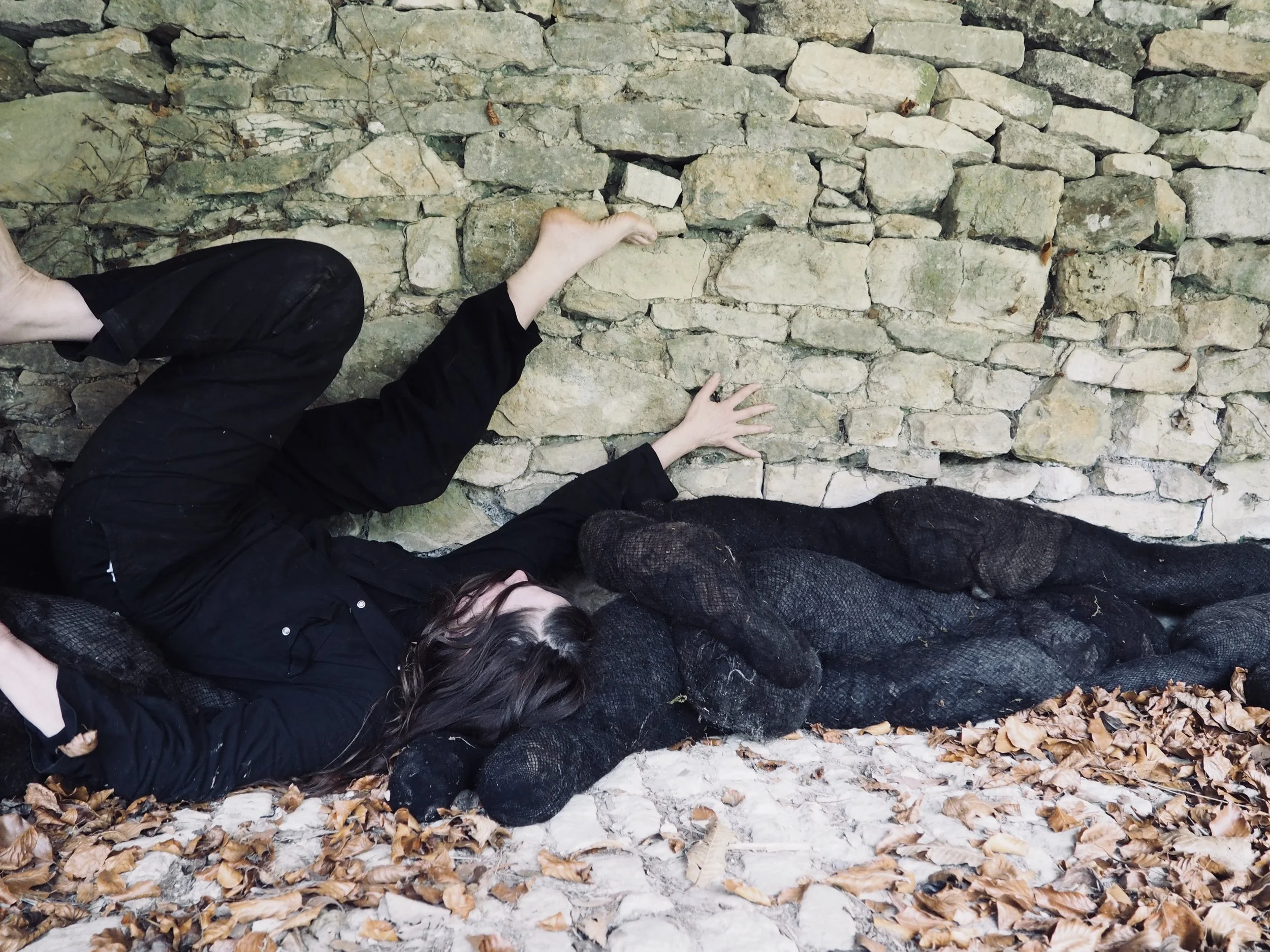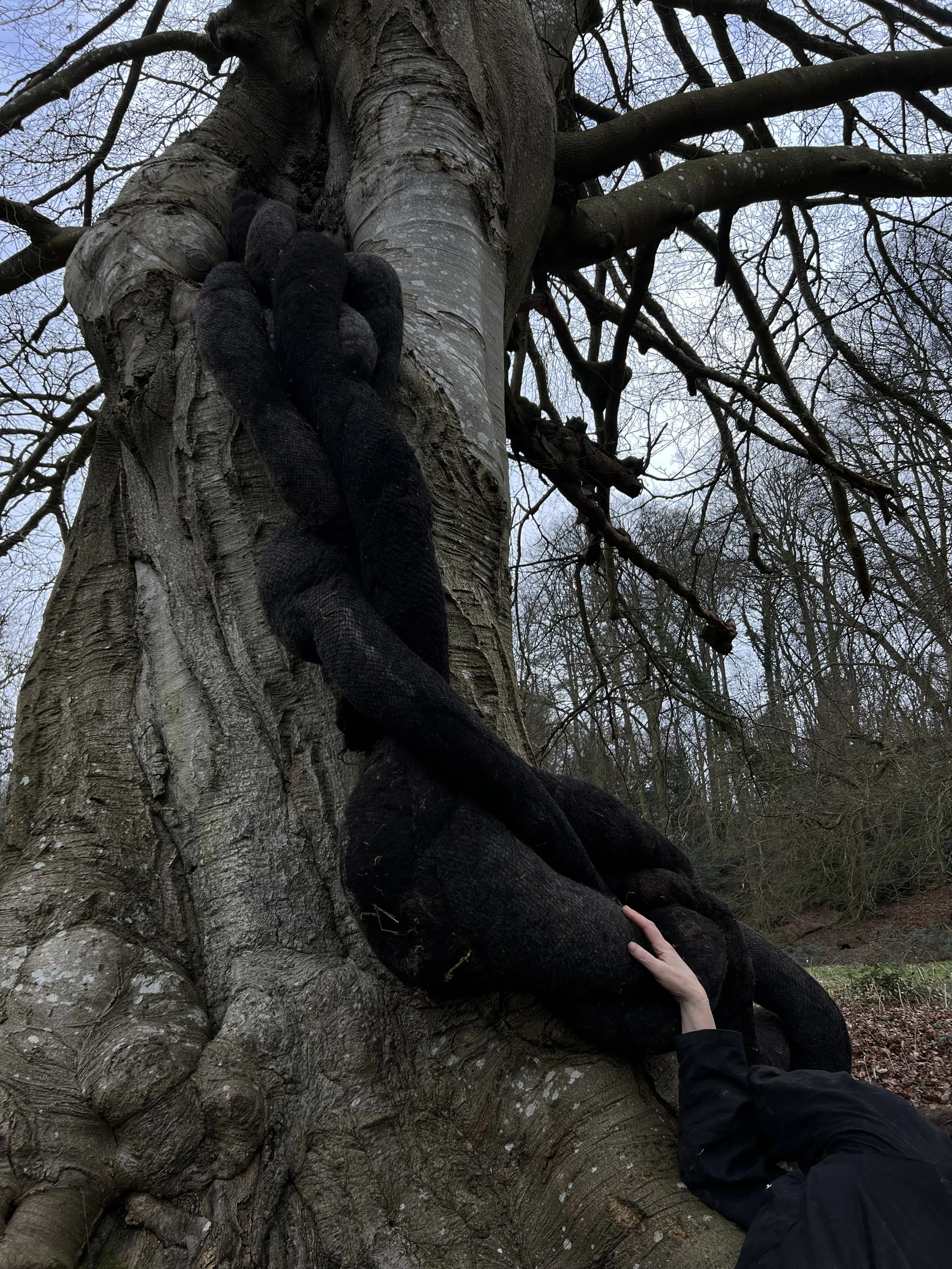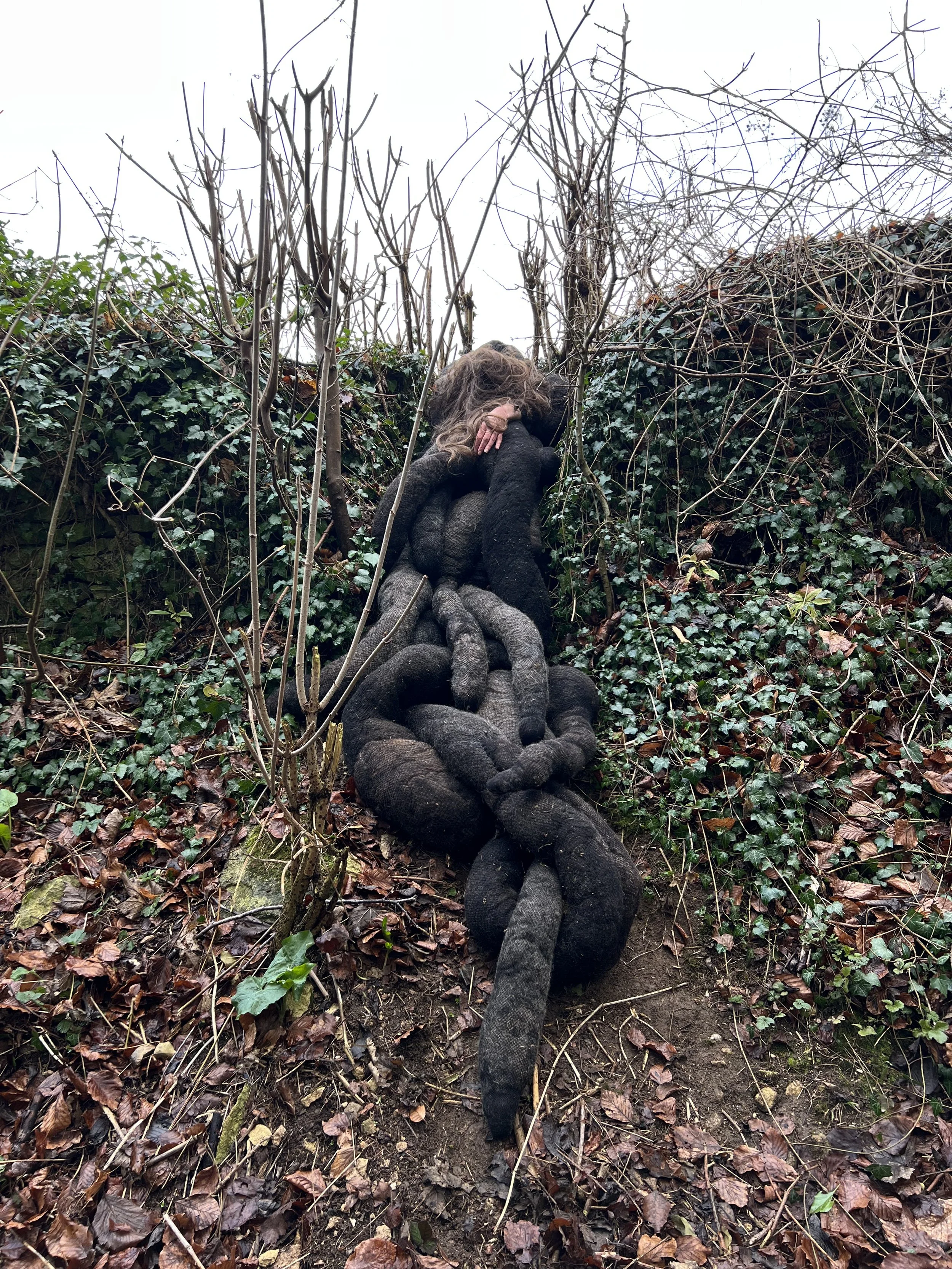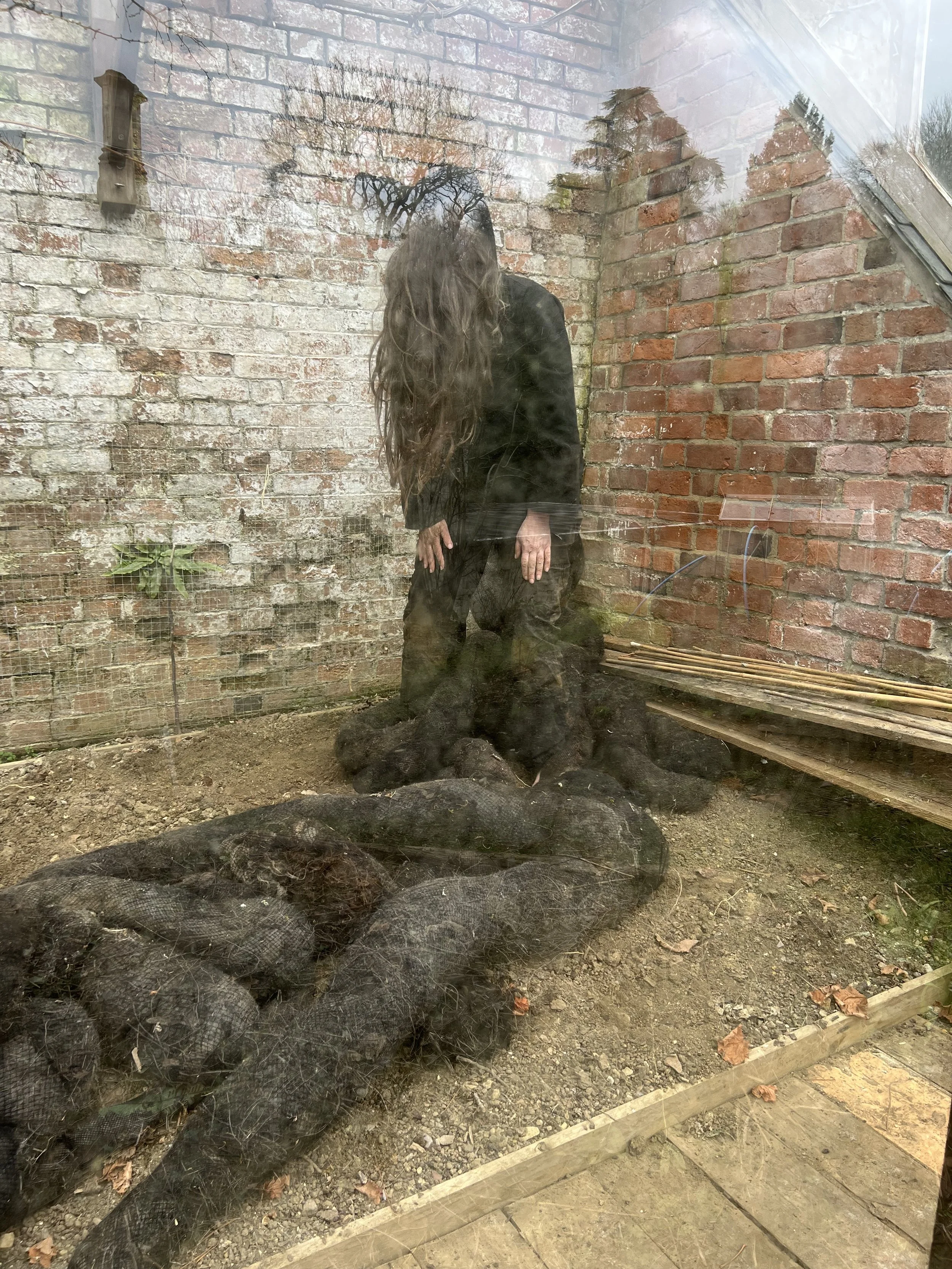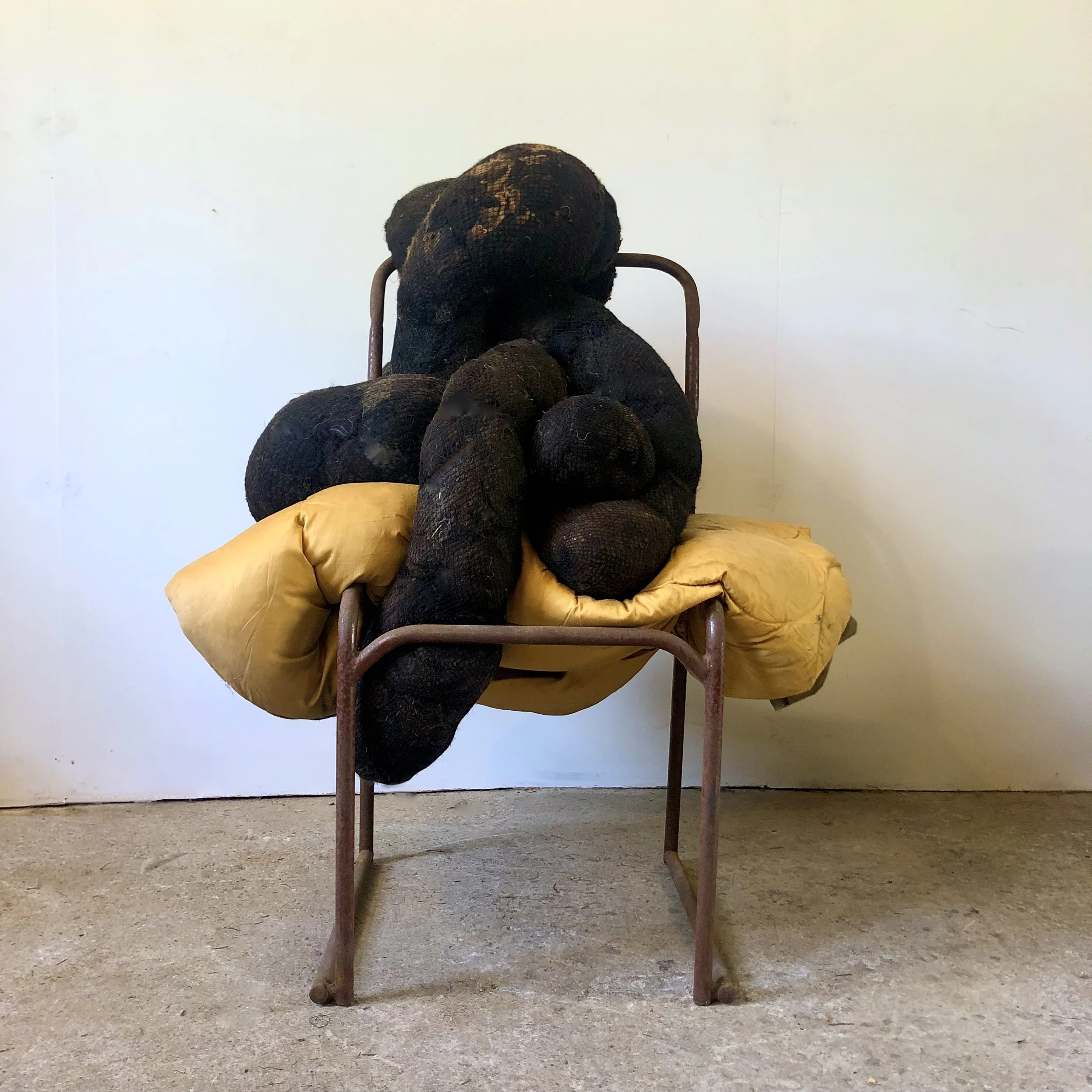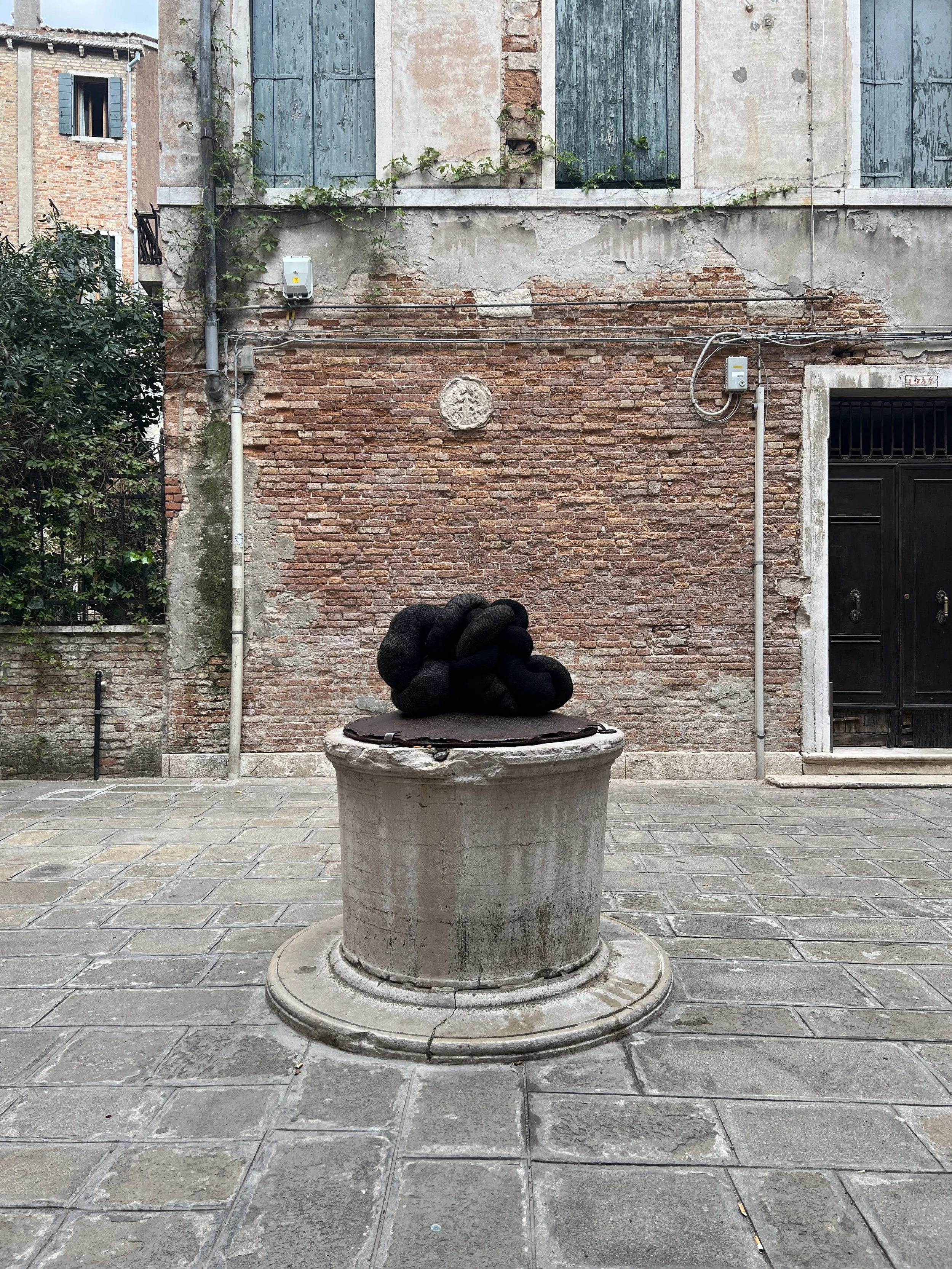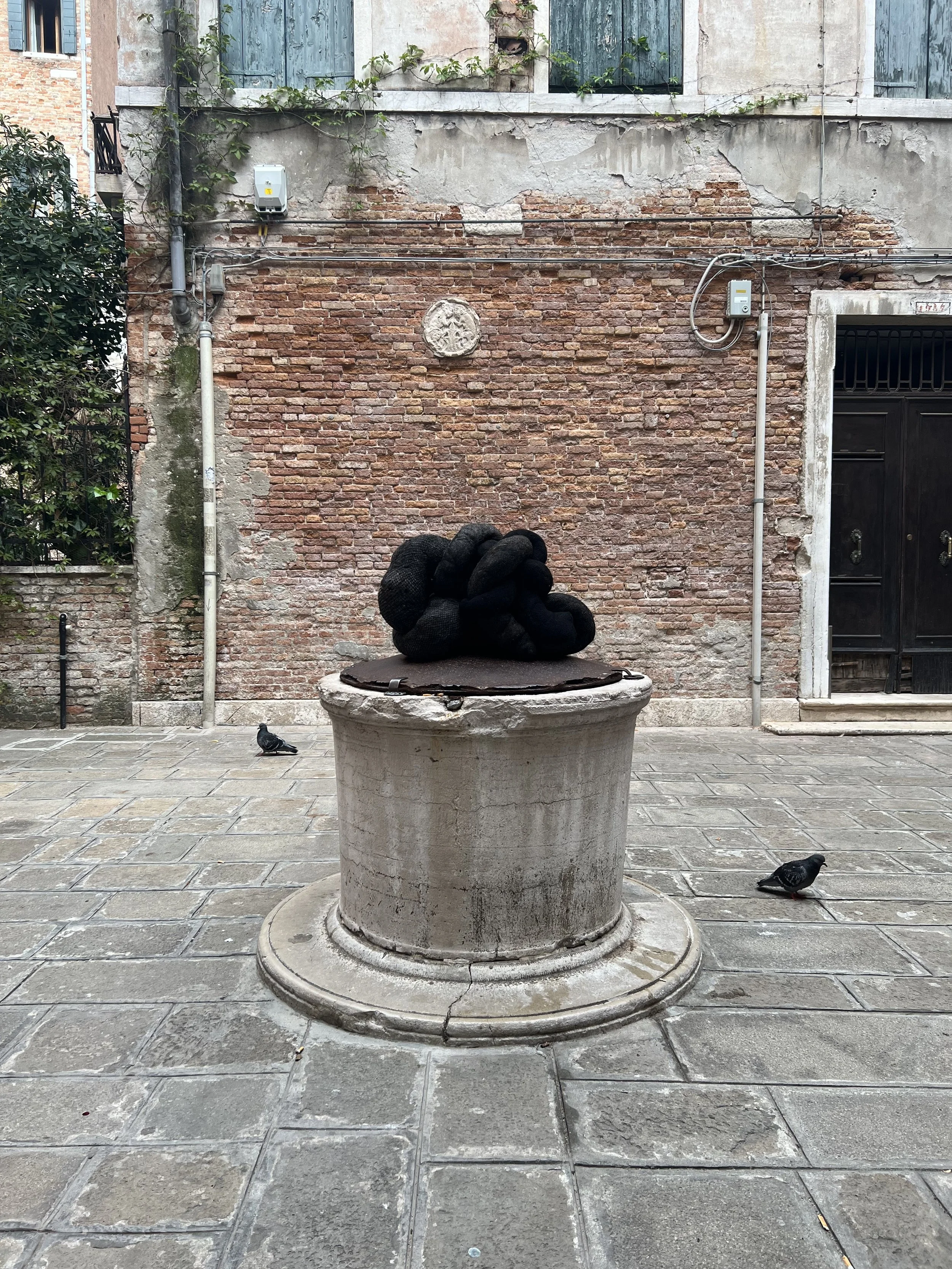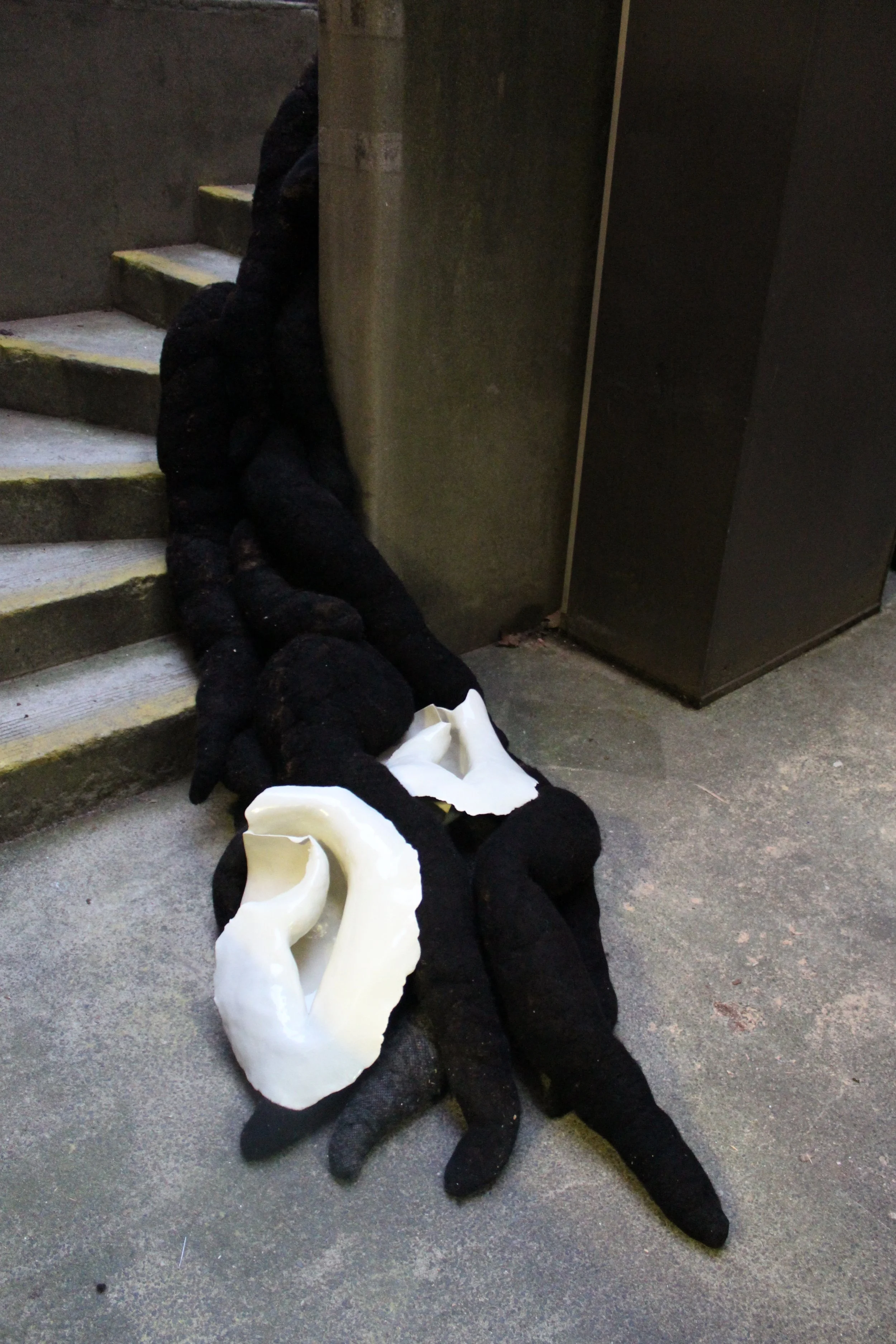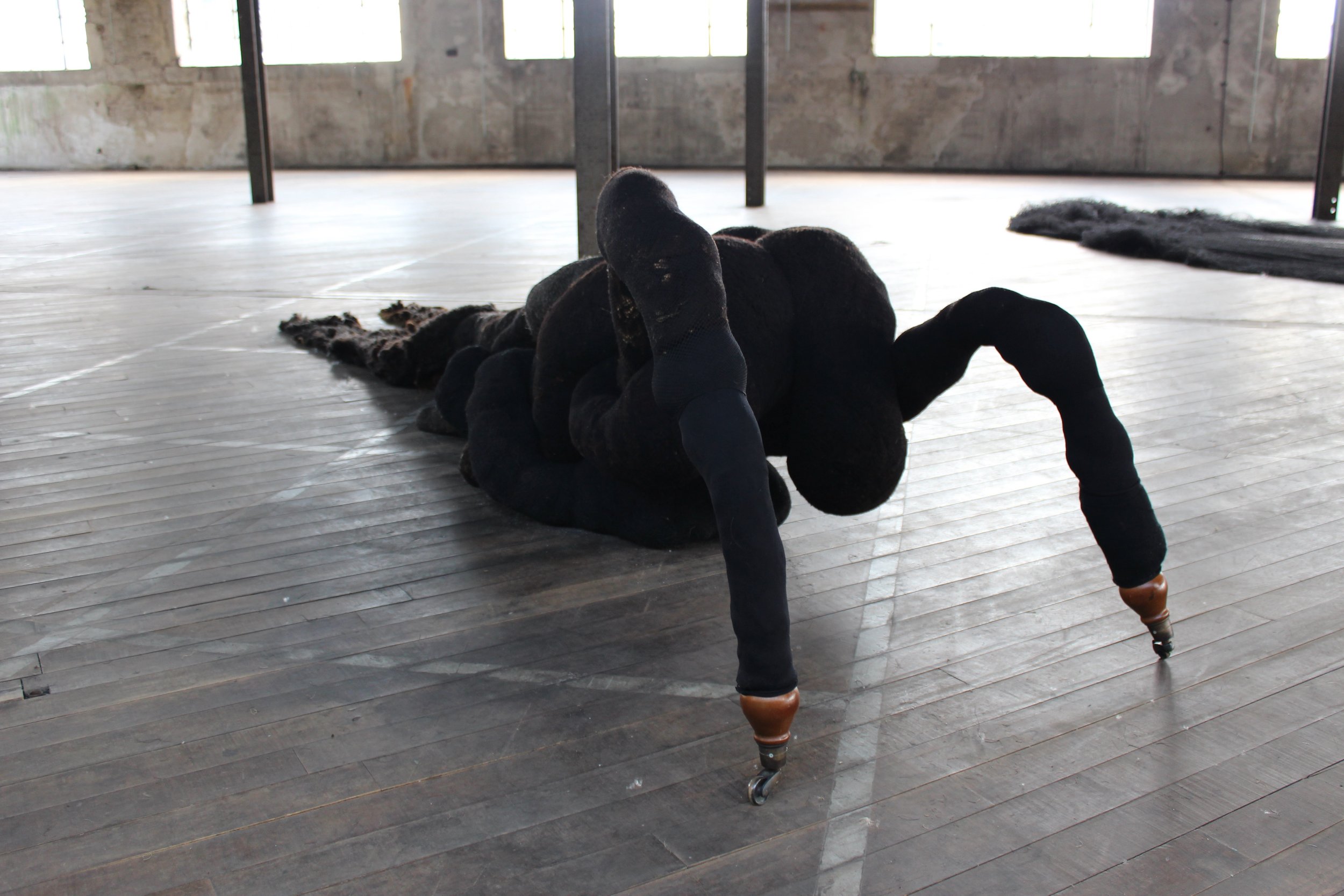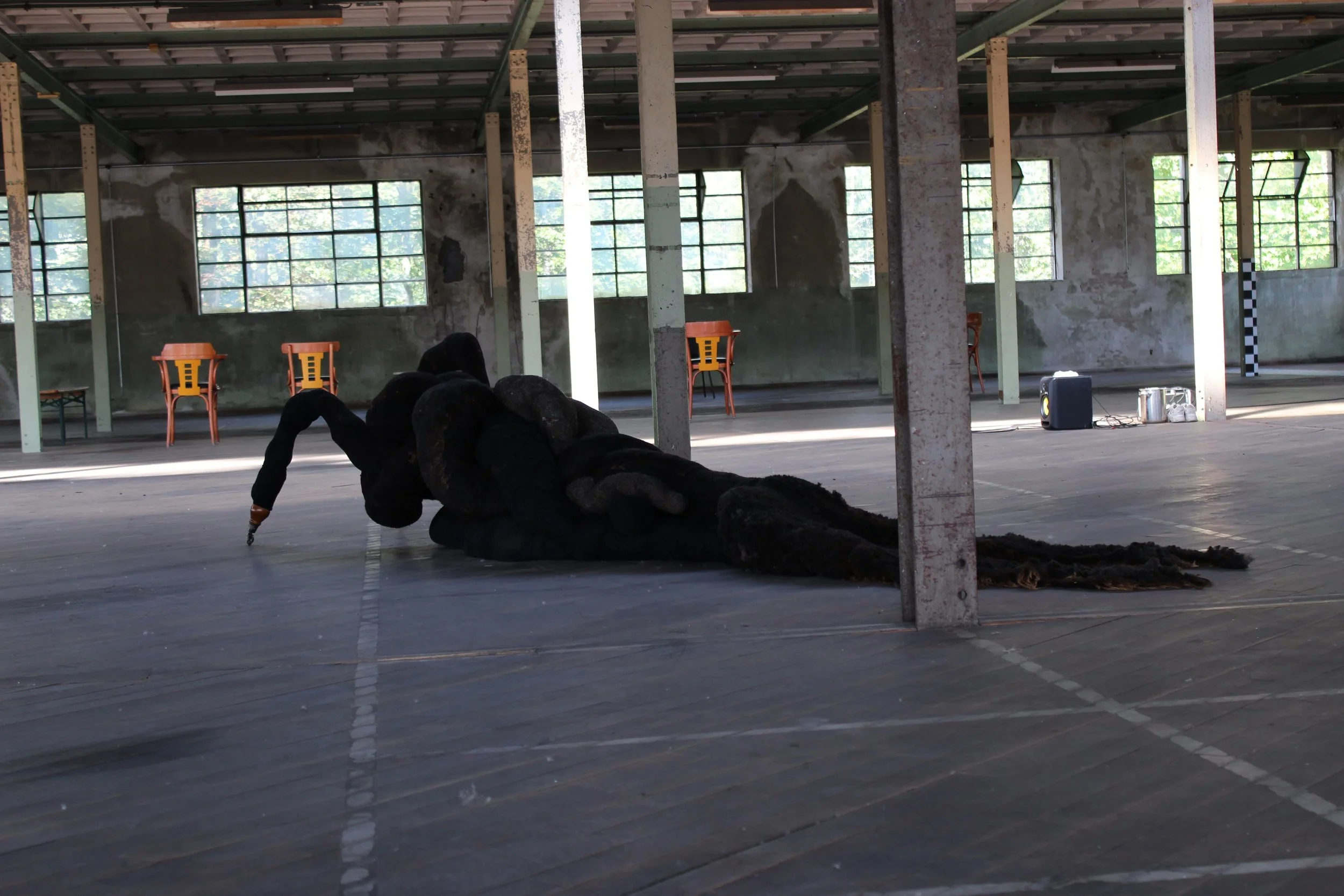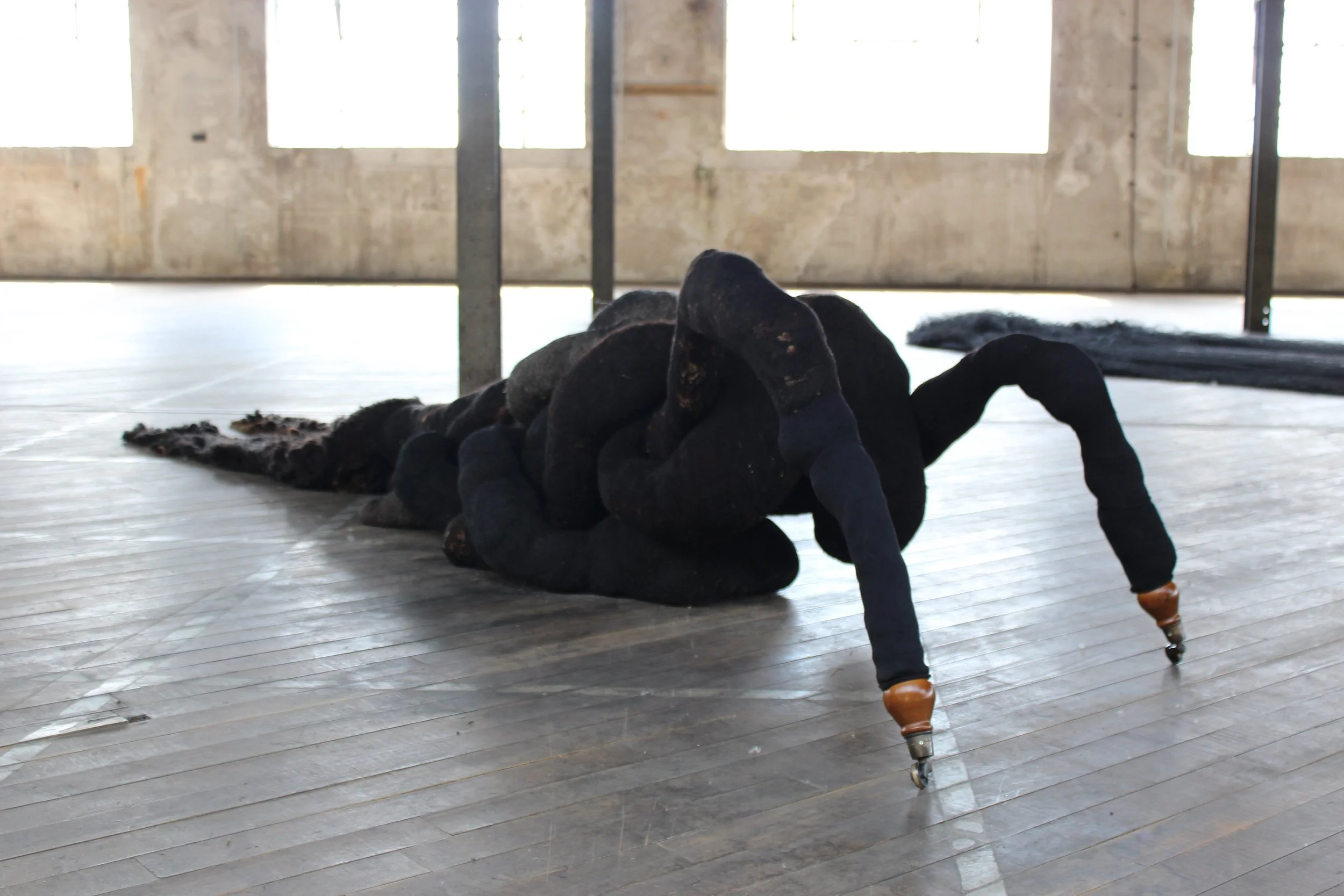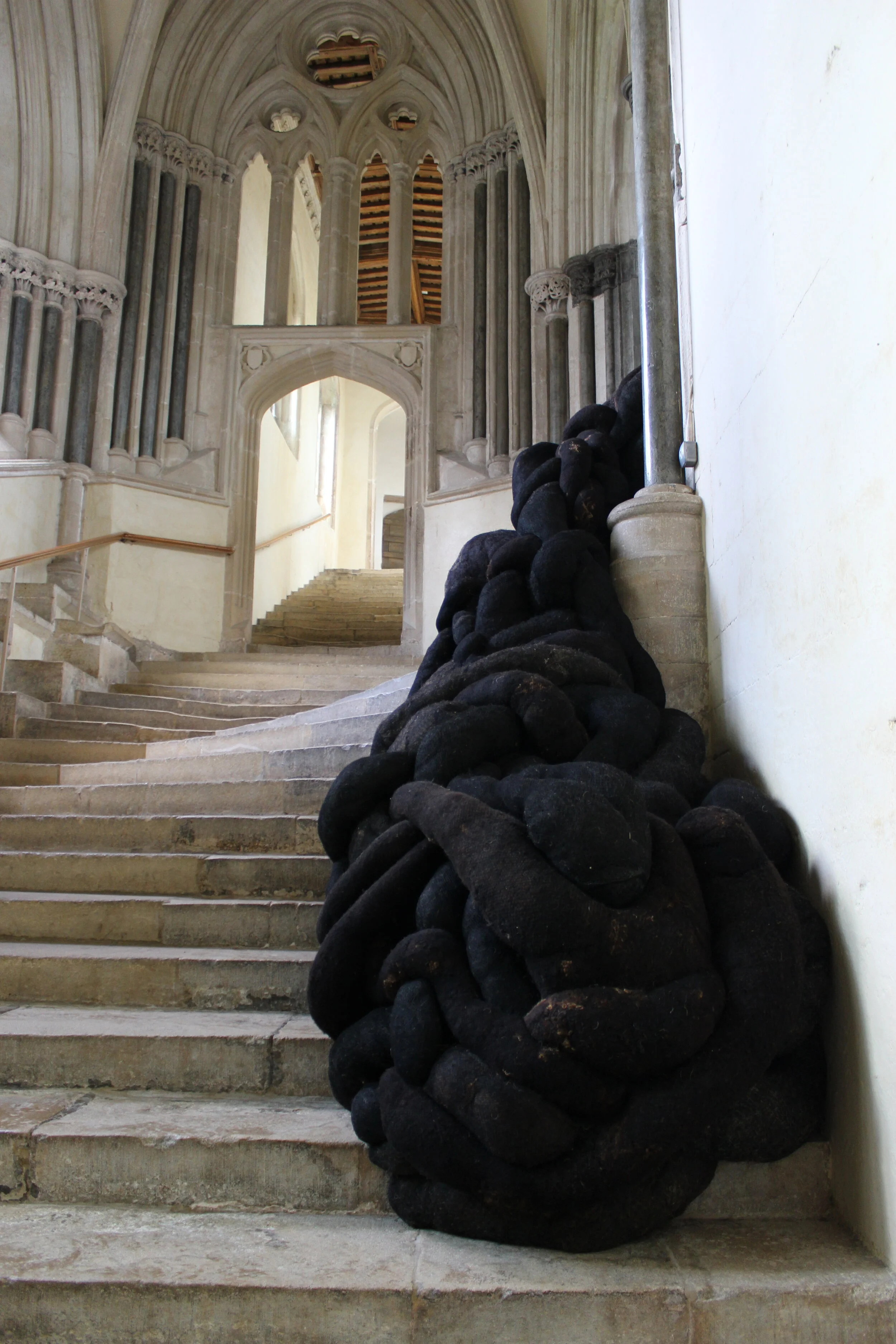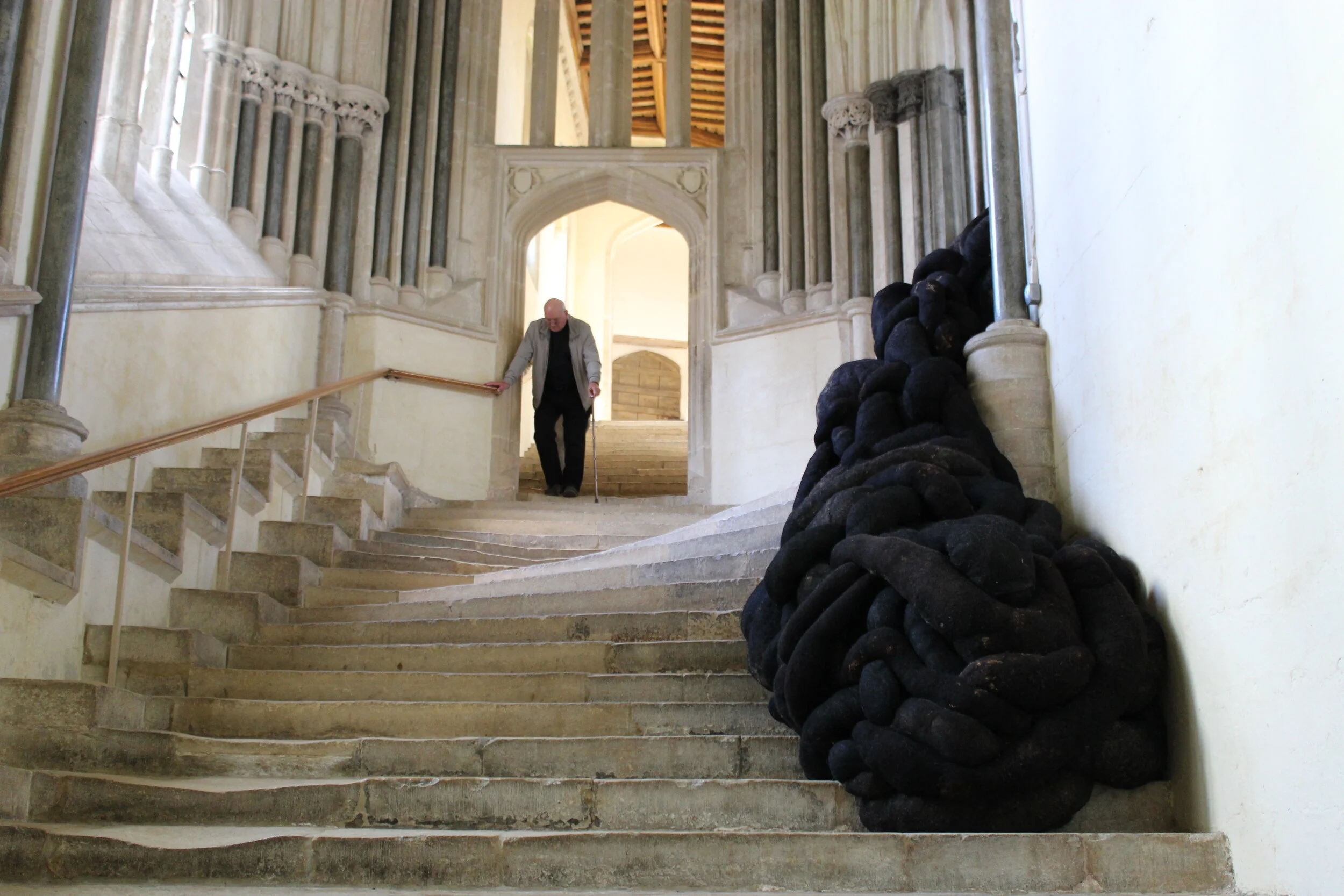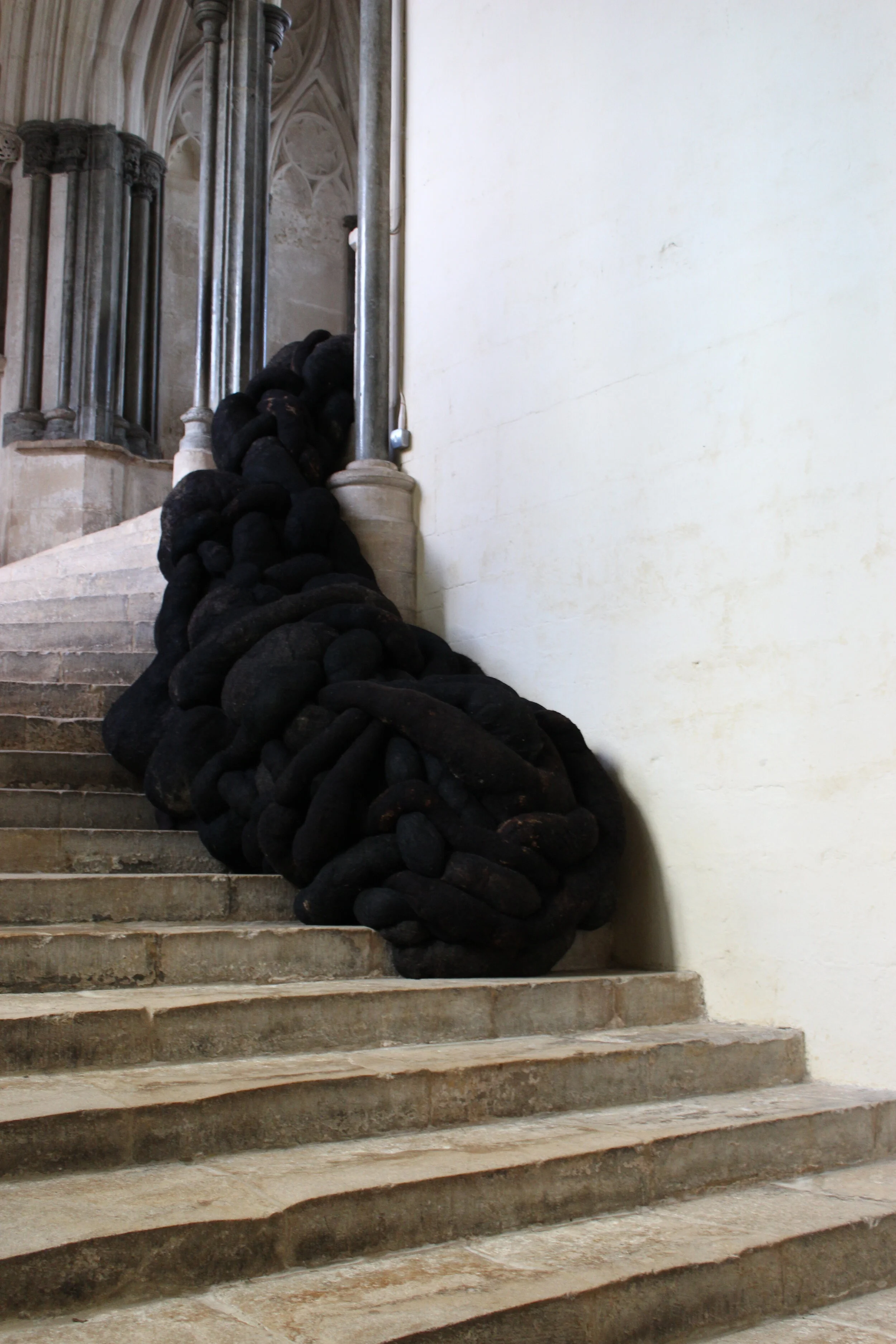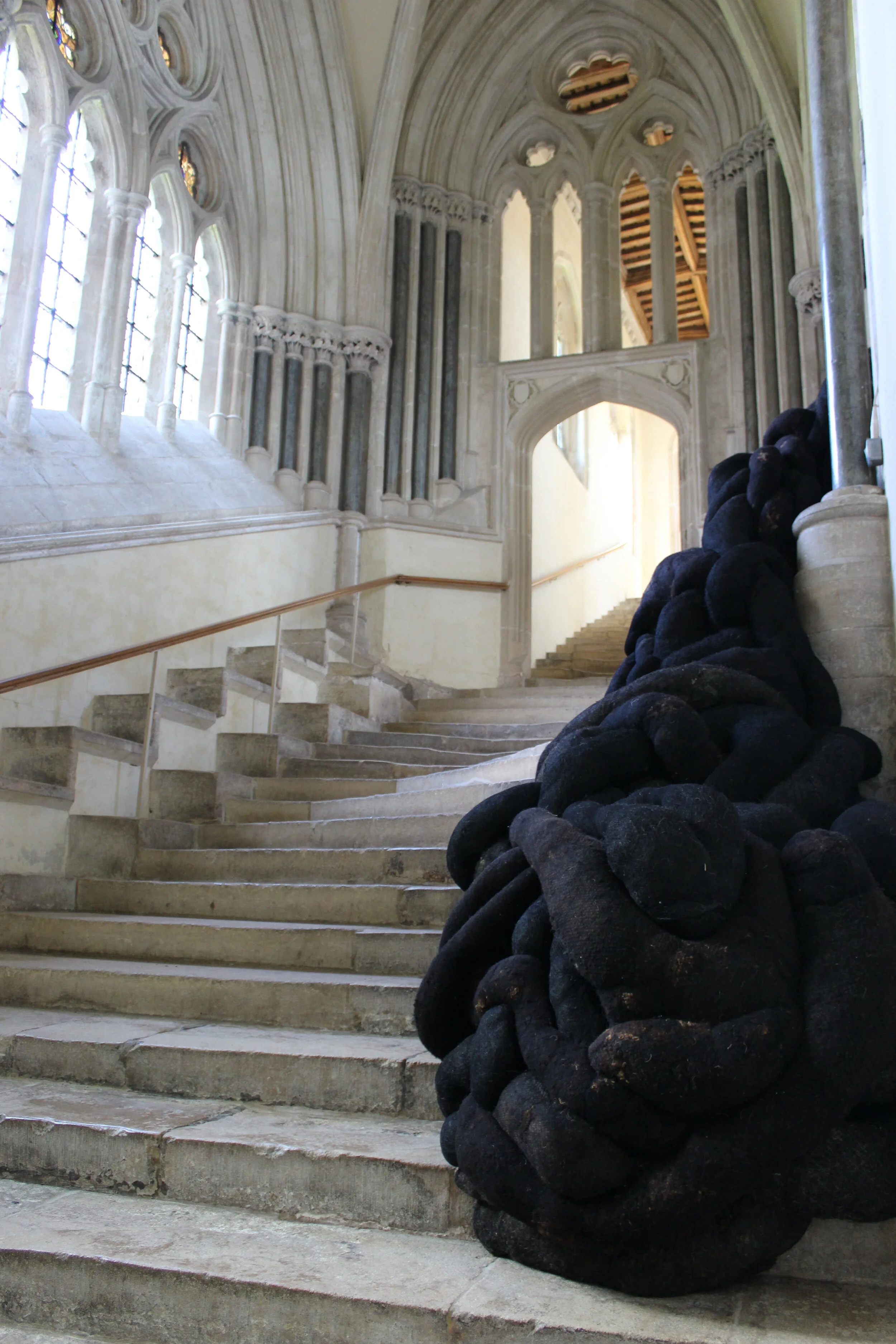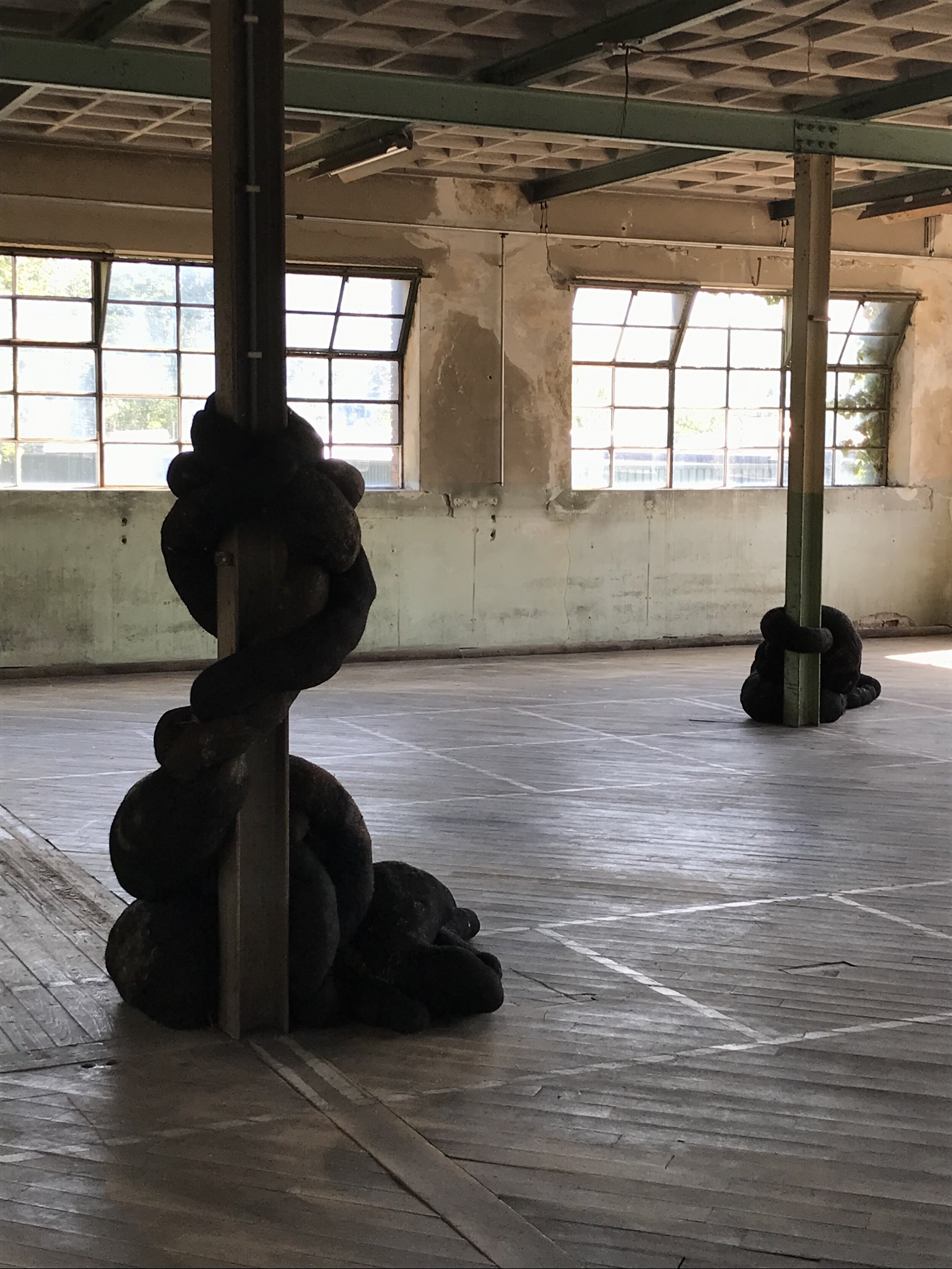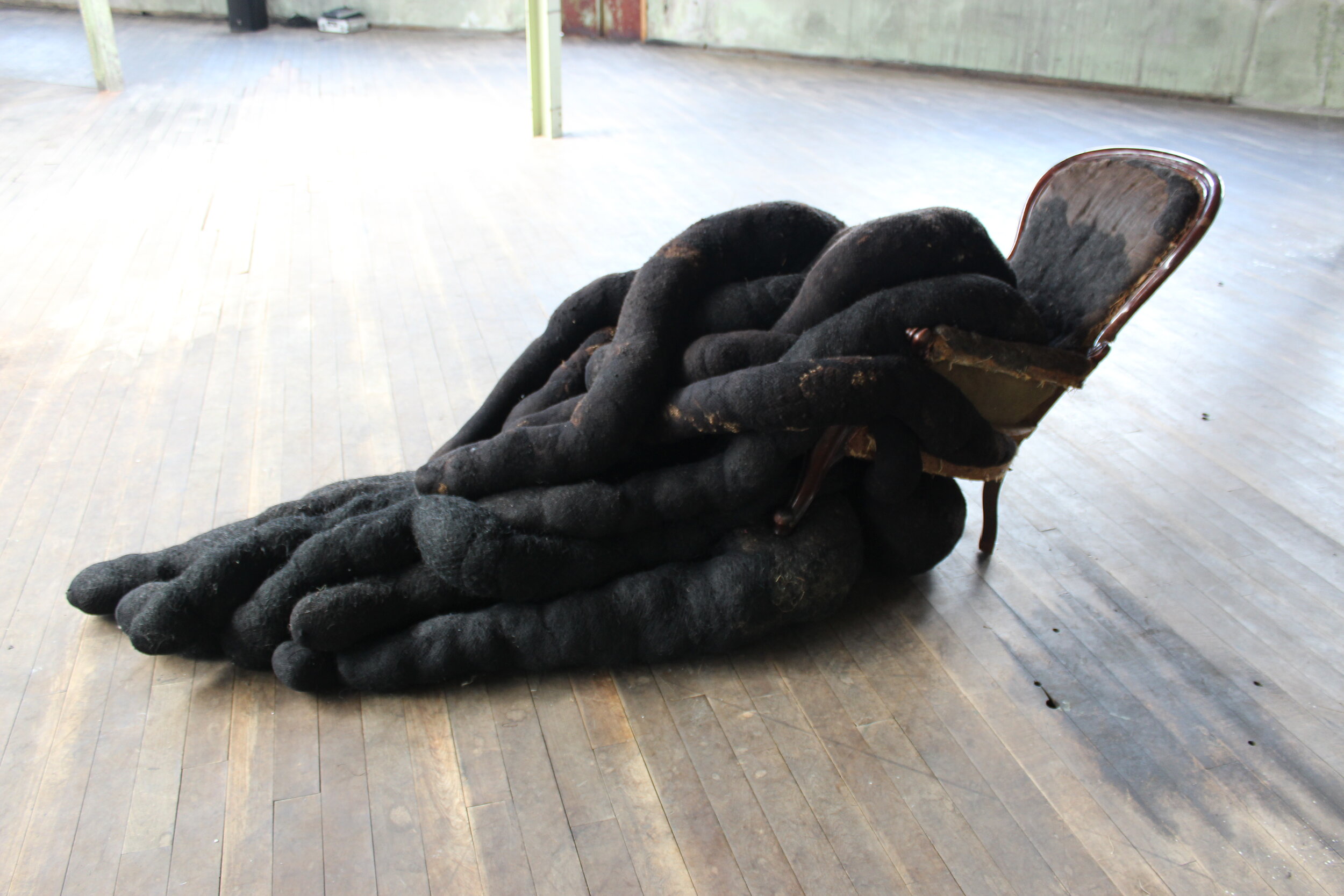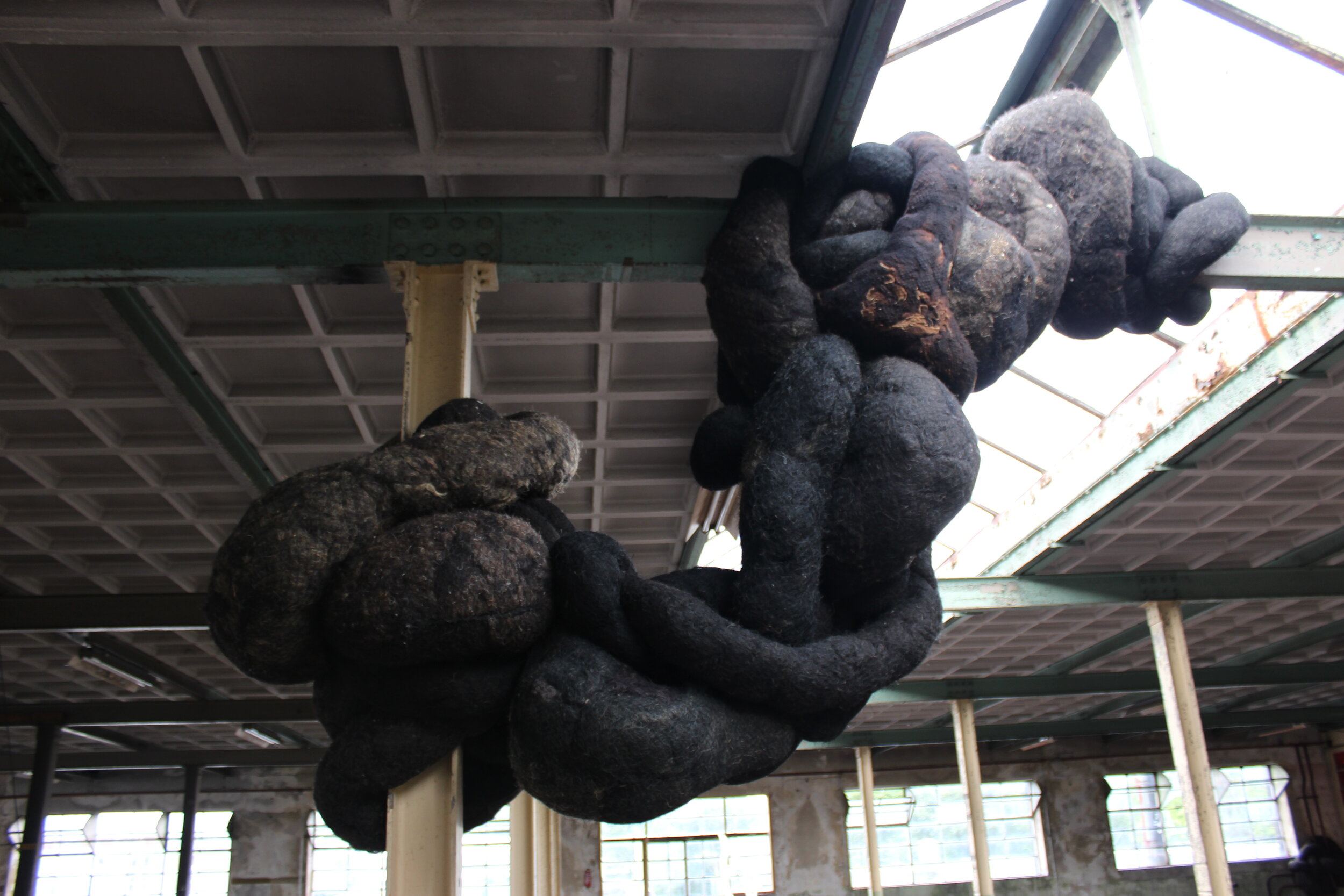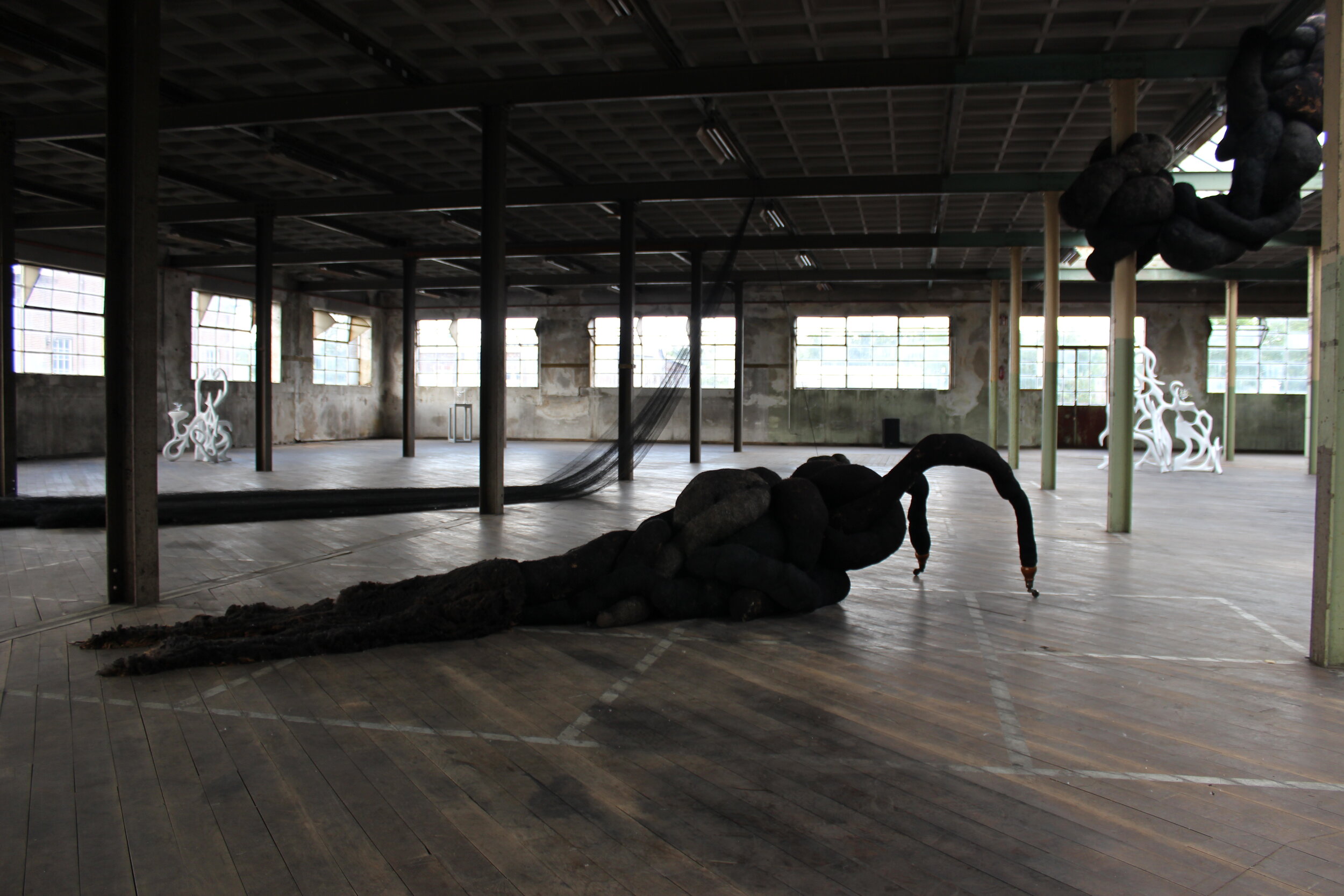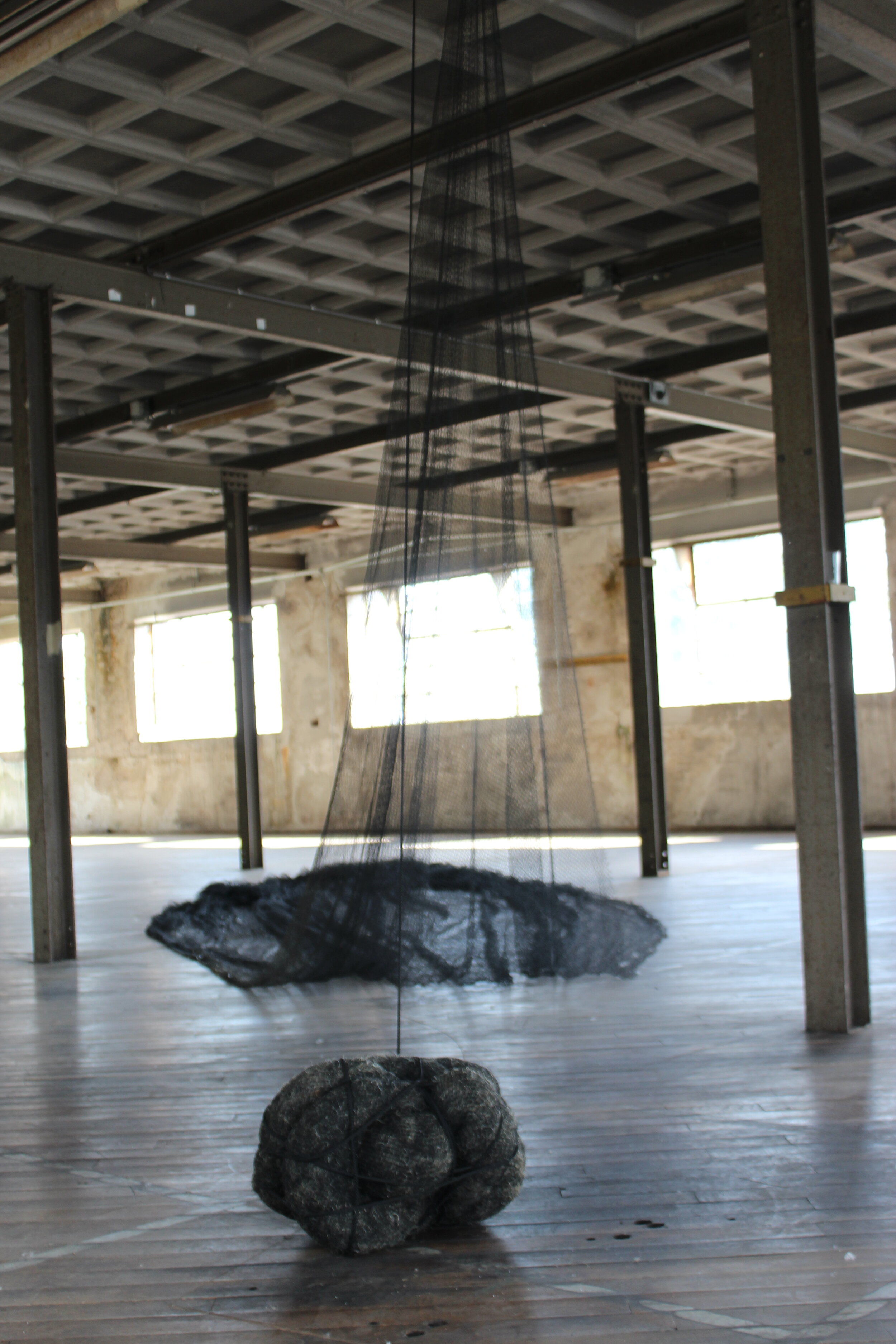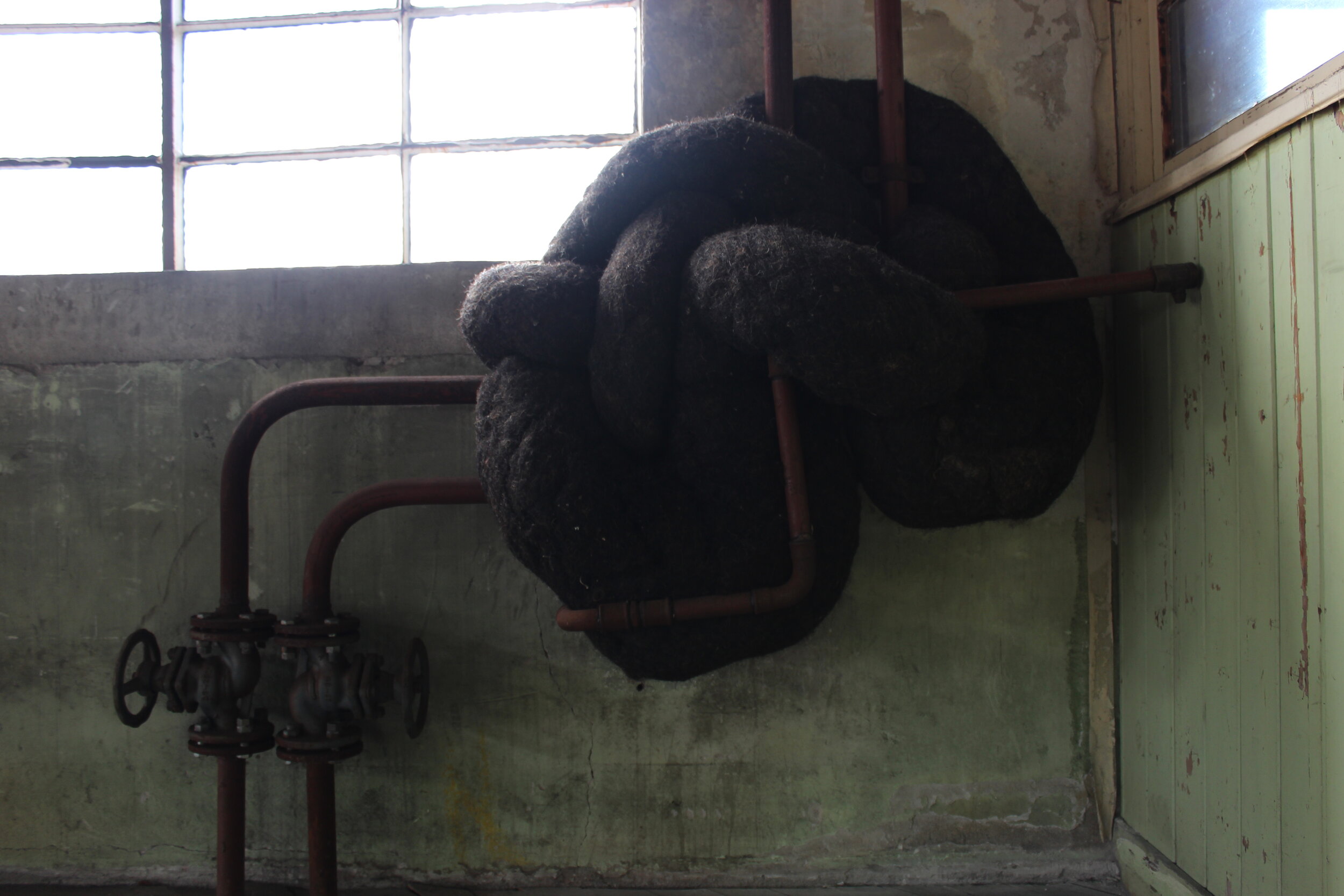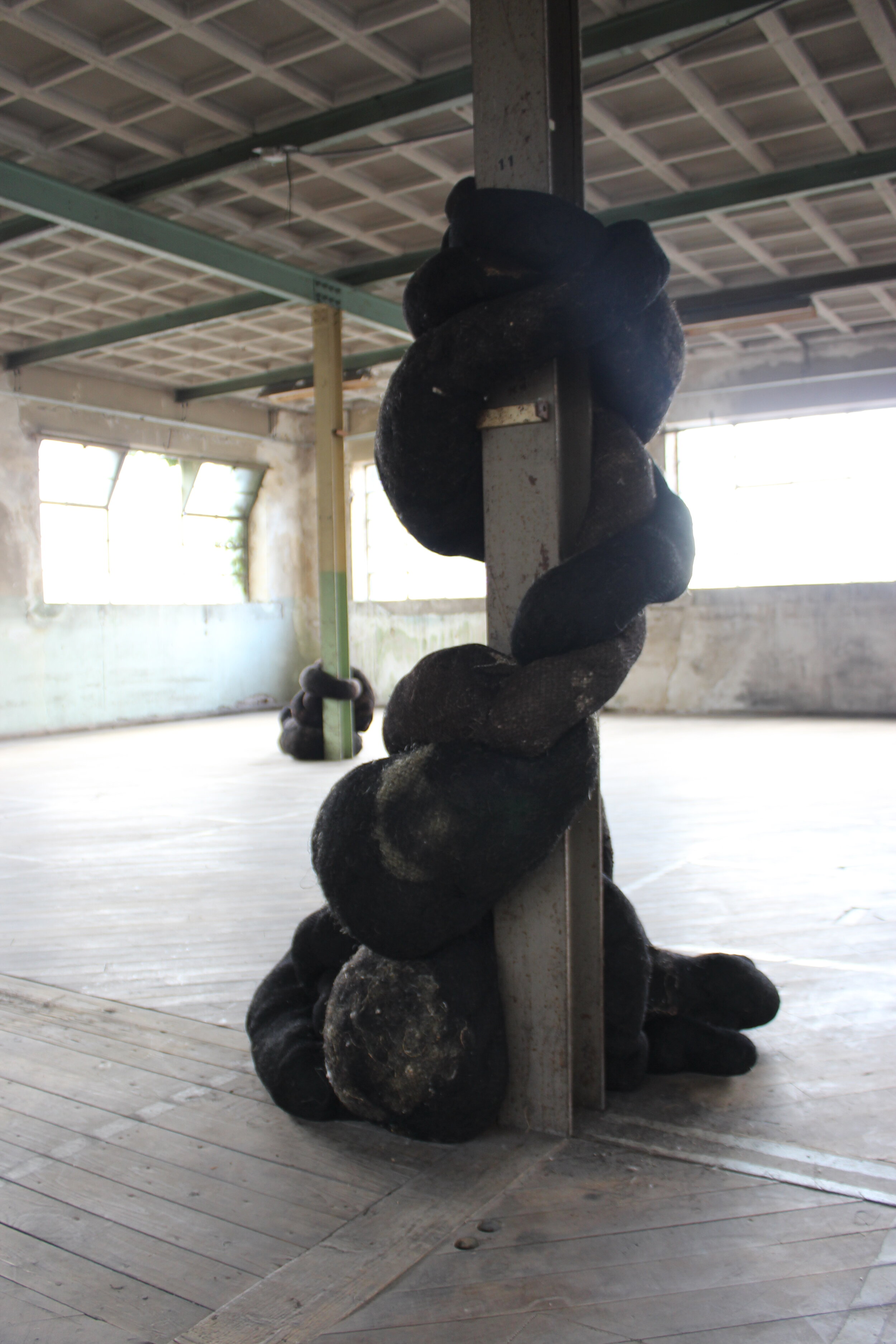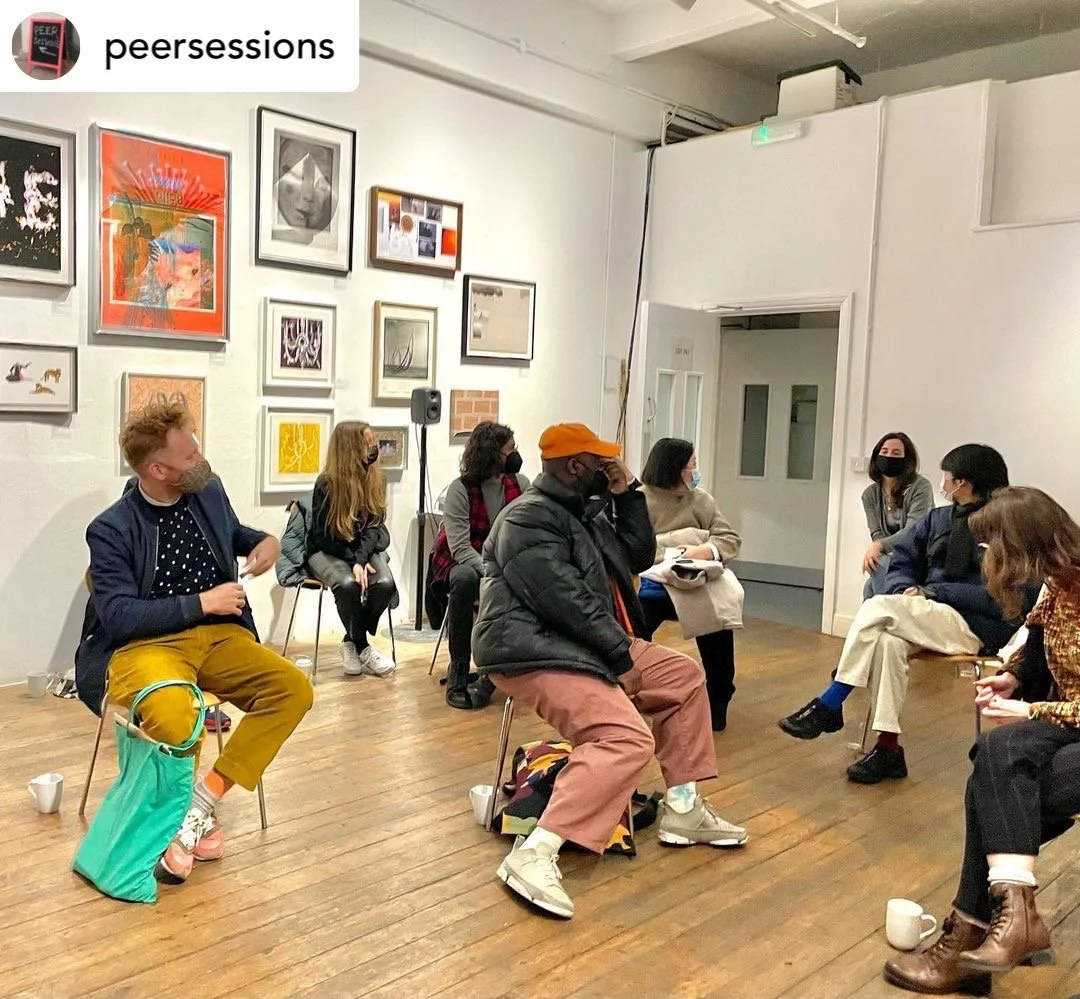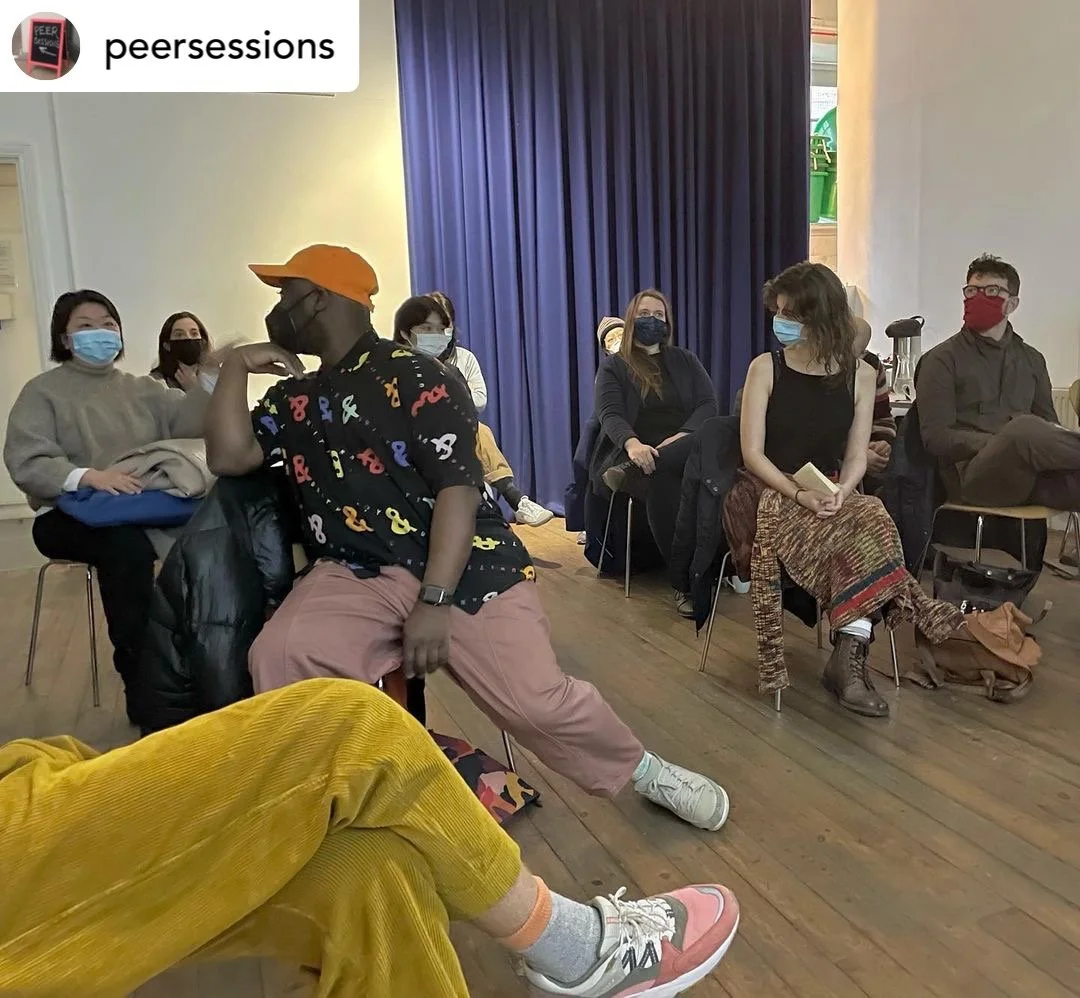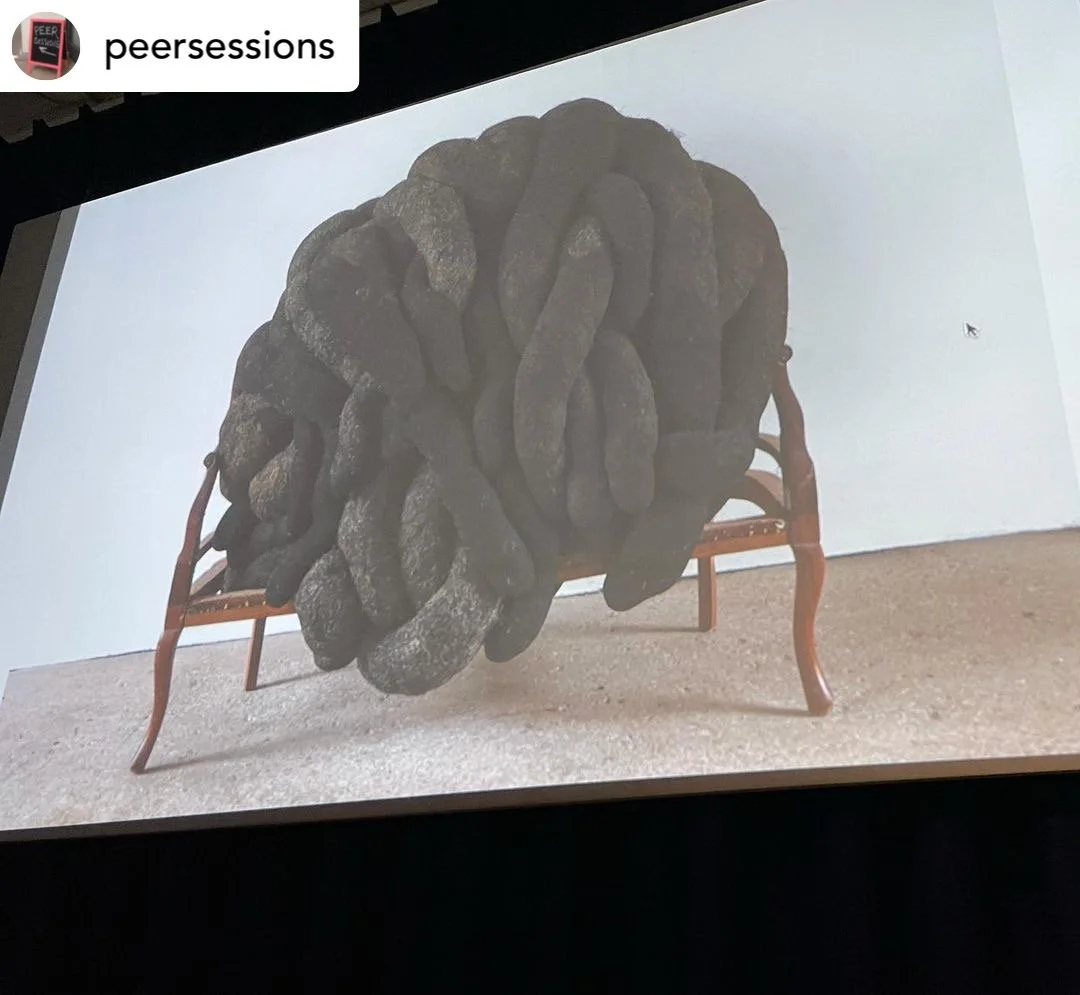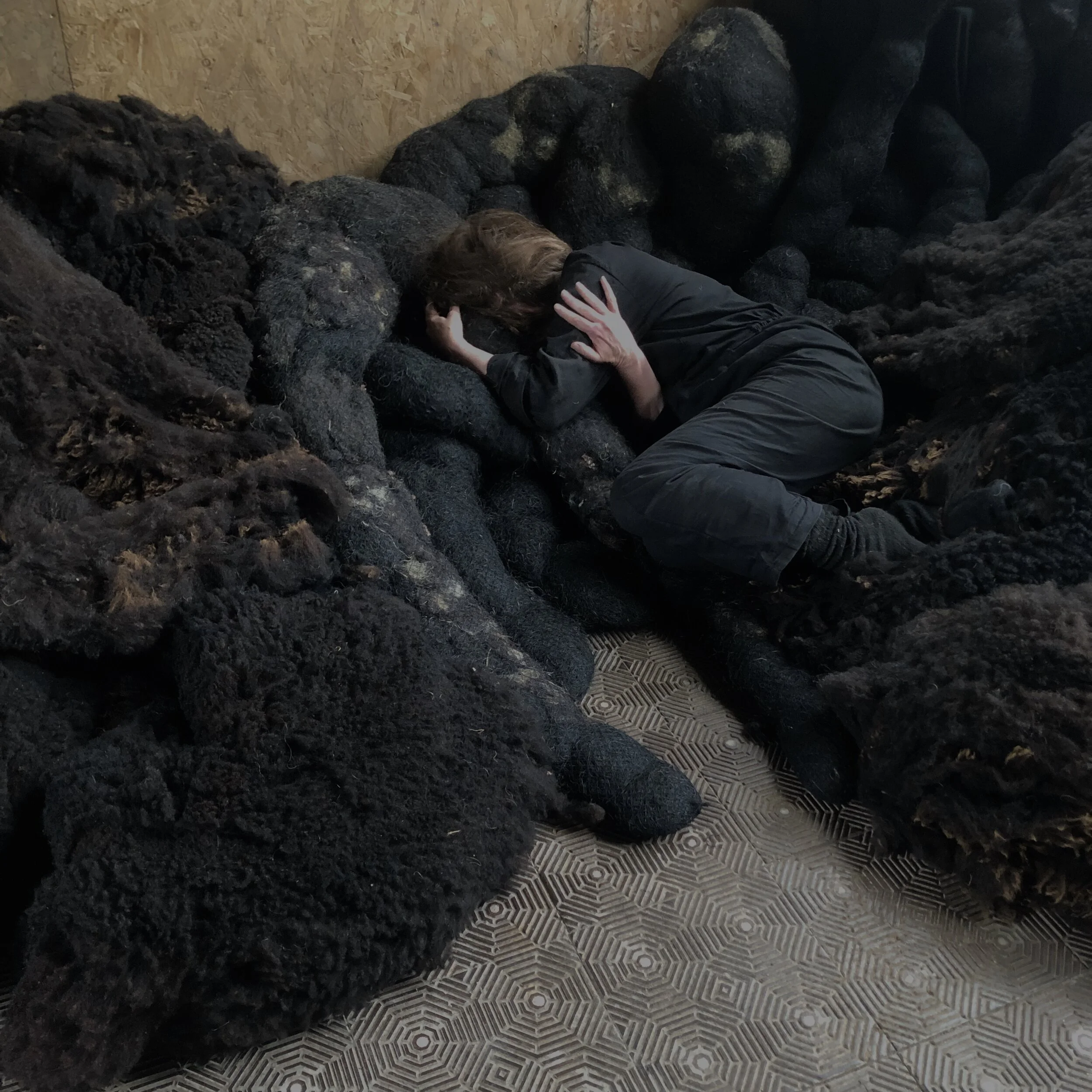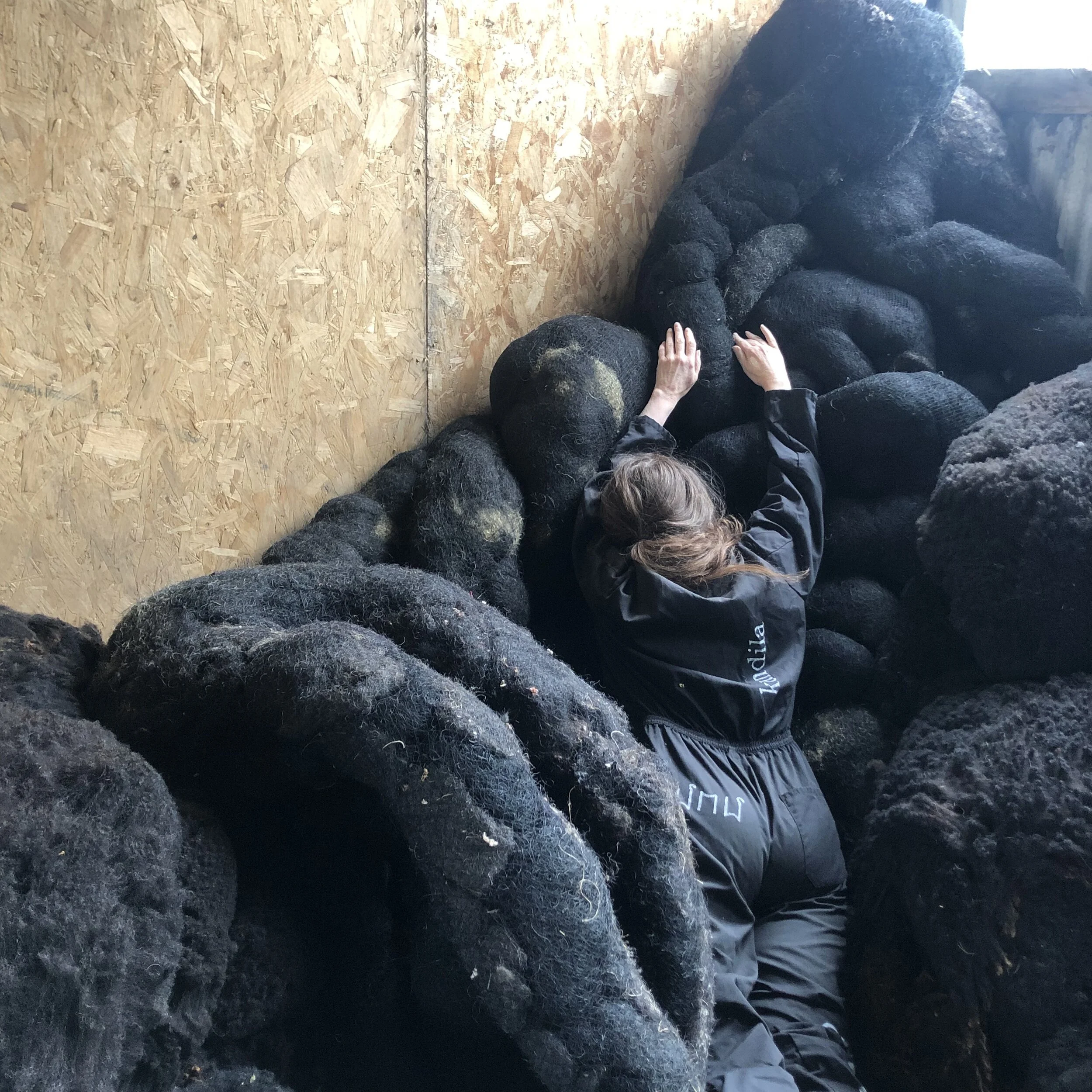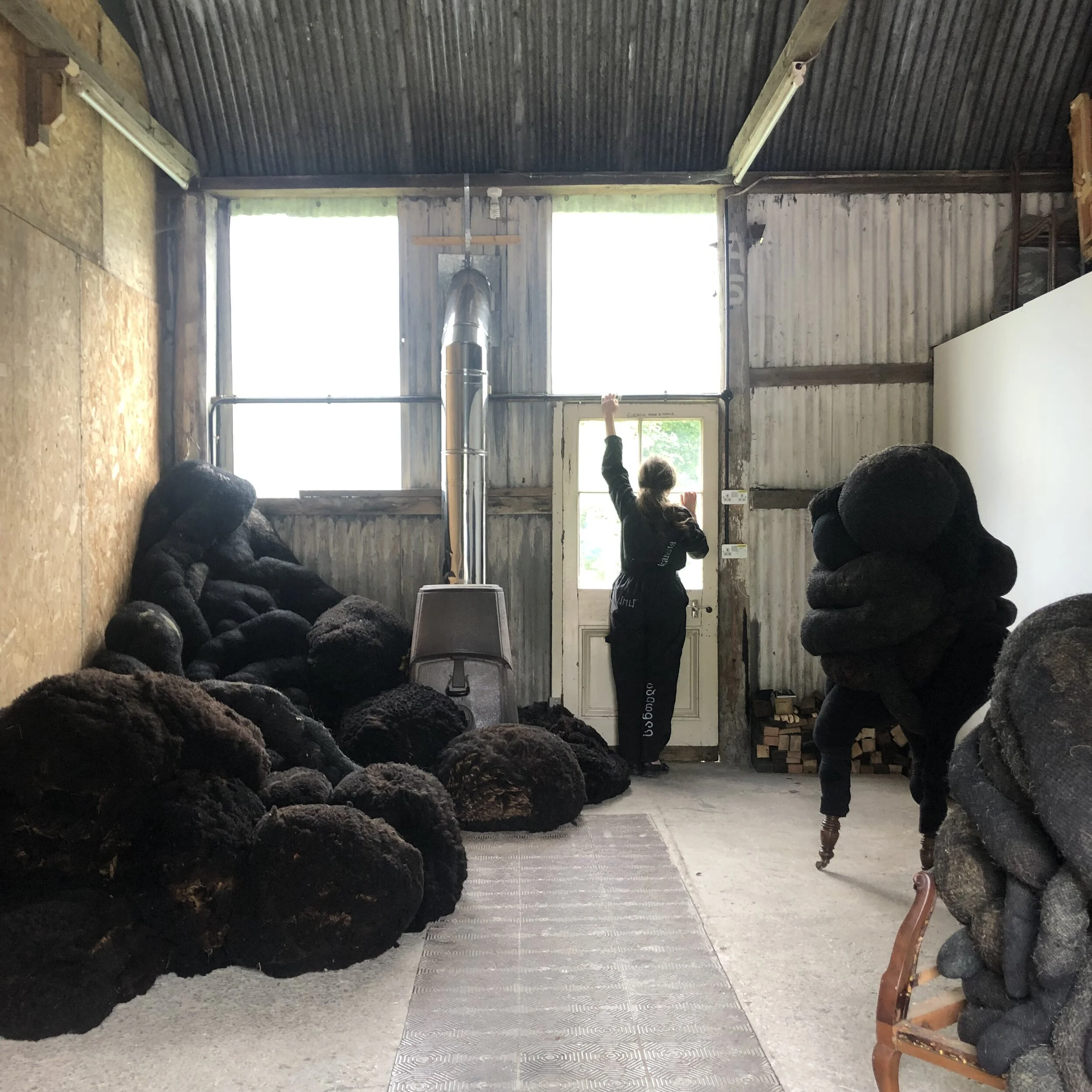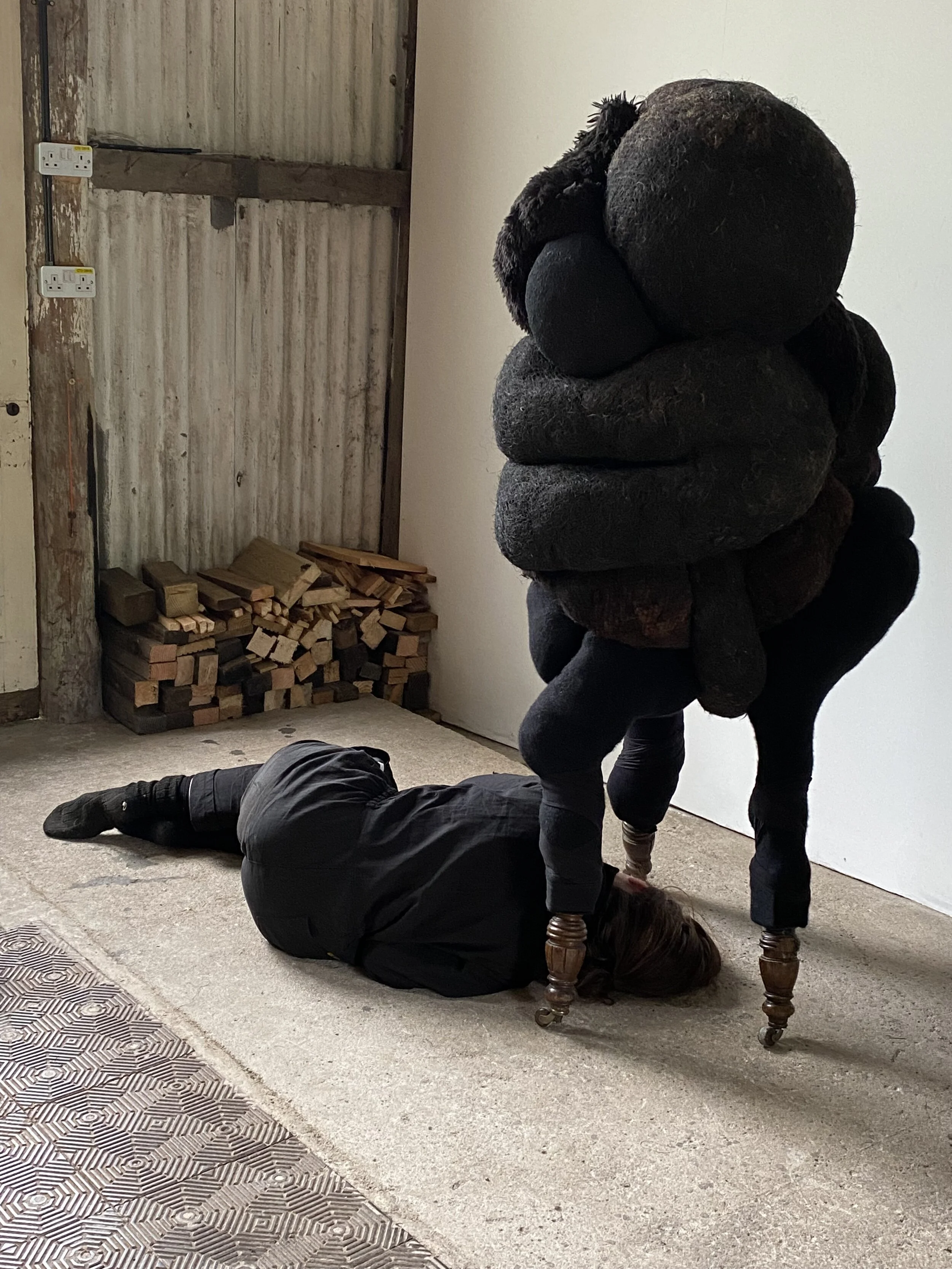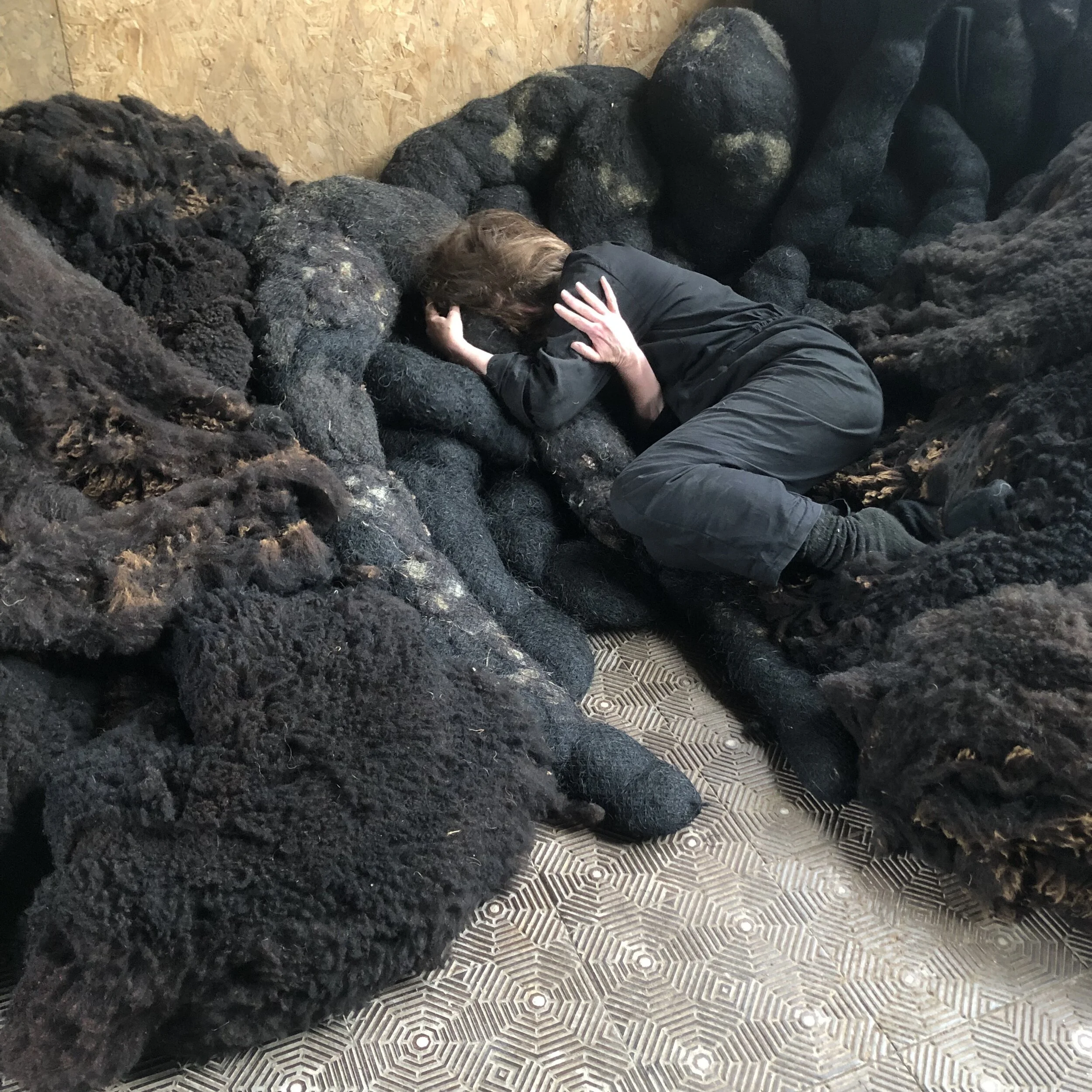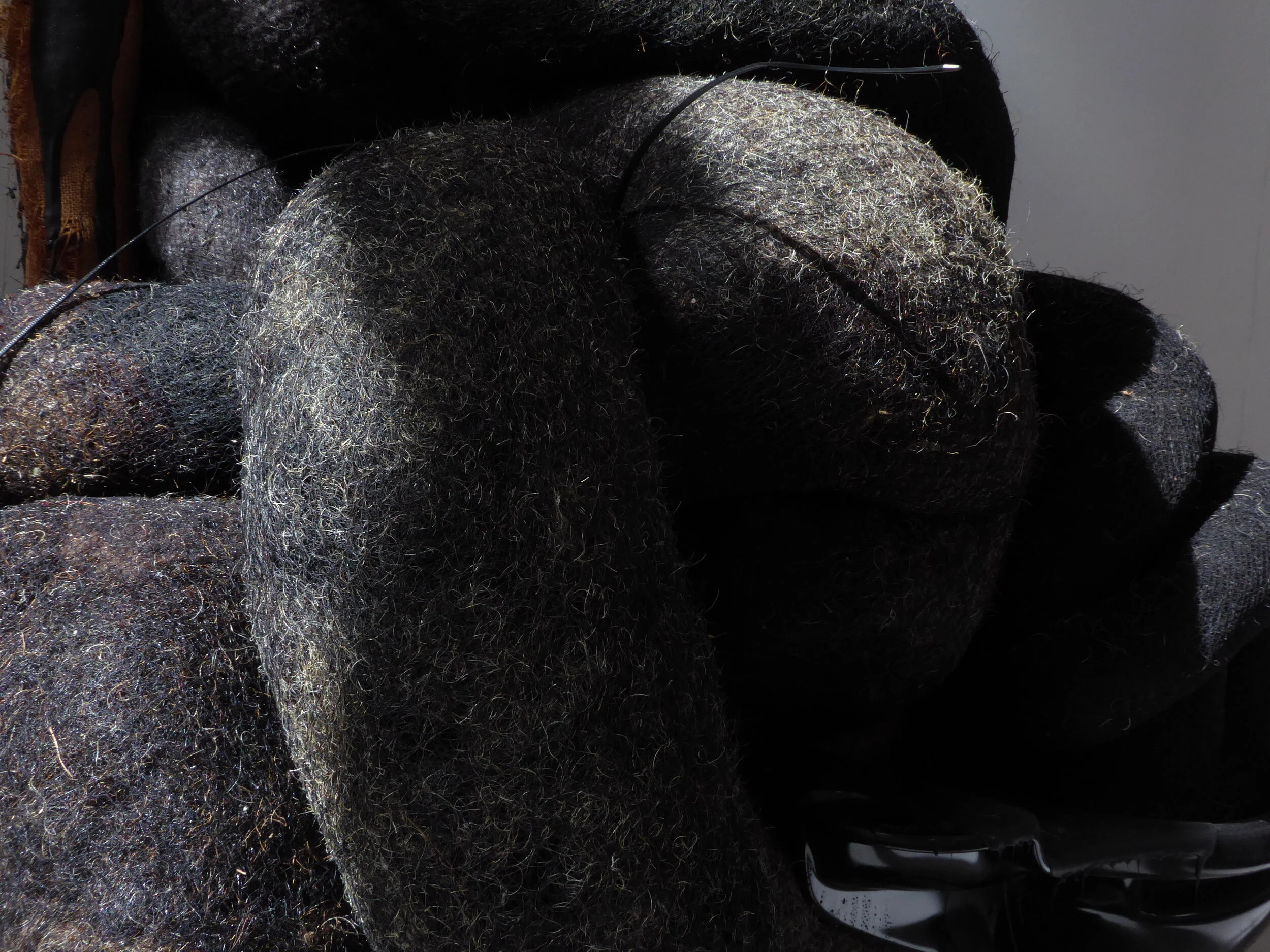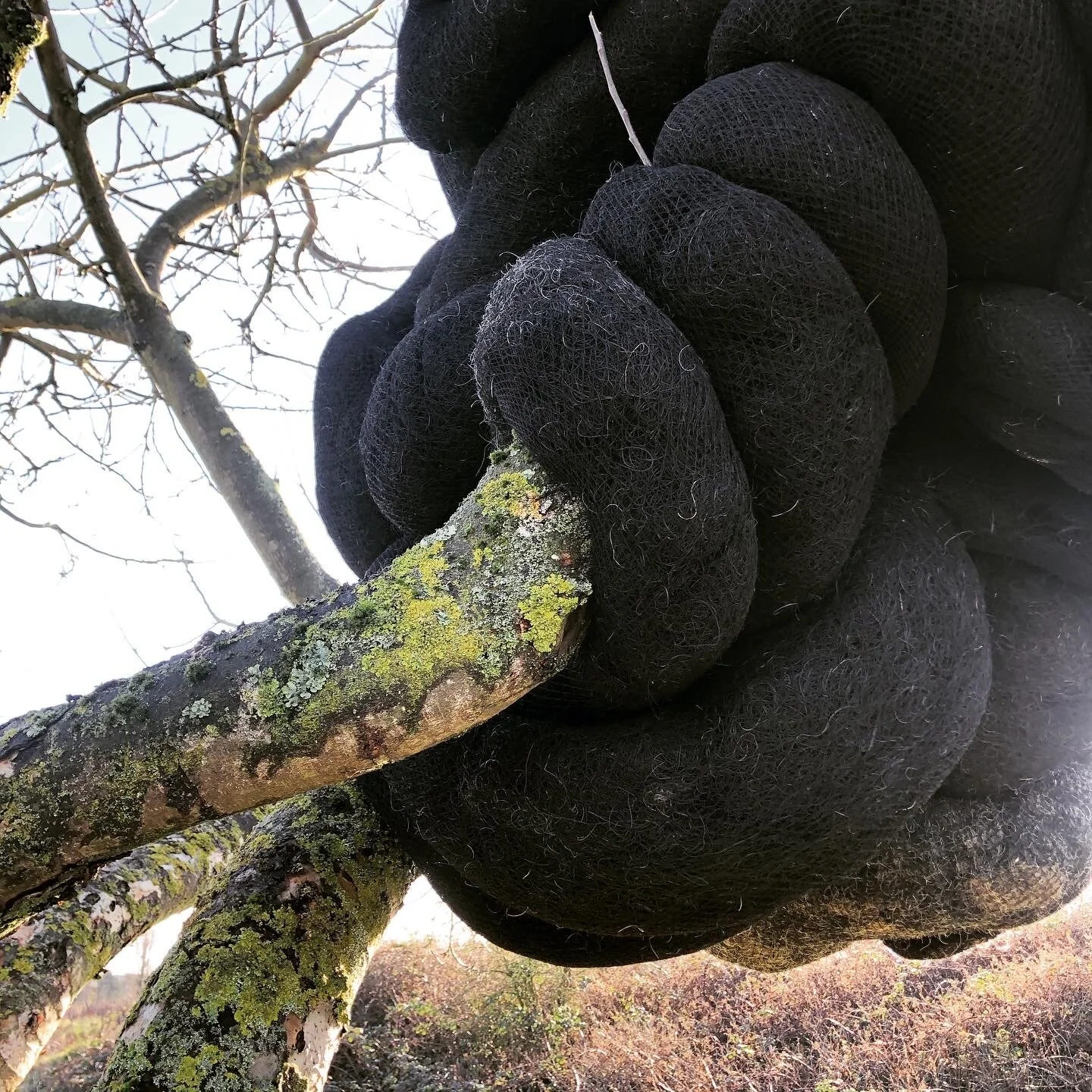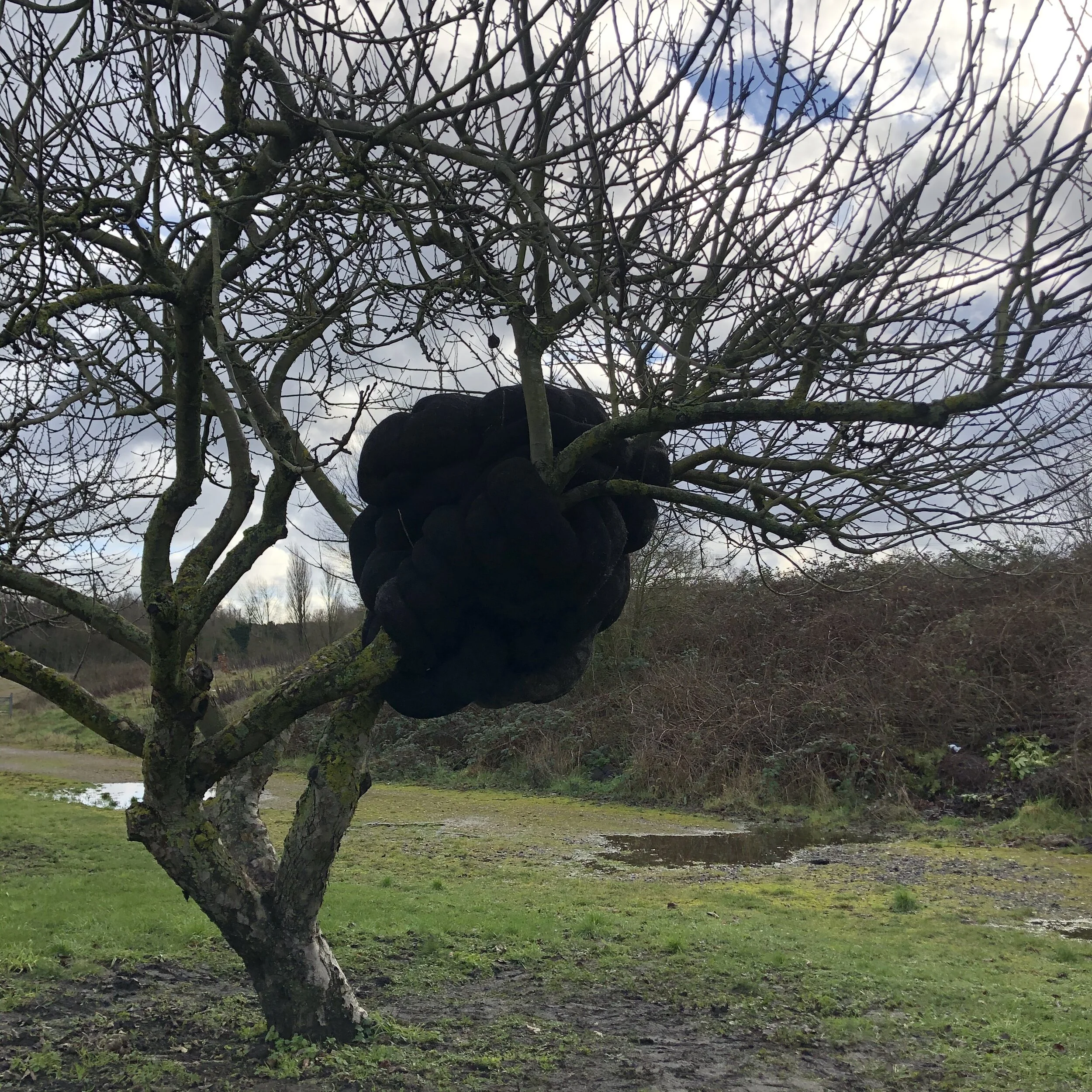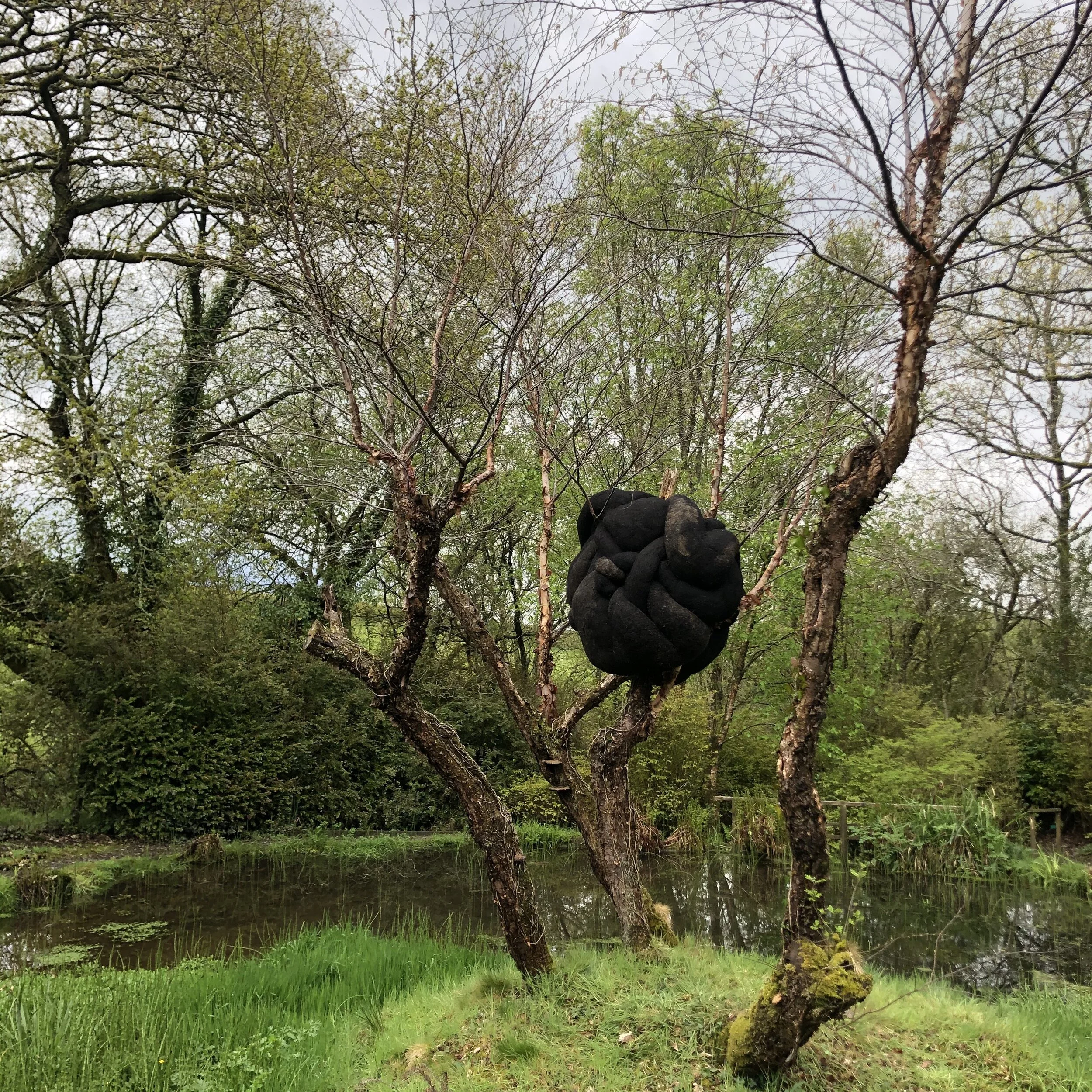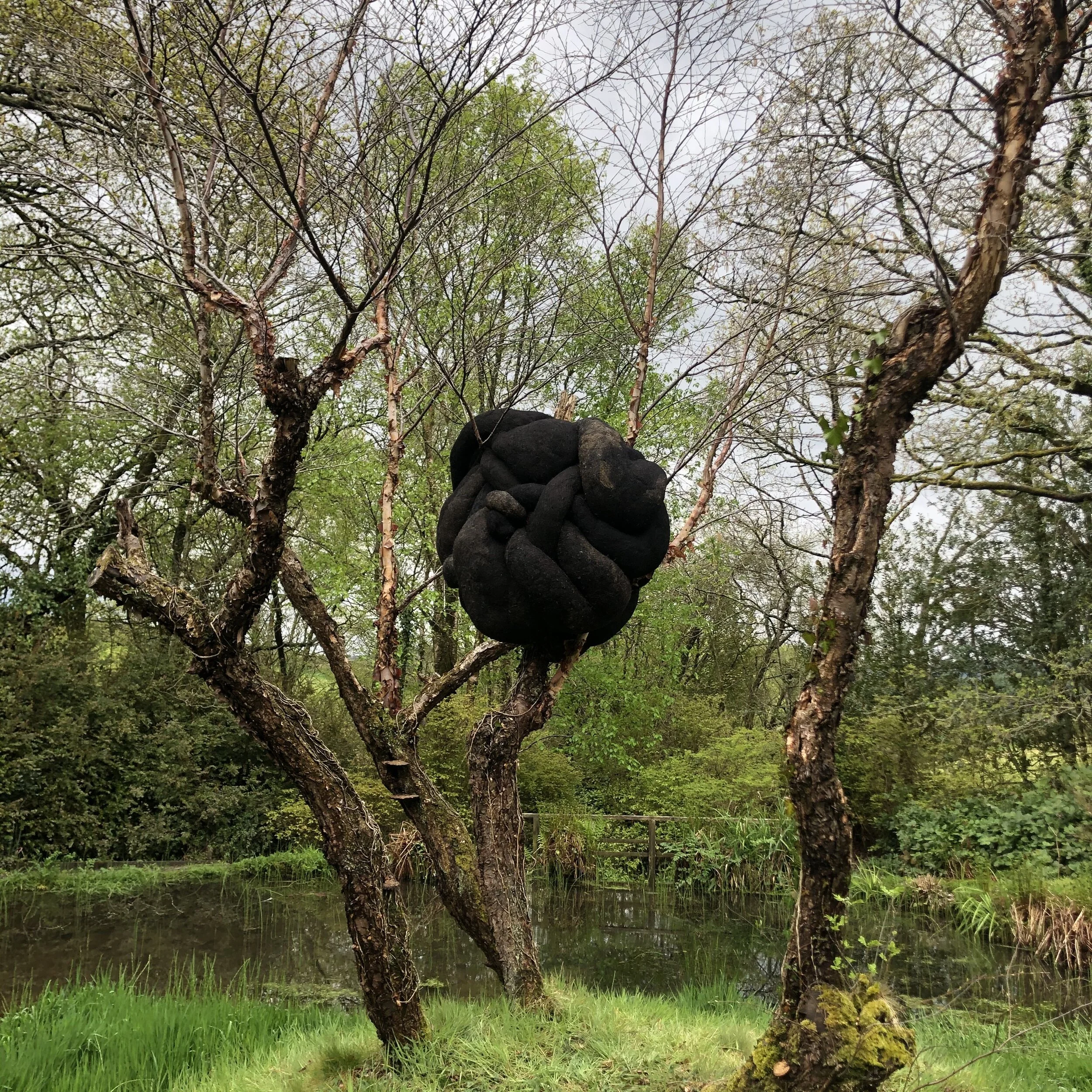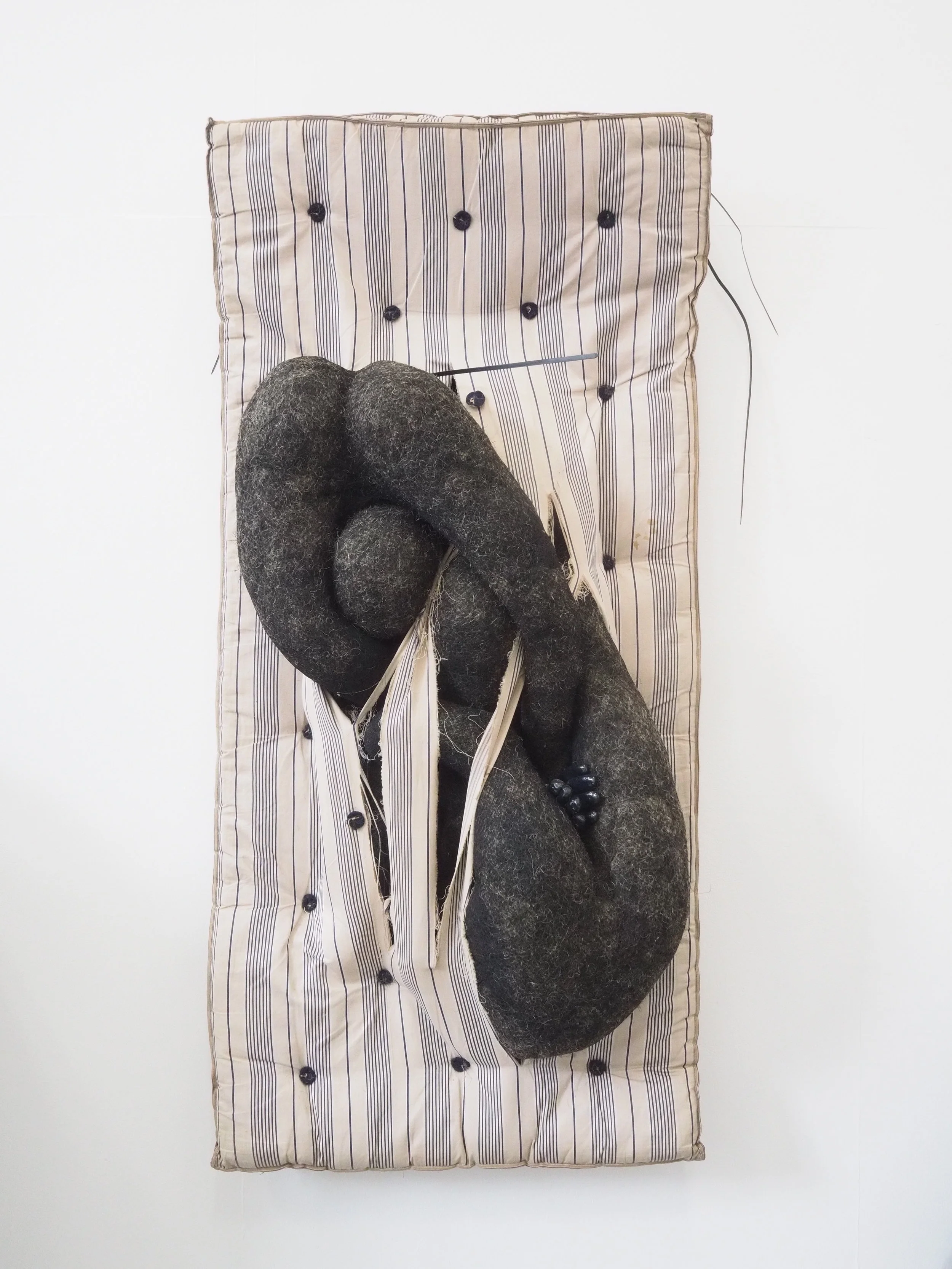CARVALHO PARK NEW YORK
110 WATERBURY ST
OPENING FRIDAY, JANUARY 24 | 6—8PM | ARTIST IN ATTENDANCE
ON VIEW JANUARY 25 — MARCH 15, 2025
CARVALHO PARK unveils UK-based sculptor, Nicola Turner’s site-responsive installation, Fabric of Undoing, the setting for the gallery’s next performance series, with New York City Ballet principal, Taylor Stanley, and soloist, Alec Knight. The installation opens this evening, Friday, January 24, 6 – 8PM in the gallery’s 110 Waterbury St. space, with Turner in attendance. Stanley and Knight, who were recently featured in the Guggenheim Museum’s Works and Process program, will expand on these investigations through their engagement with Turner’s imposing sculpture. Performances will take place during the final two weeks of the exhibition in March.
In dreams, substances move differently. Solid forms appear weightless and vice versa. The living surprise us; the dead come back to life. Something heavy and viscous glides along as though set on wheels. The material world is unsettled, and it unsettles the dreamer, who wakes to a world that feels subtly transformed. We might feel a similar thrilling unease when encountering Turner’s new installation, Fabric of Undoing, which presents imposing tentacular forms animated by the glinting silver legs of disused hospital trolleys. Turner’s entities defy categorization. The sculptures are comprised of horsehair and wool encased in netting stitched into tendrils, with textured surfaces that Turner twists together into larger shapes. They are somehow creaturely despite lacking any recognizable animal or human features. They evoke an eerie landscape marked by billowing smokestacks and wooded areas in states of dereliction. Yet they are more primordial than this, more abstract. They are ooze; they are ash. They are ‘dead matter,’ as Turner says, but they’re charged with a vitality that insists on some form of afterlife.
More than anything, they are ‘tentacular figures’ to use a phrase favored by feminist philosopher Donna Haraway, with whom Turner is in active dialogue. A tentacle experiences perception tactually and reciprocally: sight and touch, subject and object, are always intertwined. Coiled around found structures, Turner’s sculptures embody Haraway’s theory of vision as a haptic entanglement with what’s seen, as a dense affective interchange rather than a ‘surveying from above’. Seen through Haraway’s lens, Turner’s mysterious organisms not only acquire a deep-sea creature’s complex sensory apparatus, but also present a subversive metaphor about the workings of sight itself. The tentacle’s expansive, grasping reach in part explains the feeling inspired by Turner’s sculpture. It’s impossible not to be engrossed in the world they inhabit, to feel addressed by them, to respond.
The dead haunt Turner’s sculptures. Though their large, coal-black protuberances look more arachnid than human, there’s an undefinable quality to them that feels fleshly. Perhaps it’s a ghost of their origins. Turner salvages her horsehair from old mattresses. The bed is an archive of the sleeper: it holds her most intense moments as well as her most forgettable and habitual. Many begin and end their lives there: it’s a stage for birth and death. But the bed is also an anchor, a place to round off each day in preparation for another. Turner guts the mattresses as you might a fish, but it’s the innards she’s interested in. Masses of horsehair form tendrils that reach up and grasp outwards, grafted onto metal structures that are set in motion on ambulatory fixtures. Metal legs give the impression of floating, lifting the material from the ground like a fog that hangs over a field at dawn. But the steel frames themselves invite attention, are saturated with memory in much the same way as the mattresses. The use of these trolleys brings a human presence into the installation and underlines the biomorphic nature of Turner’s forms. They also gloss Turner’s technique of stitching materials together as a reparative act, and suggest bodies riven by sutured wounds.
The gallery in which the installation resides occupies an old laundry. Another site of bodies in states of humdrum activity, more private histories and memories. Coincidently, Turner’s studio was also once a laundry: she is familiar with the space’s ghosts. If a laundry is tasked with erasing the visible traces of the body, then Turner has turned the site on its head. Turner’s installation is an accumulation of a collective body’s affects and associations, stories, impressions and sensations. Turner gives these states concrete ciphers: she gives them the heft of an animal’s pelt and the agility of anything on wheels. She invites us to watch them move, to be moved by them and move with them.
IMAGES //
Nicola Turner, Fabric of Undoing, 2025, wool, horsehair, coir, net, metal, and rubber, site-responsive installation
Artist portrait of Nicola Turner, by Se Yoon Park, New York, 2025
Images courtesy of the artist and CARVALHO PARK, New York










